Sheryl Sandberg
description: American technology executive, activist, and authors
188 results
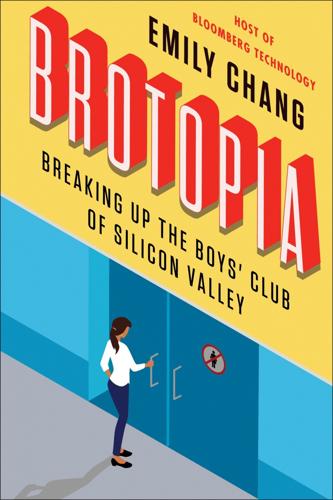
Brotopia: Breaking Up the Boys' Club of Silicon Valley
by
Emily Chang
Published 6 Feb 2018
on the wrong side of history: Richard Branson and Sheryl Sandberg, “Sheryl Sandberg and Richard Branson: Balancing Act (04/24),” interview by author, Bloomberg, April 23, 2015, video, 20:53, https://www.bloomberg.com/news/videos/2015-04-25/sheryl-sandberg-richard-branson-balancing-act-04-24-. Under her direction, Facebook’s revenues: Matt Rosoff, “Look at How Much Sheryl Sandberg Has Done for Facebook,” Business Insider, Mar. 23, 2016, http://www.businessinsider.com/sheryl-sandberg-8-years-at-facebook-2016-3. not to “lean back”: Sheryl Sandberg, “Why We Have Too Few Women Leaders,” TED talk, Dec. 21, 2010, video, 14:58, https://www.ted.com/talks/sheryl_sandberg_why_we_have_too_few_women_leaders.
…
The Twitter tiff resurfaced: Shyam Sankar, “The Case Against Work- Life Balance: Owning Your Future,” shyamsankar.com, Nov. 16, 2015, http://shyamsankar.com/the-case-against-work-life-balance-owning-your-future. In a 2012 interview: Sheryl Sandberg, “I Am Leaving Work at 5:30p,” Makers, 2012, https://www.makers.com/moments/leaving-work-530pm. “couldn’t have gotten more publicity”: Sarah Frier, “How Sheryl Sandberg’s Manifesto Drives Facebook,” Bloomberg, April 27, 2017, https://www.bloomberg.com/news/features/2017-04-27/how-sheryl-sandberg-s-sharing-manifesto-drives-facebook. “Thank you, we’re all leaving”: Ibid. hide her exit time: Ibid. “Of course I do”: Sheryl Sandberg, “Sheryl Sandberg: Bloomberg Studio 1.0 (Full Show),” interview by author, Bloomberg, Aug. 9, 2017, video, 24:16, https://www.bloomberg.com/news/videos/2017-08-10/sheryl-sandberg-bloomberg-studio-1-0-full-show-video.
…
Form 10-K for the Fiscal Year Ended Dec. 31, 2014, Feb. 6, 2015, https://www.sec.gov/Archives/edgar/data/1288776/000128877615000008/goog2014123110-k.htm. Sandberg’s first assignment: Kashmir Hill, “Sheryl Sandberg to Harvard Biz Grads: ‘Find a Rocket Ship,’” Forbes, May 24, 2012, https://www.forbes.com/sites/kashmirhill/2012/05/24/sheryl-sandberg-to-harvard-biz-grads-find-a-rocket-ship. She went on to create: “Facebook Names Sheryl Sandberg Chief Operating Officer,” Facebook Newsroom, March 4, 2008, https://newsroom.fb.com/news/2008/03/facebook-names-sheryl-sandberg-chief-operating-officer. “I think the thing”: Wojcicki, interview by author, Bloomberg, Nov. 14, 2016. “something out of a rebooted soap opera”: Reed Albergotti, “Google Reckoning with History of Interoffice Romance by Top Execs,” The Information, Nov. 29, 2017, https://www.theinformation.com/google-reckoning-with-history-of-interoffice-romance-by-top-execs.
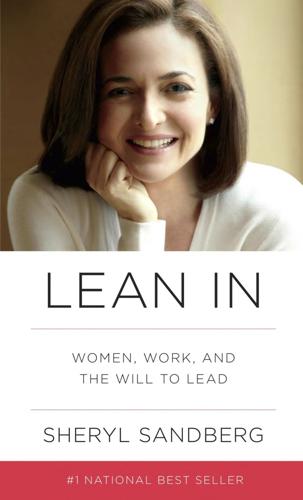
Lean In: Women, Work, and the Will to Lead
by
Sheryl Sandberg
Published 11 Mar 2013
The article “Sheryl Sandberg Is the Valley’s ‘It’ Girl—Just Like Kim Polese Once Was” can be found at the end of Eric Jackson, “Apology to Sheryl Sandberg and to Kim Polese [Updated],” Forbes, May 23, 2012, http://www.forbes.com/sites/ericjackson/2012/05/23/apology-sheryl-sandberg-kim-polese/. 8. Kim Polese, “Stop Comparing Female Execs and Just Let Sheryl Sandberg Do Her Job,” Forbes, May 25, 2012, http://www.forbes.com/sites/carolinehoward/2012/05/25/stop-comparing-female-execs-and-just-let-sheryl-sandberg-do-her-job/. 9. Jackson, “Apology to Sheryl Sandberg and to Kim Polese [Updated].” 10.
…
Sheryl Sandberg is donating all of her income from this book to establish Lean In, a nonprofit organization that encourages women to lean in to their ambitions. For more information, please visit www.aaknopf.com Lean In By Sheryl Sandberg Reading Group Guide ABOUT THIS READING GROUP GUIDE The questions, discussion topics, and reading list that follow are intended to enhance your reading group’s discussion of Lean In: Women, Work, and the Will to Lead, by Facebook COO Sheryl Sandberg. ABOUT THE BOOK Sheryl Sandberg—Facebook COO, ranked eighth on Fortune’s list of the 50 Most Powerful Women in Business—has become one of America’s most galvanizing leaders, and an icon for millions of women juggling work and family.
…
This is not just unfair to the individuals but reinforces the stigma that successful women are unlikeable. A perfect and personal example occurred in May 2012, when a Forbes blogger posted an article entitled “Sheryl Sandberg Is the Valley’s ‘It’ Girl—Just Like Kim Polese Once Was.” He began his comparison by describing Kim, an early tech entrepreneur, as a “luminary” in the mid-1990s who never really earned her success, but was “in the right place at the right time [and was] young, pretty and a good speaker.” The blogger then argued, “I think Polese is a good cautionary tale for … Sheryl Sandberg.”7 Ouch. Kim and I had never met or spoken before this incident, but she defended both of us. In a published response, she described reading the blog post and how her “immediate thought was—how sad.

The New Prophets of Capital
by
Nicole Aschoff
Published 10 Mar 2015
See the work of Alan Finlayson on “Bonoism.” 8Barbara Jeanne Fields, “Slavery, Race and Ideology in the United States of America,” New Left Review 1:181, 1990, 110. 9The 2006 film written by and starring Žižek, A Pervert’s Guide to Ideology, offers a concise explanation of his views on ideology. 10Pierre Bourdieu, “A Reasoned Utopia and Economic Fatalism,” New Left Review 1: 227, 1998, 125–30, quoted in Weeks, The Problem with Work, pp. 180–81. 1 Sheryl Sandberg and the Business of Feminism Fifteen years ago Silicon Valley was inhabited by packs of brogrammers slouching around in hoodies and sandals, hacking code on bean bag chairs, and regurgitating South Park jokes. In the intervening years the start-up scene has changed—a bit. Computer technology has been mainstreamed, and women have joined the high-tech gold rush. Tech mammoths like Facebook, IBM, Yahoo!, Hewlett-Packard, and Google all employ women in leading roles. But despite the power of women like Sheryl Sandberg, Ginni Rometty, Marissa Meyer, Meg Whitman, and Susan Wojcicki, the gender balance in Silicon Valley and the larger corporate world remains highly skewed, and most leadership positions are held by men.
…
Other titles in this series available from Verso Books: Playing the Whore by Melissa Gira Grant Utopia or Bust by Benjamin Kunkel Strike for America by Micah Uetricht The New Prophets of Capital by NICOLE ASCHOFF For Ila and Simi First published by Verso 2015 © Nicole Aschoff 2015 All rights reserved The moral rights of the author have been asserted 1 3 5 7 9 10 8 6 4 2 Verso UK: 6 Meard Street, London W1F 0EG US: 20 Jay Street, Suite 1010, Brooklyn, NY 11201 www.versobooks.com Verso is the imprint of New Left Books ISBN-13: 978-1-78168-810-6 (PB) eISBN-13: 978-1-78168-811-3 (US) eISBN-13: 978-1-78168-812-0 (UK) British Library Cataloguing in Publication Data A catalogue record for this book is available from the British Library Library of Congress Cataloging-in-Publication Data A catalog record for this book is available from the Library of Congress Typeset in Fournier MT by Hewer Text UK Ltd, Edinburgh Printed in the US by Maple Press Contents Introduction: Storytelling 1.Sheryl Sandberg and the Business of Feminism 2.Capital’s Id: Whole Foods, Conscious Capitalism and Sustainability 3.The Oracle of O: Oprah and the Neoliberal Subject 4.The Gates Foundation and the Rise of Philanthrocapitalism 5.Looking Forward Further Reading Acknowledgements Introduction: Storytelling We are all storytellers.
…
According to a 2013 Gallup Poll, 80 percent of Americans are dissatisfied with the way the nation is handling poverty and more than half of the middle class names financial insecurity as their chief concern.6 In this moment, a new generation of storytellers has emerged to tell us what’s wrong with society and how to fix it. The most powerful of these storytellers aren’t poor or working people, they are the super-elite. The loudest critics of capitalism these days are people like Bill Gates, who decries poverty and inequality, and Sheryl Sandberg, who laments persistent gender divides, but they are not calling for an end to capitalism. Instead, they are part of a chorus of new elite voices calling for a different kind of capitalism. The long list of “new” capitalisms being touted or disdained—conscious capitalism, creative capitalism, sustainable capitalism, equitable capitalism, philanthrocapitalism, eco-capitalism, inclusive capitalism, crony capitalism—illustrates the widespread feeling that capitalism needs to change.

An Ugly Truth: Inside Facebook's Battle for Domination
by
Sheera Frenkel
and
Cecilia Kang
Published 12 Jul 2021
“I lost the coin flip as to where we were going to live”: Peter Holley, “Dave Goldberg, Husband of Facebook Exec Sheryl Sandberg, Dies Overnight, Family Says,” Washington Post, May 2, 2015. 5. Sandberg thrived: Brad Stone and Miguel Helft, “Facebook Hires a Google Executive as No. 2,” New York Times, March 5, 2008. 6. She met Zuckerberg at a Christmas party: Patricia Sellers, “The New Valley Girls,” Fortune, October 13, 2008. 7. “That they would cross paths was inevitable”: Kara Swisher, “(Almost) New Facebook COO Sheryl Sandberg Speaks!” AllThingsD, March 10, 2008. 8. Federal Trade Commission issued self-regulatory principles: FTC, “FTC Staff Proposes Online Behavioral Advertising Principles,” press release, December 20, 2007. 9.
…
Sandberg will face mounting pressure”: Vauhini Vara, “Facebook CEO Seeks Help as Site Grows,” Wall Street Journal, March 5, 2018. 11. in a winding Facebook post: Andrew Bosworth, Facebook post, December 1, 2007. 12. demeaning comments casually made about women: Katherine Losse, The Boy Kings (New York: Simon and Schuster, 2012), p. 24. 13. On Sandberg’s first day: Bianca Bosker, “Mark Zuckerberg Introduced Sheryl Sandberg to Facebook Staff by Saying They Should All ‘Have a Crush on’ Her,” Huffington Post, June 26, 2012, https://www.huffpost.com/entry/mark-zuckerberg-sheryl-sandberg-facebook-staff-crush_n_1627641. 14. A month into her new job: David Kirkpatrick, The Facebook Effect (New York: Simon and Schuster, 2010), p. 257, and interviews. 15. In 1994, an engineer at Netscape had created the “cookie”: Janet Guyon, “The Cookie that Ate the World,” Techonomy, December 3, 2018. 16. ad business was essentially outsourced to Microsoft: Katharine Q.
…
“We connect people”: Ryan Mac, Charlie Warzel and Alex Kantrowitz, “Growth at Any Cost: Top Facebook Executive Defended Data Collection in 2016 Memo—and Warned that Facebook Could Get People Killed,” Buzzfeed News, March 29, 2018. 11. When, in June 2012: Facebook, “Facebook Names Sheryl Sandberg to Its Board of Directors,” press release, June 25, 2012. 12. “Her name has become a job title”: Miguel Helft, “Sheryl Sandberg: The Real Story,” Fortune, October 10, 2013. 13. She was cultivating new ad tools: Keith Collins and Larry Buchanan, “How Facebook Lets Brands and Politicians Target You,” New York Times, April 11, 2018. 14. It was also working on a tool called “Lookalike Audiences”: David Cohen, “Facebook Officially Launches Lookalike Audiences,” Adweek, March 19, 2013. 15.

Facebook: The Inside Story
by
Steven Levy
Published 25 Feb 2020
As a young lawyer, he clerked for Supreme Court Justice Antonin Scalia, and then worked on the recount that put Bush in the White House. His last job in the Bush administration was succeeding political Svengali Karl Rove as deputy chief of staff for policy. In 2011, he was an energy lobbyist when Sheryl Sandberg tapped him to be a VP of policy for Facebook. He was the ultimate Friend of Sheryl Sandberg—he had dated her at Harvard and had maintained ties to her despite their differing political affiliations. At the time Sandberg’s friend Marne Levine—a Democrat—had been running the office. She and Kaplan created a natural balance of party power.
…
CHAPTER NINE: Sheryl World “Intimacy”: Sheryl Kara Sandberg, “Economic Factors & Intimate Violence,” Harvard/Radcliffe College, March 20, 1991. Sandberg’s rise: Excellent account of Sandberg’s background in Ken Auletta, “A Woman’s Place,” The New Yorker, July 4, 2011. wedding toast: Sheryl Sandberg, Lean In: Women, Work, and the Will to Lead (Knopf, 2013), 20. Not all: John Dorschner, “Sheryl Sandberg: From North Miami Beach High to Facebook’s No. 2,” Miami Herald, February 26, 2012. Florida Gators sweatshirt: Quote from Adam J. Freed, in Brandon J. Dixon, “Leaning In from Harvard Yard to Facebook: Sheryl K. Sandberg ’91,” Harvard Crimson, May 24, 2016.
…
She discussed the loss and its consequences in interviews including Belinda Luscombe, “Life After Grief,” Time, April 13, 2017; Jessi Hempel, “Sheryl Sandberg’s Accidental Revolution,” Backchannel, April 24, 2017. prone to yelling at subordinates: This was described to me by multiple employees who worked with Sandberg. obsessed with her public image: Besides personal interviews, Sandberg’s image tending has been written about in the aftermath of Facebook’s problems. See Nick Bilton, “‘I Hope It Cracks Who She Is Wide Open’: In Silicon Valley, Many Have Long Known Sheryl Sandberg Is Not a Saint,” Vanity Fair, November 16, 2018. The aforementioned New York Times article, “Delay, Deny and Deflect,” which portrays Sandberg as culpable in the post-election saga, was a turning point in the press’s treatment of the COO.

The Start-Up of You: Adapt to the Future, Invest in Yourself, and Transform Your Career
by
Reid Hoffman
and
Ben Casnocha
Published 14 Feb 2012
Herminia Ibarra, Working Identity: Unconventional Strategies for Reinventing Your Career (Boston, MA: Harvard Business School Press, 2004), 35. 5. http://www.mhhe.com/business/management/thompson/11e/case/starbucks.html 6. http://www.jetblue.com/about/ourcompany/flightlog/index.html Chapter 3 1. Richard N. Bolles, What Color Is Your Parachute? 2011 Edition (New York: Ten Speed Press, 2011), 28. 2. Kevin Conley, “Sheryl Sandberg: What She Saw at the Revolution,” Vogue, May 2010, http://www.vogue.com/magazine/article/sheryl-sandberg-what-she-saw-at-the-revolution/ 3. Ken Auletta, “A Woman’s Place: Can Sheryl Sandberg Upend Silicon Valley’s Male-Dominated Culture?” The New Yorker, July 11, 2011, http://www.newyorker.com/reporting/2011/07/11/110711fa_fact_auletta?currentPage=all 4. http://www.businessweek.com/bwdaily/dnflash/content/mar2009/db20090316_630496.htm 5.
…
But more than just a Silicon Valley success story, the evolution of Flickr is a case study in smart adapting: its founders were in constant motion early on, tried many things to see what would work, and nimbly shifted their plans based on what they learned. These are the very same strategies that define some of the most inspiring careers. Take, for example, Sheryl Sandberg. Today, Sheryl is chief operating officer of Facebook, where she is in charge of the company’s business operations. She serves on the boards of Disney and Starbucks. Fortune named her one of the most powerful women in business. You might think someone so successful knew her goals and aspirations from day one, and followed a rigorous and ambitious career plan to achieve them.
…
Sometimes you pivot because Plan A isn’t working; sometimes you pivot because you’ve discovered a new opportunity that’s just better than what you’re doing now. In either case, don’t write out an elaborate Plan B—things will change too much after the ink dries—but do give thought to your parameters of motion and alternatives. Once you pivot to a Plan B and stick with it, that becomes your new Plan A. Twenty years ago Sheryl Sandberg’s Plan A was the World Bank. Today, her Plan A is Facebook, because it’s where she is right now. Plan Z is the fallback position: your lifeboat. In business and life, you always want to keep playing the game. If failure means you end up on the street, that’s an unacceptable failure. So what’s your certain, reliable, stable plan if all your career plans go to hell or if you want to do a major life change?

Googled: The End of the World as We Know It
by
Ken Auletta
Published 1 Jan 2009
“all things take care of themselves”: author interviews with Sheryl Sandberg, September 10, 2007, and September 18, 2008. 87 “Before Sheryl arrived”: author interview with Mary Meeker, January 23, 2009. 87 Advertising ... had not been viewed “as a priority”: author interview with Eric Schmidt, October 9, 2007. 87 offered five million dollars: author interview with Matt Cutts, August 20, 2007. 88 “Google was really trying”: author interview with Benjamin A. Schachter, February 15, 2008. 88 the effort at Sandberg was now working on: author interview with Sheryl Sandberg, October 11, 2007. 88 What Google was quietly exploring ... monitorthe results online: author interviews with Salar Kamangar, March 27, 2008; Marissa Mayer, March 25, 2008; Susan Wojcicki, April 16, 2008; Hal Varian, March 27, 2008; and Sheryl Sandberg, September 18, 2008. 90 Israeli entrepreneur Yossi Vardi : author interview with Sergey Brin, September 18, 2008; Brin interview, Haaretz.com, June 2, 2008. 90 “AdWords is brilliant”: author interview with Nathan Myhrvold, March 28, 2008. 91 The effort was led and architected by Susan Wojcicki: author interview with Susan Wojcicki, April 16, 2008. 91 “basically turned the Web into a giant Google billboard”: Danny Sullivan, quoted by Jefferson Graham, “The House That Helped Build Google,” USA Today, July 5, 2007. 9I “He and an engineer” ...
…
“: author interview with Marissa Mayer, November 4, 2008. 108 The stock reached $108.31 ... to its employees: SEC Form S-1, August 2004. 109 Even Bonnie Brown: Stefanie Olsen, CNET News, January 23, 2008. 110 ”We began as a technology company“: Google IPO, SEC form 3-1, August 2004. 110 two hundred million dollars in 2003: author interview with Benjamin Schachter, February 15, 2008. 110 ”In a second“: author interview with Matt Cutts, March 26, 2008. 111 ”suggests that while Microsoft“: John Markoff, ”Why Google Is Peering Out, at Microsoft,“ New York Times, May 3, 2004. 111”we believe that our user focus“: Google IPO, August 2004. 112 ”Being less experienced“: author interview with Larry Page, March 25, 2008. 112. ”A lot of it is common sense“: author interview with Sergey Brin, September 18, 2008. 112 ”They wanted to replicate the Stanford culture“: author interview with Ram Shriram, June 12, 2008. 112 ”They predicted things that did not make sense to me“: author interview with Urs Hölzle, September 10, 2007. 112 ”Their clear, coherent point of view“: author interview with Terry Winograd, September 25, 2007. 112”The number of times they made me change my opinion“: author interview with Rajeev Motwani, October 12, 2007. 113 the construct framed by Eric Steven Raymond: Eric Steven Raymond, ”The Cathedral and the Bazaar,“ found at http:/wwwcatb.org/-esr/writings/cathedral-bazaar/. 113 Page and Brin actually have more experience: author interview with Eric Schmidt, September 12, 2007. 113 ”quintessential Montessori kids“: author interview with Marissa Mayer, August 21, 2007. 114 ”question everything“: Larry Page speech at University of Michigan, 2005. 114 ”There’s kind of a strength in the duo“: author interview with Bill Campbell, October 8, 2007. 114 ”We agree eighty to ninety percent of the time“: author interview with Sergey Brin, March 26, 2008. 114 ”If we both feel the same way ... we’re probably right“: author interview with Larry Page, March 25, 2008. 114 strength ”to be different“: author interview with Susan Wojcicki, September 10, 2007. 114 ”having a mental sparring partner“: author interview with Jen Fitzpatrick, September 12, 2007. 114 ”Having the two of them being completely in sync“: author interview with Omid Kordestani, September 12, 2007. 114 ”to force a conversation“: author interview with Eric Schmidt, September 12, 2007. 115 ”Some companies would be worried“: author interview with Sheryl Sandberg, October 11, 2007. 115 ”people saw values we believed in“: author interview with Craig Newmark, January 11, 2008. 115 the reason the troika ”works is that whoever you go to“: author interview with Sheryl Sandberg, October 11, 2007. 116 ”Eric is the leader for the company“: author interview with Sergey Brin, October 11, 2007. 116 ”I can’t imagine“: author interview with Bill Campbell, October 8, 2007. 116 ”A balanced appreciation“: author interview with Dan Rosensweig, February 27, 2008. 116 ”It borders on insulting“: author interview with Elliot Schrage, October 12, 2007. 116 ”catcher“: author interviews with Eric Schmidt, September 12, 2007, and October 9, 2007. 116 At the press lunch: post-Zeitgeist lunch attended by author, October 11, 2007. 117 ”the best business partner“: annual Google shareholder meeting attended by author, May 10, 2007. 117 ”Eric is the person who said“: author interview with Sheryl Sandberg, October 11, 2007. 117 ”I’ve become a huge cheerleader“: author interview with Michael Moritz, March 31, 2009. 118 an incident at the 2005 World Economic Forum: author interview with Andrew Lack, October 4, 2007. 118 ”no recollection of the specific incident“: e-mail from Arthur Sulzberger, Jr., April 29, 2009. 118 ”Schmidt confirmed Lack’s account“: author interview with Eric Schmidt, April 1, 2009. 118 ”Here’s the part you don’t see“: author interview with Bill Campbell, April 1, 2009. 119 ”We’re smart guys“: author interview with Terry Winograd, September 25, 2007. 120 ”privacy concerns“: Google IPO, August 2004.
…
When he’s not in the room, he’s still there because people ask, ‘What would Bill say?’” IN SCHMIDT AND CAMPBELL, Google had executives who could work with the founders and mentors the whole organization to work together. Now it needed to recruit senior executives. With an assist from Campbell, one of Schmidt’s initial targets was Sheryl Sandberg, who had just concluded her service as chief of staff to treasury secretary Lawrence Summers. The Clinton administration was winding down, and Sandberg, who was just thirty-one, was much in demand. Sandberg has short dark hair, an angular face that is softened by a bright smile, and an engaging manner that makes strangers feel comfortable.

The Only Game in Town: Central Banks, Instability, and Avoiding the Next Collapse
by
Mohamed A. El-Erian
Published 26 Jan 2016
Scott Page, “Making the Difference: Applying a Logic of Diversity,” Academy of Management Perspectives, November 2007. 5. Mohamed El-Erian, “Why CEOs Should Read Sheryl Sandberg’s Book,” Fortune, March 11, 2013, http://fortune.com/2013/03/11/why-ceos-should-read-sheryl-sandbergs-lean-in/. 6. Sheryl Sandberg, Lean In: Women, Work, and the Will to Lead (New York: Knopf, 2013). CHAPTER 32: TRANSLATING AWARENESS INTO OPTIONALITY, RESILIENCE, AND AGILITY 1. Eric Schmidt and Jonathan Rosenberg, How Google Works (New York: Grand Central, 2014). 2. Ibid. 3. Sheryl Sandberg, Lean In: Women, Work, and the Will to Lead (New York: Knopf, 2013). 4. Mohamed A. El-Erian, “Getting Real About Diversity,” American Banker, September 18, 2013, http://www.americanbanker.com/magazine/123_10/pimcos-mohamed-el-erian-on-getting-real-about-diversity-1062068-1.html.
…
There are many anecdotal examples of biases repressing constructive dialogue within companies and the subsequent decision-making process. Writing in a New York Times series on “Women and Work,” Sheryl Sandberg and Adam Grant discussed something that I suspect quite a few of us have witnessed in Anglo-Saxon corporate cultures—that is, often inadvertent (but sometimes quite advertent) group behaviors that inhibit women from freely expressing their views in meetings even though they have consequential things to say. Sheryl Sandberg and Adam Grant note, “We’ve seen it happen again and again. When a woman speaks in a professional setting, she walks a tightrope. Either she’s barely heard or she’s judged as too aggressive.
…
When a woman speaks in a professional setting, she walks a tightrope. Either she’s barely heard or she’s judged as too aggressive. When a man says virtually the same thing, heads nod in appreciation for his fine idea. As a result, women often decide that saying less is more.”4 Sheryl Sandberg and Adam Grant observe that this phenomenon is not limited to the corporate world. They point to research by Victoria Brescoll, a Yale psychologist who documented similar behaviors and outcomes in the U.S. Senate. In both cases, remedial action includes two minimum steps: first, recognizing that this is an issue that needs to be addressed lest it continue to undermine the effectiveness of the collective; and second, making sure that very deliberate steps are taken (repeatedly) to that effect.
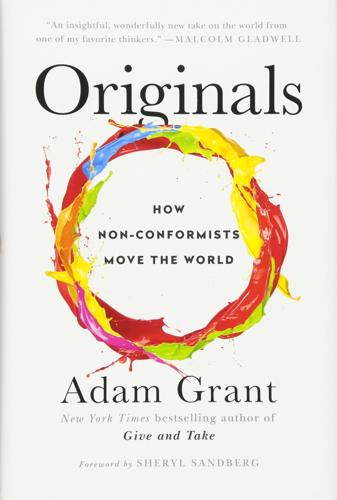
Originals: How Non-Conformists Move the World
by
Adam Grant
Published 2 Feb 2016
New Yorker, August 24, 2009, www.newyorker.com/magazine/2009/08/24/plugged-in. Peter Thiel . . . Lord of the Rings: Julian Guthrie, “Entrepreneur Peter Thiel Talks ‘Zero to One,’” SFGate, September 21, 2014, www.sfgate.com/living/article/Entrepreneur-Peter-Thiel-talks-Zero-to-One-5771228.php. Sheryl Sandberg . . . A Wrinkle in Time: “Sheryl Sandberg: By the Book,” New York Times, March 14, 2013, www.nytimes.com/2013/03/17/books/review/sheryl-sandberg-by-the-book.html. Jeff Bezos . . . A Wrinkle in Time: “Jeffrey P. Bezos Recommended Reading”: www.achievement.org/autodoc/bibliography/WrinkleinT_1. Mark Zuckerberg . . . Ender’s Game: Alyson Shontell, “The Books That Inspired Tech’s Most Influential People,” Business Insider, June 26, 2013, www.businessinsider.com/the-books-that-influenced-techs-most-influencial-ceos-2013-6?
…
strong gender-role stereotypes: Anne M. Koenig, Alice H. Eagly, Abigail A. Mitchell, and Tiina Ristikari, “Are Leader Stereotypes Masculine? A Meta-Analysis of Three Research Paradigms,” Psychological Bulletin 127 (2011): 616–42. “labeled bossy”: Sheryl Sandberg, Lean In: Women, Work, and the Will to Lead (New York: Knopf, 2013). voicing new revenue-generating ideas: Sheryl Sandberg and Adam Grant, “Speaking While Female,” New York Times, January 12, 2015, www.nytimes.com/2015/01/11/opinion/sunday/speaking-while-female.html; Adam M. Grant, “Rocking the Boat But Keeping It Steady: The Role of Emotion Regulation in Employee Voice,” Academy of Management Journal 56 (2013): 1703–23.
…
Also by Adam Grant Give and Take: Why Helping Others Drives Our Success VIKING An imprint of Penguin Random House LLC 375 Hudson Street New York, New York 10014 penguin.com Copyright © 2016 by Adam Grant Foreword copyright © 2016 by Sheryl Sandberg Penguin supports copyright. Copyright fuels creativity, encourages diverse voices, promotes free speech, and creates a vibrant culture. Thank you for buying an authorized edition of this book and for complying with copyright laws by not reproducing, scanning, or distributing any part of it in any form without permission.
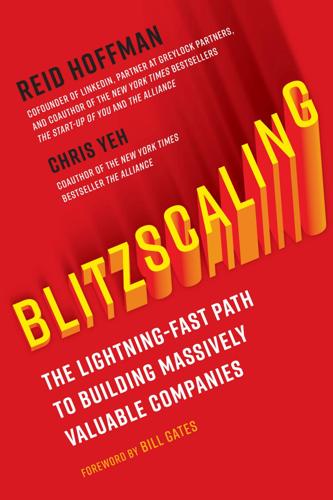
Blitzscaling: The Lightning-Fast Path to Building Massively Valuable Companies
by
Reid Hoffman
and
Chris Yeh
Published 14 Apr 2018
Fortunately, Facebook founder Mark Zuckerberg made two important moves: he personally led a shift from desktop-first to mobile-first, and he hired Sheryl Sandberg as the company’s COO, who in turn built Facebook into an advertising sales juggernaut. Growth rose back into the triple-digit range, and, by 2010, these moves had pushed Facebook’s revenues to over $2 billion. We’ll examine both of these key moves in greater detail later in the book, with Facebook’s shift to mobile featured in our analysis of Facebook’s business model, and Facebook’s hiring of Sheryl Sandberg in the section on the key transition from contributors to managers to executives. Apple illustrates how this overlap looks over multiple decades.
…
Brian Chesky at Airbnb, another amazing learning machine, does something similar, seeking advice from mentors like Sheryl Sandberg and Warren Buffett. Brian told our class at Stanford, “If you find the right source, you don’t have to read everything. I’ve had to learn to seek out the experts. I wanted to learn about safety, so I went to George Tenet, the ex-head of the CIA. Even if you can’t meet the best, you can read about the best.” Brian lives this advice; he got many of his ideas by assiduously poring over biographies of great entrepreneurs like Walt Disney. Another helpful approach to seeking mentorship is to get help from experts who might be less famous than the Sheryl Sandbergs of the world, but who have faced (and solved) similar issues in the recent past.
…
Yet even if you can’t land an ideal candidate, second best is to hire a manager who has previously worked with successful executives in a very rapidly growing company, or an executive who earned her executive experience at a larger or more traditional business but who also worked at a blitzscaling start-up at another time in her career. Consider the case of Facebook. Mark Zuckerberg hired Sheryl Sandberg in part because she had experience blitzscaling as an executive, having helped her group within Google grow from a handful of people to over four thousand employees. And one of the key things Sheryl did that helped Facebook scale up to the Village, City, and Nation stages was to fill critical leadership positions with other experienced scale executives, such as Mike “Schrep” Schroepfer as VP of engineering and David Ebersman as CFO.

I Hate the Internet: A Novel
by
Jarett Kobek
Published 3 Nov 2016
Women’s lack of upper body strength was only one explanation of the social ordering. There were hundreds of ideas for why women were treated like crap but very few practical solutions. A little bit before Adeline made her unforgivable mistake, a billionaire named Sheryl Sandberg wrote a book called Lean In: Women, Work, and the Will to Lead. Sheryl Sandberg didn’t have much eumelanin in the basale stratum of her epidermis. In her book, Sheryl Sandberg proposed that women who weren’t billionaires could stop being treated like crap by men in the workplace if only they smiled more and worked harder and acted more like the men who treated them like crap. Billionaires were always giving advice to people who weren’t billionaires about how to become billionaires.
…
Nothing says individuality like 500 million consumer electronics built by slaves. Welcome to Hell. Then there were the minor divinities. Like Sheryl Sandberg, the billionaire who worked for Facebook and thought that the way women who weren’t billionaires could get respect in the workplace was to act more like the men that disrespected them in the workplace. Before she was at Facebook, she was at Google, and Christine decided that Sheryl Sandberg was like Iris, the messenger of the Gods. It seemed like Sheryl Sandberg had spent her whole professional life doing nothing but delivering messages. Like Ray Kurzweil, who Christine identified with Dolos, the Greek spirit of trickery and guile.
…
Zadie Smith’s essay pointed out that the questions Facebook asked of its users appeared to have been written by a twelve year old. But these questions weren’t written by a twelve year old. They were written by Mark Zuckerberg. Mark Zuckerberg was a billionaire. Mark Zuckerberg was such a billionaire that he was the boss of other billionaires. He was Sheryl Sandberg’s boss. J. Karacehennem thought that he knew something about Facebook that Zadie Smith, in her decency, hadn’t imagined. “The thing is,” said J. Karacehennem, whose last name was Turkish for Black Hell, “that we’ve spent like, what, two or three hundred years wrestling with existentialism, which really is just a way of asking, Why are we on this planet?

The End of Men: And the Rise of Women
by
Hanna Rosin
Published 31 Aug 2012
But this again is a narrow reading of the situation. If Sandberg is watching over Facebook’s maternity leave policy, the receptionist has as much to gain from that as Sheryl does. If women want the future to contain fewer energy-draining meetings and a more family-friendly workplace, you need more women to make it to Sheryl Sandberg’s level. Not just for Sheryl Sandberg’s benefit, but for the millions of women who have a lot less power to make demands. You need women at the top to remake the workplace in their own image. THE GOLD MISSES ASIAN WOMEN TAKE OVER THE WORLD One of the propositions considered by the Asian Debate Institute held in Seoul in the winter of 2012 is whether quotas are necessary for women to advance in Asian society.
…
a massive Department of Education study, a child’s grades: “Fathers’ Involvement in Their Children’s Schools,” National Center for Education Statistics 98-091, September 1997, http://nces.ed.gov/pubs98/fathers/. memorable phrase “Don’t leave before you leave”: Sheryl Sandberg, “Why We Have Too Few Women Leaders,” TED Talk, December 2010. http://www.ted.com/talks/sheryl_sandberg_why_we_have_too_few_women_leaders.html. “There was no having it all”: Barbara Walters, interview with Jane Pauley in 2003, quoted in Pamela Paul, “For Anchorwomen, Family Is Part of the Job,” The New York Times, December 9, 2011. as Fox’s Megyn Kelly did: Back from maternity leave on August 8, 2011, Megyn Kelly showed a photograph of her baby daughter, Yardley Evans, to viewers of America Live.
…
“We are not producing enough men or women who know how to program.” The women of Silicon Valley do not live in such a shiny detached bubble that they don’t recognize sexism. You would have to be blind to walk through the offices of Facebook or Google every day and not notice the sea of mostly male programmers, or the “frat house,” as Sheryl Sandberg, COO of Facebook, calls it. It’s more that they think of sexism in the same way people in London must think about bad weather: It’s an omnipresent and unpleasant fact of life, but it shouldn’t keep you from going about your business. The women don’t deny sexism, but rather will themselves to ignore it so they can get their work done.

Zucked: Waking Up to the Facebook Catastrophe
by
Roger McNamee
Published 1 Jan 2019
I think the day will come, sooner than I could have imagined just two years ago, when the world will recognize that the value users receive from the Facebook-dominated social media/attention economy revolution masked an unmitigated disaster for our democracy, for public health, for personal privacy, and for the economy. It did not have to be that way. It will take a concerted effort to fix it. When historians finish with this corner of history, I suspect that they will cut Facebook some slack about the poor choices that Zuck, Sheryl Sandberg, and their team made as the company grew. I do. Making mistakes is part of life, and growing a startup to global scale is immensely challenging. Where I fault Facebook—and where I believe history will, as well—is for the company’s response to criticism and evidence. They had an opportunity to be the hero in their own story by taking responsibility for their choices and the catastrophic outcomes those choices produced.
…
The most likely case is that the technology and business model of Facebook and others will continue to undermine democracy, public health, privacy, and innovation until a countervailing power, in the form of government intervention or user protest, forces change. * * * — TEN DAYS BEFORE the November 2016 election, I had reached out formally to Mark Zuckerberg and Facebook chief operating officer Sheryl Sandberg, two people I considered friends, to share my fear that bad actors were exploiting Facebook’s architecture and business model to inflict harm on innocent people, and that the company was not living up to its potential as a force for good in society. In a two-page memo, I had cited a number of instances of harm, none actually committed by Facebook employees but all enabled by the company’s algorithms, advertising model, automation, culture, and value system.
…
Unfortunately, the technology was out of date, but there was an opportunity to upgrade the site, federate it to other bands, and prosper as never before. One of the bands that showed an interest was U2. They found me through a friend of Bono’s at the Department of the Treasury, a woman named Sheryl Sandberg. I met Bono and the Edge at Morgan Stanley’s offices in Los Angeles on the morning after the band had won a Grammy for the song “Beautiful Day.” I could not have named a U2 song, but I was blown away by the intelligence and business sophistication of the two Irishmen. They invited me to Dublin to meet their management.
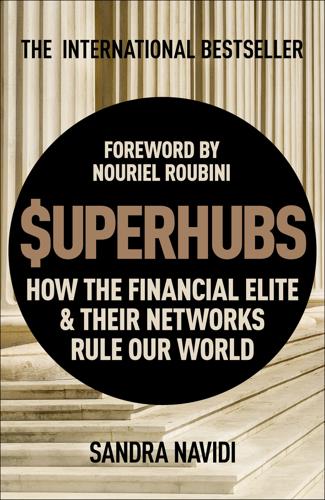
SUPERHUBS: How the Financial Elite and Their Networks Rule Our World
by
Sandra Navidi
Published 24 Jan 2017
John Darne and Jeffrey Gedmin, “Six Principles for Developing Humility as a Leader,” Harvard Business Review Blog Network, September 9, 2013, http://blogs.hbr.org/2013/09/six-principles-for-developing. 20. Sheryl Sandberg, Lean In: Women, Work, and the Will to Lead (New York: Knopf Doubleday, 2013), 17, Kindle edition. 21. Adam Grant and Sheryl Sandberg, “Madam C.E.O., Get Me a Coffee: Sheryl Sandberg and Adam Grant on Women Doing ‘Office Housework,’” New York Times, February 6, 2015, http://www.nytimes.com/2015/02/08/opinion/sunday/sheryl-sandberg-and-adam-grant-on-women-doing-office-housework.xhtml. 22. Victoria L. Brescoll, “Who Takes the Floor and Why: Gender, Power, and Volubility in Organizations,” Harvard Kennedy School, Women and Public Policy Program, 2011, http://gap.hks.harvard.edu/who-takes-floor-and-why-gender-power-and-volubility-organizations. 23.
…
Danielle Paquette, “Why Women Are Judged Far More Harshly Than Men for Leaving Work Early,” The Washington Post, June 10, 2015, http://www.washingtonpost.com/blogs/wonkblog/wp/2015/06/10/why-women-are-judged-far-more-harshly-than-men-for-leaving-work-early. 43. Abby W. Schachter, “A More Dire Assessment of Work-Life Balance: Erin Callan vs. Sheryl Sandberg,” Acculturated, March 15, 2014, http://acculturated.com/a-more-dire-assessment-of-work-life-balance-erin-callan-vs-sheryl-sandberg. 44. Erin Callan, “Is There Life after Work?” New York Times, March 9, 2013, http://www.nytimes.com/2013/03/10/opinion/sunday/is-there-life-after-work.xhtml. 45. Erin Callan Montella, Full Circle: A Memoir of Leaning In Too Far and the Journey Back (Triple M Press, 2016), Kindle locations 2216-20, Kindle edition. 46.
…
Whereas men have been conditioned to promote themselves, women are reluctant to negotiate; when they do, they often get penalized, making them even less likely to try again. The enduring societal stereotype is still that women should be kind, considerate, and caring. When they violate that norm by speaking out for themselves, they are perceived as aggressive. Sheryl Sandberg has appealed to women’s personal responsibility to “lean in,” and while she certainly has a point, public policy and institutions must also fundamentally change before the system can be remedied. The ask gap is deeply ingrained, even on the CEO level: Satya Nadella, CEO of Microsoft, said in 2014 that women who do not ask for raises create “good karma” for themselves.24 Those are the women he would trust and to whom he would give more responsibility.
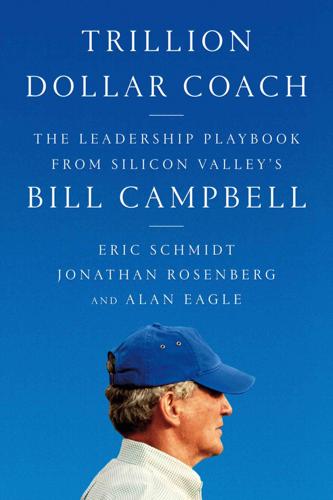
Trillion Dollar Coach: The Leadership Playbook of Silicon Valley's Bill Campbell
by
Eric Schmidt
,
Jonathan Rosenberg
and
Alan Eagle
Published 15 Apr 2019
The teams had clear goals, each role was meaningful, and members were reliable and confident that the team’s mission would make a difference. You’ll see that Bill was a master at establishing those conditions: he went to extraordinary lengths to build safety, clarity, meaning, dependability, and impact into each team he coached. Sheryl Sandberg and I have often lamented that every bookstore has a self-help section, but there isn’t a help-others section. Trillion Dollar Coach belongs in the help-others section: it’s a guide for bringing out the best in others, for being simultaneously supportive and challenging, and for giving more than lip service to the notion of putting people first.
…
Bill had been a transcendent figure in the technology business since moving west in 1983, playing a critical role in the success of Apple, Google, Intuit, and numerous other companies. To say he was tremendously respected would be a gross understatement—loved is more like it. Among the audience that day were dozens of technology leaders—Larry Page. Sergey Brin. Mark Zuckerberg. Sheryl Sandberg. Tim Cook. Jeff Bezos. Mary Meeker. John Doerr. Ruth Porat. Scott Cook. Brad Smith. Ben Horowitz. Marc Andreessen. Such a concentration of industry pioneers and power is rarely seen, at least not in Silicon Valley. We—Jonathan Rosenberg and Eric Schmidt—sat among the audience, making subdued small talk, soft sunshine contrasting with the somber mood.
…
He coached Dan Rosensweig, CEO of Chegg. He coached Charlie Batch, fellow Homestead native and former quarterback for the Pittsburgh Steelers. He coached Jesse Rogers, managing director of Altamont Capital Partners. He coached John Hennessy, former president of Stanford University. He coached Sheryl Sandberg, COO of Facebook. BALLSY AND BRUNO And when it came time to eulogize Bill at his memorial, none of those people took the podium. In fact, the first person who stepped to the microphone that day was Bill’s college football teammate Lee Black. Lee started talking about his friend “Ballsy,” who we quickly figured out was none other than Bill.
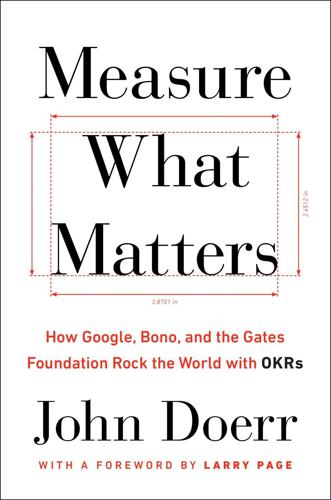
Measure What Matters: How Google, Bono, and the Gates Foundation Rock the World With OKRs
by
John Doerr
Published 23 Apr 2018
As our business grows, and YouTube’s role in society evolves, we will continue to hunt for the right metrics for our services—and with them, the right OKRs. PART TWO The New World of Work 15 Continuous Performance Management: OKRs and CFRs Talking can transform minds, which can transform behaviors, which can transform institutions. —Sheryl Sandberg Annual performance reviews are costly, exhausting, and mostly futile. On average, they swallow 7.5 hours of manager time for each direct report. Yet only 12 percent of HR leaders deem the process “highly effective” in driving business value. Only 6 percent think it’s worth the time it takes.
…
What if you laid out the two best options but made your own preference clear? Do you think you could do that?” If the product head agrees, there is a plan. Unlike negative criticism, coaching trains its sights on future improvement. Feedback In her instant classic, Lean In: Women, Work, and the Will to Lead , Sheryl Sandberg notes: “ Feedback is an opinion, grounded in observations and experiences, which allows us to know what impression we make on others.” To reap the full benefits of OKRs, feedback must be integral to the process. If you don’t know how well you’re performing, how can you possibly get better? Today’s workers “ want to be ‘empowered’ and ‘inspired,’ not told what to do.
…
But in less than a year, Eric’s self-review showed how far he’d come around: “ Bill Campbell has been very helpful in coaching all of us. In hindsight, his role was needed from the beginning. I should have encouraged this structure sooner, ideally the moment I started at Google.” Bill considered his Google mandate open-ended. He coached Larry Page and Sergey Brin—and Susan Wojcicki and Sheryl Sandberg and Jonathan Rosenberg and Google’s whole executive team. He did it in his characteristic style, one part Zen and one part Bud Light. Bill gave little direction. He’d ask a very few questions, invariably the right ones. But mostly he listened. He knew that most times in business there were several right answers, and the leader’s job was to pick one.

Don't Be Evil: How Big Tech Betrayed Its Founding Principles--And All of US
by
Rana Foroohar
Published 5 Nov 2019
He decided to do something about it. In October 2016, several days before the presidential election, McNamee reached out to Mark Zuckerberg and Sheryl Sandberg. These were people that he counted as friends, and he had every reason to believe they would listen to his concerns. He was, after all, the one who had advised Mark Zuckerberg to turn down Yahoo’s $1 billion offer to buy the company early on (a smart move given its current value); he’d also been the one to suggest that Zuck hire Google ad whiz Sheryl Sandberg to be COO of the company. It turned out that McNamee had been overly optimistic about his relationship with Zuck and Sandberg.
…
Things Fall Apart: The Political Impact of Big Tech After it was revealed that the largest technology platforms in the world were exploited by Russian state actors and their private proxies to swing the 2016 U.S. presidential election, it was Facebook, not Google, who took most of the heat. CEO Mark Zuckerberg insistently denied the possibility that nefarious foreign actors could have hacked the platform, which, of course, is exactly what was revealed to have happened. As The New York Times later reported, both he and COO Sheryl Sandberg had enlisted a shadowy right-wing PR firm that used underhanded techniques to discredit the Big Tech critic and financier George Soros. But Google was only marginally more responsive to those first signs of election manipulation in the wake of 2016, and it turned out to have played a major role as well.
…
Schmidt was also a key adviser in digital efforts for both the Obama and Hillary Clinton campaigns, using Google’s might to help the former get elected, and exerting policy influence afterward that is worrisome, to say the least.25 While this obviously isn’t problematic in the same way that allowing the Trump campaign to spread racist dog whistles and fake news during the 2016 elections was, it underscores the point that these companies hold undue influence over our political system as a whole, in ways that undermine public trust.26 Schmidt is certainly not alone in playing both sides of the political fence. Take a look at the first meeting of Silicon Valley’s tech titans with Donald Trump in 2017, and you’ll see Sheryl Sandberg, Tim Cook, and many other avowed Democrats leaning in to the president, literally. Despite Amazon CEO Jeff Bezos’s ownership of The Washington Post, which is often critical of the president, Amazon pushed its facial recognition technology to ICE, the U.S. Department of Homeland Security’s Immigration and Customs Enforcement division—the very one that was keeping children in cages at the Mexican border.27 Most Democrats and an increasing number of Republicans have been bought out by Big Tech’s extensive lobbying.

Lurking: How a Person Became a User
by
Joanne McNeil
Published 25 Feb 2020
Melissa Gira Grant first wrote about Lean In for The Washington Post (“Sheryl Sandberg’s ‘Lean In’ Campaign Holds Little for Most Women,” February 25, 2013). Anna Holmes confirmed the dinner party in a defense of Sheryl Sandberg for The New Yorker, arguing that “many of the most full-throated defenses of Sandberg came from women who had actually met her. Last autumn, Sandberg’s P.R. team invited a group of about twenty writers—including this one—to a dinner at Estancia 460, a restaurant in lower Manhattan” (“Maybe You Should Read the Book: The Sheryl Sandberg Backlash,” June 18, 2017). Other comments about the dinner party appeared on Twitter.
…
Other comments about the dinner party appeared on Twitter. Responses to Grant include Michelle Goldberg (“The Absurd Backlash Against Sheryl Sandberg’s ‘Lean In,’” Daily Beast, March 1, 2013), Jessica Valenti (“Sheryl Sandberg Isn’t the Perfect Feminist. So What?,” The Washington Post, March 1, 2013), and Katha Pollitt (“Who’s Afraid of Sheryl Sandberg?,” The Nation, June 29, 2015). The Harvard Business Review report “Research: Women Ask for Raises as Often as Men, but Are Less Likely to Get Them” was authored by Benjamin Artz, Amanda Goodall, and Andrew J. Oswald (June 25, 2018). Michelle Goldberg updated her views in the book review “Ivanka Trump’s Book Celebrates the Unlimited Possibilities Open to Women with Full-Time Help” (Slate, May 2, 2017).
…
The many grades and variations of power were brushed aside to condemn internet outrage as an oversize threat. As a classic example of this conflation, Jon Ronson, while promoting his 2015 book So You’ve Been Publicly Shamed, routinely stated that internet users are collectively “worse than the NSA.” Another tipping domino, in 2013, was Sheryl Sandberg’s book, Lean In: Women, Work, and the Will to Lead. However, it was the criticism it garnered, rather than the actual text, that made a lasting impact. Facebook’s chief operating officer had big plans for her first book. It was going to be a movement with “Lean In circles,” and networking and mentorship events for women in business.

The Facebook Effect
by
David Kirkpatrick
Published 19 Nov 2010
“Our mission since day one has been to make society more open,” says marketer Dave Morin, a member of Zuckerberg’s inner circle. “That’s what it’s all about, right? We help people be more open across more contexts. I think they have to worry less all the time about being who they actually are.” But Facebook COO Sheryl Sandberg, thirty-nine, looks at it slightly differently. “Mark really does believe very much in transparency and the vision of an open society and open world, and so he wants to push people that way,” she says. “I think he also understands that the way to get there is to give people granular control and comfort.
…
“Mark’s view is that Facebook had better not resist the trends of the world or else it’ll become obsolete,” says the soft-spoken but passionate Adam D’Angelo, who shares this view and with whom Zuckerberg has discussed such issues since they were at Exeter in 2001. “Information is moving faster,” he continues. “That’s just how the world is going to work in the future as a consequence of technology regardless of what Facebook does.” Even Sheryl Sandberg takes evident pride when she says, “You can’t be on Facebook without being your authentic self.” Members of Facebook’s radical transparency camp, Zuckerberg included, believe more visibility makes us better people. Some claim, for example, that because of Facebook, young people today have a harder time cheating on their boyfriends or girlfriends.
…
And the company also needed someone well-versed in the complexities of the online advertising business. Zuckerberg took a couple of weeks to think about it, then told Breyer he agreed. He would tell Van Natta of their decision in early January and begin a search. At a Christmas party in mid-December, Zuckerberg got into a conversation with Sheryl Sandberg. She was a senior executive at Google who had built the search company’s self-service ad business into one of the economic powerhouses of the Web. The two of them ended up standing in a corner for over an hour as Zuckerberg queried her about how to manage a growing tech organization. They agreed to get together sometime for dinner.
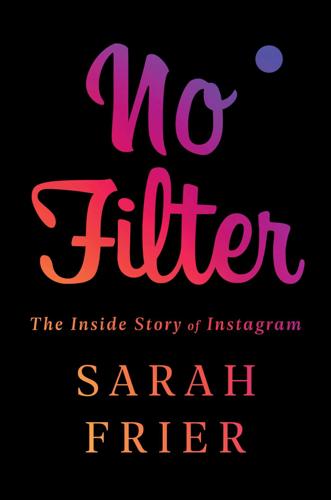
No Filter: The Inside Story of Instagram
by
Sarah Frier
Published 13 Apr 2020
But it would take some serious negotiating: that Thursday night, at Zuckerberg’s new home in the tree-lined Crescent Park neighborhood of Palo Alto, Systrom started out by asking for $2 billion. * * * Zuckerberg was whittling down the number with Systrom when he decided to loop in others. He invited Facebook COO Sheryl Sandberg and CFO David Ebersman over for a serious meeting. They told him they trusted his instincts, but first they would need to alert deals director Amin Zoufonoun, who could make everything happen. “Mark would like to buy Instagram,” Sandberg explained on their conference call, getting straight to the point.
…
First, that Instagram indeed had a very different brand, one that its users cared about deeply. And second, that Facebook would have to be much more careful. Maybe they needed a liaison between the two companies, keeping a closer eye on the differences and figuring out how to deploy resources, translating Instagram’s needs into Facebookese. At the advice of chief operating officer Sheryl Sandberg, Rose called up one of her protégées, Emily White, a rising star in charge of mobile partnerships who had just come back from maternity leave. “We’re really screwing this up,” he said, appealing to White. “You need to talk to Systrom.” Over the next few weeks, the more White discussed Instagram’s future with Systrom, the more she realized that she wanted to work with him.
…
Instagram modeled the look off Vogue magazine’s: high-end brand advertising showcasing products in a subtle manner, as just one element of the lives of beautiful, happy people. That September, Emily White was featured in the Wall Street Journal, with the headline “Instagram Pictures Itself Making Money.” The writer, Evelyn Rusli, compared White’s role at Instagram to Sheryl Sandberg’s at Facebook. Rusli reported that White was spending her weeks meeting big-name advertisers like Coca-Cola and Ford Motor Co. and “wanted to avoid repeating some of Facebook’s earlier missteps with advertisers,” a line that ruffled feathers internally. But Facebook ads and Instagram’s ad plan stood in sharp contrast.
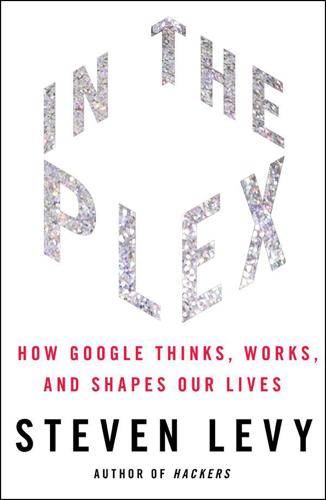
In the Plex: How Google Thinks, Works, and Shapes Our Lives
by
Steven Levy
Published 12 Apr 2011
Veach knew in his heart this was the right way to go, but he had to do a lot of explaining. “Larry and Sergey kept asking me if it wasn’t simpler to have an auction where we just have people pay what they bid,” he says. “And I kept saying, ‘No,’ because then people have this incentive to keep lowering their bids.” To run its ad operation, Google had hired Sheryl Sandberg, former chief of staff to the secretary of the treasury in the Clinton administration. She’d gotten to know Eric Schmidt when he visited D.C. to argue against Internet taxes. Though she’d never been involved in high tech—besides her Treasury post, her résumé included McKinsey & Company and the World Bank—she’d spent the past few years observing what was happening in Silicon Valley.
…
People looking for hand lotion are unlikely to click on a travel ad. His bid would be downgraded even more. (He may even be required to pay a prohibitively high “minimum bid”—a practice that ultimately engendered a lot of grumbling among certain advertisers.) The beauty of the ad quality formula, says Sheryl Sandberg, is that “it made the advertiser do the work to be relevant. You paid less if your ads were more relevant. So you had a reason to work on your keyword, your text, your landing page, and generally improve your campaign.” There were some downsides, though. Chief among them was that the system was fairly complicated and risked befuddling an advertiser.
…
Semel was amused. “Are you going to bomb us?” he asked. Semel knew that there were profits to be made even as a runner-up to Google. But Yahoo never figured out how to innovate with Overture. “We used to benchmark ourselves against Overture,” says David Fischer, a former Google ad executive who worked under Sheryl Sandberg. “But at some point Sergey just said, ‘Why are we paying attention to them?’ That’s the Google way—we don’t confine ourselves to catching other people.” Years later, Gary Flake, the chief science officer at Overture and leader of Yahoo’s search efforts in the mid-2000s, would amuse audiences with a slide show that documented Overture’s failures to respond to Google’s advances.

I'm Feeling Lucky: The Confessions of Google Employee Number 59
by
Douglas Edwards
Published 11 Jul 2011
AdWords Select was a MiG fighter, loaded with technical terms, incomprehensible gauges and dials, and a long checklist before your ads actually took off. I wanted us to have a shortcut with preset options, but Salar felt the granularity of the system made it powerful and that was its selling point. Sheryl Sandberg, an economics wunderkind and former chief of staff at the Treasury Department, joined Google the week the new prototype went live. She was immediately handed responsibility for advertising customer support and the team of five people who managed that for Omid. One quit that day. Sheryl also wanted things simplified, but there was no working around Salar, who had developed a deep attachment to the product.
…
Reduced search volume or quality issues that hurt ad clickthrough rates could spark an explosive expansion of Google's debt and obliterate the company. Even with Larry and Sergey's high tolerance for risk, no one wanted the company to die under a load of corporate IOUs, especially the new CEO, Eric Schmidt. "Don't make me bankrupt," Sheryl Sandberg recalls Eric telling Salar. "Don't run out of cash." The guarantees would become a weapon in the battle for syndication market share, as each search superpower tried to bluff the others into spending themselves into economic oblivion. On February 5, 2002, CNET broke the news that Google had been quietly providing Earthlink with search results and advertising for weeks.
…
Those accomplishments could easily have absorbed the full focus of a competent tech company for years. It was becoming clear that Google was more than just a competent tech company. At the tail end of 2001, I had convened a group at Cindy's request to begin thinking about Google's evolving position in the marketplace. Since then, Susan, Sheryl Sandberg, Cindy, and a couple of other marketeers had gathered every few weeks to try and pin down Google's protean essence. We called our initiative "Baby Beagle," in homage to Darwin. Our corporate identity had morphed with our entry into ads syndication—but into what? We didn't want to be pegged as a portal, but we had outgrown the notion of being only a search engine.
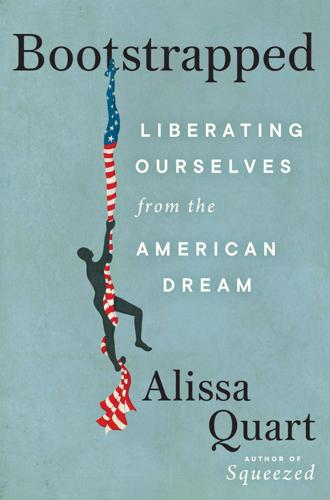
Bootstrapped: Liberating Ourselves From the American Dream
by
Alissa Quart
Published 14 Mar 2023
individual effort in success: In a similar vein, Ivanka Trump’s “motivational quotes” during her father’s presidential tenure included “If you are content, that’s probably not good enough,” faulting women for not being able to surmount obstacles, as if they were ne’er-do-wells creating roadblocks for themselves, the glass ceiling all in their heads. feminist Sheryl Sandberg puts it in her 2013 bestseller Lean In: Sheryl Sandberg, Lean In: Women, Work, and the Will to Lead (New York: Knopf, 2013). a cute neologism coined by the founder of the online women’s retailer Nasty Gal, Sophia Amoruso: Sophia Amoruso, #GIRLBOSS (New York: Portfolio, 2014). She poses on the cover of one edition in a tight black dress with a plunging neckline and her hair so perfectly straight it might well be a Lulu-Brooks-goes-Instagram wig.
…
Her contemporary followers are legion and include the King-of-the-NASDAQ-by-way-of-Burning Man Travis Kalanick, cofounder of Uber, who had the cover of a Rand book as his Twitter avatar, as well as the founder of Snapchat, Evan Spiegel, and Twitter’s Jack Dorsey. Lisa Duggan, in her account of Rand entitled Mean Girl, writes that the most “influential figure in the industry, after all, isn’t Steve Jobs or Sheryl Sandberg, but rather Ayn Rand.” Apple’s cofounder Steve Wozniak even called Rand’s Atlas Shrugged one of Jobs’s “guides in life.” Rand’s version of self-made absolutism is particularly attractive to these people, because they tend to be more absolutist: no one may contradict their point of view. As Adrian Daub wrote scathingly of her allure, “Who is teaching them [bro-grammers] that when they press a button on their keyboard, millions, or even billions, of people can be affected, sometimes in terrifying ways?
…
The 2019 edition of the Forbes 400 list showed that most of these affluent women were heiresses, emerging from American dynasties like the Waltons of Walmart. In fact, only eleven self-made women made the list at all. Nevertheless, rich fictions tend to animate and suffuse how these women talk publicly about the role of individual effort in success. As billionaire “power feminist” Sheryl Sandberg puts it in her 2013 bestseller Lean In, turning what should be self-help into a text that foments ordinary readers’ self-doubt: “I continue to be alarmed not just at how we as women fail to put ourselves forward, but also at how we fail to notice and correct for this gap.” There was little systemic critique in Sandberg’s books or most of the girlboss books.

Careless People: A Cautionary Tale of Power, Greed, and Lost Idealism
by
Sarah Wynn-Williams
Published 11 Mar 2025
It was a lot of launching ourselves at various things that did not quite work out like we expected. I was there for seven years, and if I had to sum it up in a sentence, I’d say that it started as a hopeful comedy and ended in darkness and regret. I was one of the people advising the company’s top leaders, Mark Zuckerberg and Sheryl Sandberg, as they were inventing how the company would deal with governments around the world. By the end, I watched hopelessly as they sucked up to authoritarian regimes like China’s and casually misled the public. I was on a private jet with Mark the day he finally understood that Facebook probably did put Donald Trump in the White House, and came to his own dark conclusions from that.
…
(I can’t believe Facebook provides a detailed list of everyone’s social connections—to anyone.) We have one friend in common. That’s it. One shot. That mutual friend—Ed Luce—is remarkably good humored about introducing me to Marne. They both worked for Larry Summers at the Treasury Department. He offers to put me in touch with another ex-Treasury colleague, Sheryl Sandberg—the number two at Facebook—but after hours of research I’m sure Marne’s the right person. My conversation with Ed happens at his home in DC. I can tell he’s bemused by the idea of recommending someone for a job that doesn’t exist. Over a cold beer, he quizzes me on why I’m fixated on working for the company, what I know of its leadership, and why I’m convinced that Facebook is going to change the world.
…
The country already has nearly 650 million people on the internet, more than twice the entire US population. For most of 2014, he’s been putting a lot of time and energy into getting Facebook into China. A few months before the trip, he sent an email to his closest advisers explaining why: From: Mark Zuckerberg Date: July 25, 2014, at 9:51:37 A.M. PDT To: Sheryl Sandberg, Elliot Schrage, Vaughan Smith, Kevin Systrom Subject: China 3-year plan I’ve said recently that I’d be willing to take 3 trips to China per year and to engage more intensively in trying to help us operate there. I’ve also encouraged Kevin [Systrom] to engage more as well. Some of you have seemed surprised by this, so I wanted to provide some context on why I believe it is time to take this more seriously.

Disrupted: My Misadventure in the Start-Up Bubble
by
Dan Lyons
Published 4 Apr 2016
It starts when Trotsky writes a Facebook post about the Ban Bossy campaign that Facebook COO Sheryl Sandberg is promoting. Sandberg wants everyone to stop using the word bossy to describe girls. Trotsky says that instead of using her bully pulpit to pursue something as trivial as the word bossy, Sandberg should dedicate herself to more important issues, like the plight of the African elephant, which is on the verge of extinction. Trotsky loves elephants. He’s always ranting about the awful poachers who kill them for their ivory. I have no idea how elephants became so dear to him, or how his mind makes the illogical leap from Sheryl Sandberg’s feminist crusade to the issue of elephant poaching.
…
If we need more blog posts, why can’t we just write a few extra posts over the next few weeks and bank them up?” She pauses. She really is a very nice young woman, and I like her a lot. “There’s food,” she says. I go home. The greatest of all bozo events is Fearless Friday. This is organized by Jordan, the twenty-something manager who has read Facebook COO Sheryl Sandberg’s book Lean In and been inspired by Sandberg’s admonition that women should “do what you would do if you weren’t afraid.” Jordan seems to believe that Sandberg’s admonition can be used as the basis of a one-day exercise, which she dubs Fearless Friday. She sends us this email: We’ve got a brilliant team and, at times, it can be hard to innovate due to fear of failure and the pressure of our day-to-day goals.
…
Hoffman’s line about a company not being a family traces its roots to a “culture code” that Netflix, the Silicon Valley video-subscription company, published in 2009, and which famously declared, “We’re a team, not a family.” The Netflix code inspired a generation of tech start-ups and “may well be the most important document ever to come out of the Valley,” Facebook COO Sheryl Sandberg once said. Shah used the Netflix code as the model for his HubSpot culture code and lifted the original Netflix line: “We’re a team, not a family.” Netflix justified the “not a family” idea by arguing that like a pro sports team, tech companies need “stars in every position.” That deal makes sense if you’re a professional athlete who can earn millions of dollars a year and retire at age thirty or thirty-five, but seems a bit ruthless when applied to the rank-and-file worker.

Alpha Girls: The Women Upstarts Who Took on Silicon Valley's Male Culture and Made the Deals of a Lifetime
by
Julian Guthrie
Published 15 Nov 2019
Photo courtesy of Magdalena Yeşil Magdalena at a Salesforce Christmas party, Roy’s Restaurant in San Francisco, ca. 2001. Photo courtesy of Magdalena Yeşil Magdalena with husband, Jim, and their sons Troy (left), sixteen, and Justin, eighteen, 2006. Photo by Joe Murray Theresia as a partner at Accel, with Washington Post CEO Don Graham and Facebook COO Sheryl Sandberg, at an Accel CEO event at Stanford, 2011. Photo courtesy of Theresia Gouw Women of venture capital on a getaway in Hawaii, organized by Silvia Fernandez of Silicon Valley Bank. Silvia is in the black bathing suit and sun hat (far left), Magdalena is in sunglasses (front row, third from left), Jennifer Fonstad is seated next to Magdalena, and Sonja (front row right).
…
Serving room-temperature champagne at two A.M., she announced that Sonja was a Norwegian superhero and gave Sonja a superhero name: White Sonja. Sonja smiled thinking of this now. She would need all the superhero powers she could muster to fight off the cancer cells invading her body. THERESIA Theresia was having a late breakfast with Sheryl Sandberg at Hobee’s Restaurant in Palo Alto. Compared with Buck’s see-and-be-seen restaurant in Woodside or Il Fornaio in Palo Alto, Hobee’s was a low-key meeting choice near the Stanford campus. It was where Theresia had come as a grad student to study and indulge in Hobee’s “world famous” blueberry coffee cake, or an early-morning or late-night super veggie scramble.
…
Shortly afterward Theresia was off to Fortune magazine’s Most Powerful Women Summit, where the conference theme was “Extraordinary Talent.” Toward the end of the summit, the Fortune team unveiled to great fanfare the year’s Most Powerful Women issue. Copies were distributed to attendees and the press. The cover featured Sheryl Sandberg, Gina Bianchini, Sukhinder Singh Cassidy, and Theresia, against a simple gray background, looking fashionable and formidable in beautifully tailored black suits. The title of the issue was “The New Valley Girls.” The article included vignettes about each of the four women. Theresia talked about her partners’ meetings at Accel: “You can imagine Monday morning meetings.
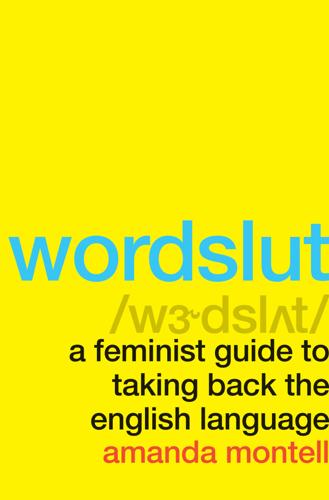
Wordslut: A Feminist Guide to Taking Back the English Language
by
Amanda Montell
Published 27 May 2019
According to a small poll I took among my social media followers, Senator Kamala Harris, Oprah Winfrey, TV broadcasters Diane Sawyer and Robin Roberts, and Sheryl Sandberg have all done a pretty bang-up job of striking a nice equilibrium, alongside Michelle Obama and Angela Merkel. Even if every woman in power were to modulate her voice to perfection, managing to come across as balanced and worthy as the Winfreys of the world, it still wouldn’t solve everything. After all, our bias against how women leaders sound is structural, not individual. The real solution is a long-term one. In one of her 2015 columns for the New York Times, Sheryl Sandberg wrote that “the long-term solution to the double bind of speaking while female” is simple: we need to pick more women to be the boss.
…
It has to be okay—encouraged, really—for men to empathize and align with women and to stick up for them when they see other men try to take them down, linguistically and otherwise. “To put their principles above their fraternal loyalties,” as Deborah Cameron once put it. And it has to be not okay to treat anyone who isn’t a man like an intruder in their world. In 2015 Sheryl Sandberg told a story to the New York Times about a guy named Glen Mazzara, who ran a hit TV series called The Shield. Mazzara noticed that in pitch meetings, the show’s two women writers never spoke up. So he pulled them aside and encouraged them not to be so shy. It wasn’t a matter of “shy,” they promised.
…
Take a cue from one of the most powerful men in US history: at the end of a 2014 press conference, President Barack Obama called on eight reporters for questions—all women. The act made international headlines. “Had a politician given only men a chance to ask questions, it would not have been news; it would have been a regular day,” Sheryl Sandberg commented. “We wonder what would happen if we all held Obama-style meetings, offering women the floor whenever possible.” That’s not to say that while men sort this whole thing out, women should all go on a big Carnival Cruise and bide their time slurping piña coladas out of sippy cups shaped like vaginas until the matrilineal revolution takes hold.

The New Class Conflict
by
Joel Kotkin
Published 31 Aug 2014
Bell, The Coming of Post-Industrial Society, p. 344; International Trade Administration, “The State of Manufacturing in the United States.” 21. Alex Morrell, “Billionaires 2014: Record Number of Newcomers Includes Sheryl Sandberg, Jan Koum, Michael Kors,” Forbes, March 3, 2014, http://www.forbes.com/sites/alexmorrell/2014/03/03/billionaires-2014-record-number-of-newcomers-includes-sheryl-sandberg-jan-koum-michael-kors. 22. “A Wealth of Influence,” Financial Times, October 8, 2005; “Bloomberg Billionaires: Today’s Ranking of the World’s Richest People,” Bloomberg, http://www.bloomberg.com/billionaires/2014-01-02/cya/aaaac. 23.
…
The MetLife Mature Market Institute, “The MetLife Study of Inheritance and Wealth Transfer to Baby Boomers,” December 2010, http://www.metlife.com/assets/cao/mmi/publications/studies/2010/mmi-inheritance-wealth-transfer-baby-boomers.pdf; Robert Frank, “The 1% Captures Most Growth From Recovery,” Wall Street Journal, March 6, 2012; Callahan, Fortunes of Change, p. 257; Ryan Mac, “The World’s Youngest Billionaires 2014: 31 Under 40,” Forbes, March 3, 2014, http://www.forbes.com/sites/ryanmac/2014/03/03/the-worlds-youngest-billionaires-2014-31-under-40; Alex Morrell, “Billionaires 2014: Record Number of Newcomers Includes Sheryl Sandberg, Jan Koum, Michael Kors,” Forbes, March 3, 2014, http://www.forbes.com/sites/alexmorrell/2014/03/03/billionaires-2014-record-number-of-newcomers-includes-sheryl-sandberg-jan-koum-michael-kors. 70. John J. Havens and Paul G. Schervish, “Why the $41 Trillion Wealth Transfer Estimate Is Still Valid: A Review of Challenges and Comments,” Journal of Gift Planning, vol. 7, no. 1 (January 2003): 11–15, 47–50. 71.
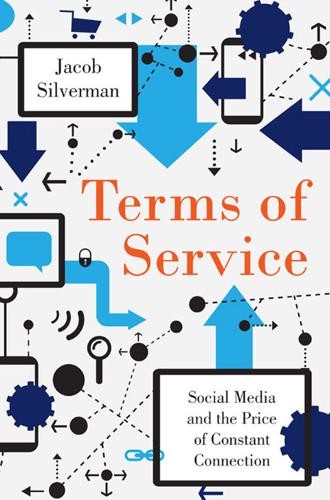
Terms of Service: Social Media and the Price of Constant Connection
by
Jacob Silverman
Published 17 Mar 2015
That it’s only the latest hyped product to come down the pipe—that the inventors of the telegraph and the telephone and the Internet itself shared similar naïve fantasies—doesn’t seem to matter. Facebook, Twitter, Google+, and Pinterest have the capacity—if we are to believe the companies marketing these products to us—to remake our world for the better. As Sheryl Sandberg, the COO of Facebook, promised, “People will share more and more of their lives online, transforming relationships on every level—personal, commercial and institutional.” It’s not just that the executives of social-media firms—along with their enablers in the media, the consulting circuit, and certain sectors of government—believe in this deliriously optimistic, social media–enabled future.
…
For the true believers of Facebook, everything—dating, listening to music, browsing photos, playing games—is better with other people watching. Who wouldn’t want to be a member? Who wouldn’t want to be sharing as much of their lives as possible? The accompanying belief is that before social media, life was lacking, and so Facebook is here to help us become more “authentic.” As we continue to share our lives online, Sheryl Sandberg wrote in the Economist, we will produce “one voice,” which is to say “the convergence of our real and virtual selves.” This is our “authentic identity,” one that has “a name and a face”—in other words, it’s an identity that makes us no longer anonymous, an identity whose online habits and expressions can all be pegged to a single account, about which a profitable data profile can be developed.
…
If only someone could tell Eric Schmidt this! He might actually do something about it. Demonstrating a shift in rhetoric, if not in practice, Facebook has been far more paternalistic in telling us why we must always be identifiable online. It is apparently for our own good. In an interview with Charlie Rose, Sheryl Sandberg, the company’s COO, said, “The social Web can’t exist until you are your real self online. I have to be me, you have to be Charlie Rose.” Here is the airy rhetoric of authenticity, though what represents a “real self”? If I use the Tor software—favored by activists, hackers, and cyber-criminals alike to anonymize their Web browsing—am I being inauthentic?
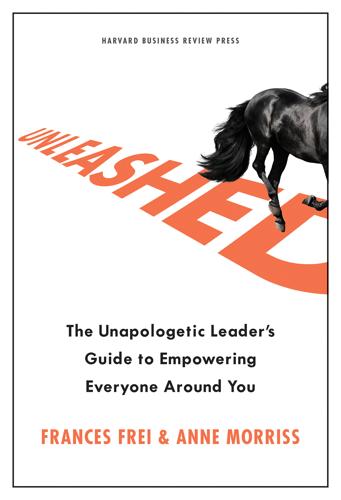
Unleashed
by
Anne Morriss
and
Frances Frei
Published 1 Jun 2020
When Stacy Brown-Philpot, now the CEO of TaskRabbit (more to come on Brown-Philpot) went from managing a fourteen-person team to ultimately more than a thousand, she realized she had to rethink her approach to leadership.2 For context, Brown-Philpot was working at Google at the time, where she was already well known as a strategic, results-oriented leader. She was in the process of rocketing to the top of Sheryl Sandberg’s operations organization, pausing to launch the Black Googlers Network along the way. Brown-Philpot had gone to Sandberg with the observation that black professionals were underrepresented at Google—and the conviction that a dedicated effort to recruit, retain, and connect them to each other would make a difference.
…
Black working moms When we began this work, the shorthand we offered people who wanted to get belonging right was that if you made your organization better for women, then you were likely to make it better for everyone. Over time, we evolved that advice to, “Make it better for black women,” to reflect the complexity of carrying around more than one marginalized identity. Sheryl Sandberg recently offered us this variation: “Make it better for black working moms.” If a black working mom has as good a chance of thriving in your organization as anyone else, then you’re getting a whole bunch of things right. If you discover you have a long way to go before she feels cherished, don’t despair.
…
As she helped to build Netflix into a media giant, McCord articulated the behaviors the company prized most—there are nine—and then used them to drive all hiring, compensation, and exit decisions. She socialized new recruits on these behaviors in a famous hundred-slide presentation on Netflix’s unique culture, and then reinforced them constantly, for example, invoking “honesty” (number eight) if colleagues withheld feedback from each other. (Sheryl Sandberg described McCord’s presentation, known as the Netflix Culture Deck, as “the most important document ever to come out of [Silicon] Valley.”5) McCord also challenged employees to question each other’s actions if they were inconsistent with Netflix culture, an act she explicitly labeled an expression of “courage” (number six).

Targeted: The Cambridge Analytica Whistleblower's Inside Story of How Big Data, Trump, and Facebook Broke Democracy and How It Can Happen Again
by
Brittany Kaiser
Published 21 Oct 2019
With the Federal Trade Commission admonishment of Mark Zuckerberg and Facebook in 2010 regarding use of the Friends API and “deceptive practices,” the company was “now expected to plug the gaps,” but it struggled to find a way to make that work in tandem with its growth strategy.5 Would it be possible to care about both data protection and exponential profits? The two aims were at odds with each other, and Facebook began to get more daring with its murky data collection and usage. Why the FTC failed to pay attention in 2012 is anyone’s guess. It would have been hard not to notice Facebook COO Sheryl Sandberg’s announcement four to five months before the social media company’s IPO about its lucrative relationship with data brokerage companies, or how it was acquiring more data to add to its in-house collection, and building better and more accurate targeting tools for paid advertisers: a clear message that Facebook was more than able to monetize its database.6 Indeed, Facebook didn’t change its policy for developers using Friends API until 2015, and the FTC never followed up.7 This was great news for the Democrats in 2012, when Obama won his second term and had the use of Facebook’s massive platform to do it.
…
The company had endeavored as early as 2014, Zuckerberg wrote, “to prevent abusive apps,” and had changed its platform so that “apps like Kogan’s,” created in 2013, “could no longer harvest friends’ data without their friends’ permission.” But even though Facebook had “made mistakes,” Zuckerberg assured users that they could rely on him, his ingenuity, and his company’s ability to protect its customers from all threats foreign and domestic. “There’s more to do, and we need to step up and do it.” Both Zuckerberg and Sheryl Sandberg posted that when it came to inventing new ways to safeguard users’ privacy, the company’s ingenuity knew no bounds: it would seek out information about which app developers still had what the two called “identifiable information.” It would ban them from the kingdom and let people know that they’d been at risk, but Facebook would also cut back on what users’ data they were selling to third-party apps, and to make everyone more comfortable, they were going to give users an easier way to determine whom Facebook had sold access to.
…
Not only had it allowed all my data to be taken by any company around the world willing to pay for access, but it had also opened up its platform for interference in elections by powers foreign and domestic. Cyberwar crimes had been committed against the American people, and Mark Zuckerberg and Sheryl Sandberg were financially benefiting from them. Remorse was nowhere to be seen. Theirs was a modern-day dictatorship like the ones I used to lobby against in the European Parliament and the United Nations. How had it taken so long for me to see it? Alexander had issued a statement: “I am aware how this looks,” he said.
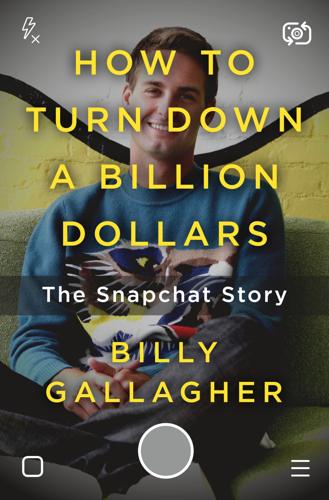
How to Turn Down a Billion Dollars: The Snapchat Story
by
Billy Gallagher
Published 13 Feb 2018
CHAPTER TWENTY-SEVEN EVAN’S EMPIRE MARCH 2015 VENICE, CA In March 2015, Evan gathered the company in the cafeteria for a rare all-hands meeting. He tersely told the assembled staffers that Chief Operating Officer Emily White—Snapchat’s putative Sheryl Sandberg—and VP of Business and Marketing Partnerships Mike Randall—effectively the company’s revenue chief—had left the company. White had turned out not to be Snapchat’s Sheryl Sandberg, but rather its Owen Van Natta. Van Natta, a former Amazon executive, joined Facebook as COO in 2005, served stints as chief revenue officer and a vice president of operations, and eventually left the company right before Sandberg joined.
…
AdWords had just launched at the time, and White had been charged with figuring out an advertising and sales strategy for it; she moved on to run ad sales for the Asia, Pacific, and Latin America regions, and became director of emerging business. In late 2010, she left Google to join Facebook, following her former boss, Sheryl Sandberg. She began as director of local at Facebook then became director of business operations at Instagram after they sold to Facebook. She also served on the board of the yoga pants company Lululemon. White was easily the most high-profile employee to join Snapchat. Netflix CEO and Facebook board member Reed Hastings emailed Michael Lynton to congratulate him on the big signing, noting, “She is a rock star.
…
Live video was great for celebrities and interesting events, but, as we saw with Justin Kan’s Justin.tv experiment, most people rarely have interesting enough lives to broadcast live video. Neither Facebook nor Snapchat had fully figured out their content strategy yet. Both tried to win over media companies and experimented with producing original content. Facebook COO Sheryl Sandberg personally visited talent agencies in Los Angeles to pitch them on Facebook Live. Facebook signed deals with 140 media companies and celebrities, paying them more than $50 million total to post Facebook Live videos for a year. Like those who signed with Discover, the list of media companies ran from well-established outfits like CNN and The New York Times to smaller upstarts, and the two companies shared many of the same publishers.

The Self-Made Billionaire Effect: How Extreme Producers Create Massive Value
by
John Sviokla
and
Mitch Cohen
Published 30 Dec 2014
Some of Ross’s best-known projects to date include the Time Warner Center in New York City, and the current Hudson Yards Project under way on the far West Side of Manhattan. Stephen Ross also owns the Miami Dolphins football team, as well as the Sun Life Stadium in which the team plays. Sheryl Sandberg b. 1969, United States Facebook After earning her undergraduate and business school degrees at Harvard University, Sheryl Sandberg worked for Larry Summers at the World Bank, and then at the Treasury Department, where she was his chief of staff. When the Democratic Party lost the 2000 election, Sandberg moved to Silicon Valley to get in on the Internet boom.
…
Two years after starting Spanx, founder and Producer Sara Blakely handed the operations of the business over to Performer CEO Laurie Ann Goldman, who ran the company for twelve years. Bloomberg’s Producer Michael Bloomberg started the financial data giant with the technology Performer Tom Secunda at his side. In the technology world, these pairings are more public than elsewhere: there is Facebook’s Mark Zuckerberg (Producer) and Sheryl Sandberg (Performer), eBay’s Pierre Omidyar (Producer) and Meg Whitman (Performer), Microsoft’s Bill Gates (Producer) and Paul Allen (Performer), just to name a few. Sometimes these pairs seem destined to work together. The serial Producer Mark Cuban—cofounder of Broadcast.com and the current owner of the Dallas Mavericks—wrote about the Performer Martin Woodall, who was Cuban’s partner in MicroSolutions, his first multimillion-dollar business: “While I covered my mistakes by throwing time and effort at the problem, Martin was so detail-oriented, he had to make sure things were perfect so there would never be any problems.

Internet for the People: The Fight for Our Digital Future
by
Ben Tarnoff
Published 13 Jun 2022
By studying user behavior, engineers could identify gaps and glitches in the software, and remake the ranking algorithm to respond to a range of new signals. Then, in the early 2000s, the company started using the data for another purpose: to sell ads. Google had been selling ads since 1999, though not very well. Sheryl Sandberg, a former Clinton administration staffer hired to lead the ads team, would later remember then-CEO Eric Schmidt walking by her desk multiple times a day to ask how many advertisers they had. Her answer was always the same: “Not many.” The wounds were largely self- inflicted. Page and Brin hated online advertising, sharing Pierre Omidyar’s distaste for the tacky commercialization of the dot-com era.
…
These enclosures would be particularly well suited to the business model popularized by Google, because their social nature encouraged users to offer up more data about themselves—data that could in turn be applied to the task of ad targeting. In the case of Facebook, the line of transmission was direct: in 2008, Zuckerberg hired Sheryl Sandberg, who had over-seen Google’s transformation into an advertising company, as his chief operating officer. Sandberg thus became, in Shoshana Zuboff’s memorable phrase, “the ‘Typhoid Mary’ of surveillance capitalism.” The online mall of social media would look a bit different than the online mall of search.
…
See also New Brandeisians Brin, Sergey, 88, 89, 91 Brown, Chris, 105 Bush, George, 27 capitalism and accumulation, 35–36, 147, 154, 177 and coal as fuel, 87 competitive markets under, 63, 103, 176 Karl Marx on, 78 and Luddite movement, 174, 175 and subsumption of labor, 78, 84 and surveillance capitalism, 92, 94, 96 in the US, 125 and venture capital, 119–22 See also The Age of Surveillance Capitalism, (Zuboff); Bezos, Jeff CenturyLink, 59–60 Cerf, Vinton, 11, 19–20, 113, 114 Chattanooga, TN, 38–39, 46, 49, 55 Clinton, Bill, 18, 20, 21, 22 Comcast and broadband internet, 25, 29, 53 and digital divide, 59 and end of net neutrality, 28 and enrichment of CEO and shareholders, 31 lawsuits of, 46 and the profit motive, 127–28 proposed taxes on, 61 and US government, 52 and Washington, DC’s neighborhoods, 49 worth of, 67 common carriage regulations, 26, 27, 28 Communications Act of 1934, 26 Communications Decency Act of 1996, 95–6 community networks, 42–56, 61–63, 154–55, 169, 170, 176 Computer Science Research Network (CSNET), 21–22 Cottom, Tressie McMillan, 132 Danton’s Death (Bűchner), 57 Davis, Angela, 156, 157 Defense Advanced Research Projects Agency (DARPA) ARPANET network of, 8–9, 10, 12, 13, 114 email study of, 79 and internet’s mobility, 113, 114–15 and investment in computing, 7–8, 89 and linking of networks, 11, 114 technical expertise of, 15 democracy and Clintonian neoliberalism, 26 and collective ownership of economy, 52 and Homo politicus, 64 importance of resources to, 34–35, 36 and inclusive government, 66–67 and the internet, 158 monopolies as a threat to, 150 and self-rule, 33–35, 36 Dewey, John, 33–34, 35 Donovan, Joan, 143, 161 Duke, David, 134, 139–40 eBay as AuctionWeb, 73–74, 80, 81–82 CEO Meg Whitman of, 99 and community as market, 80–84 and e-commerce, 75, 76, 80–84, 86, 98, 99, 100, 103 on the Nasdaq, 88 network effects on, 82, 83 user participation on, 79, 82, 83, 94 Electric Power Board (EPB), 38–39, 40 Equitable Internet Initiative (EII), 43–46 Facebook antitrust suit against, 151 and content moderation, 152–54 data of, ix, 29–30, 96, 101, 116, 165, 173 and e-commerce, 98 and election of 2016, 148–49 Fox News on, 142 and Instagram, 150, 159 and interoperability scenarios, 170 investigation into, 150–51 Joel Kaplan of, 146 and library funding, 160 and MAREA, x market capitalization of, 97 and Mark Zuckerberg, 94, 96–97, 146, 154, 166 online advertising of, 60–61, 94, 112, 124, 137–38, 146, 150, 165, 170, 173 and online malls, 115, 119, 129, 147, 155, 158 and politics, 141, 143–49, 150 and the profit motive, 127, 147 and purchase of startup companies, 124 QAnon movement on, 145–46 Schifter’s post on, 126–27, 131 and Sheryl Sandberg, 94 WhatsApp of, 150 Federal Communications Commission (FCC), 26, 27–28, 41, 48, 59, 60 Fourcade, Marion, 109 Fox News, 142, 161 Friere, Paulo, 44 Gates, Bill, 71–72, 81 Google and capitalism, 92 and data generation, 89–90, 92–93, 112, 124 and e-commerce, 98, 124 founding of, 88 and Google Fiber, 29 investigation into, 150–51 and large amounts of data, 91–93, 96, 101, 116 and library funding, 160 online advertising of, 60–61, 90–93, 94, 112, 124, 136, 173 as an online mall, 93, 115, 119, 129, 138 and parent company Alphabet, 97, 124 and platforms, xv, 75 and purchase of startup companies, 94, 124 and radicalization by Council of Conservative Citizens, 138–39 search technology of, 90, 133–39, 144 software of, 173 and submarine fiber-optic cables, 29–30 worth of, 67, 124 Goonhilly Satellite Earth Station, 4 Gore, Al, 19–20 Gruen, Victor, 85, 86 Grundner, Tom, 23 Guattari, Felix, 145 Hanna, Thomas M., 50, 66 Healy, Kieran, 109 High-Performance Computing and Communications Act of 1991, 20 Inouye, Daniel, 21, 22 internet access to, xv, 10, 13, 21, 23, 25, 28, 30, 31–35, 40–41, 44, 46, 50, 51, 59, 60, 61, 62, 63, 65, 77, 127, 163, 76 and algorithmic management, 114–15, 116, 118, 119, 121 ARPANET network of, 12, 18, 24, 79, 104, 114 and broadband internet, xv, 27–29, 31, 32–33, 35, 39, 40, 41, 43, 46, 48–49, 50, 53, 55–56, 59–61, 176 buying and selling on, 71, 73–74, 81–82, 124 and the cloud, 103–9, 110, 111, 112, 115, 116, 118, 119, 121, 123, 128, 131, 163 common language of, 9, 10–11, 14, 79, 110, 113, 177 and communications networks, x–xi, 5, 8, 27, 123, 128, 148, 170 and competition among providers, 61–64 and connectivity, xi, xii, 29, 30, 33, 35, 41, 43, 44, 59, 60, 127 and consumer costs, 23, 30–31, 40, 43, 44–45, 49, 50, 52, 60, 61–64 and content, xvii, 29, 152–54 creation of, xiii, 6–12, 13, 88, 104, 113 and data generation, 88–89, 92–93, 101, 108–9, 121, 123, 129, 149–50, 158, 165–66 and data’s value, 86–87, 92, 109, 121, 122, 165 and data transmission, 3–6, 8, 10, 14–15, 25, 28–29, 39, 55, 103–4, 159 and data trusts, 165–66 and democratic internet, xvi, 37, 42–43, 47–48, 50, 55, 56–57, 58, 66–67, 155, 175–76 and deprivatization, xvi, 51, 56, 59, 153, 154–55, 157, 169–70, 175, 176 and dial-up modems, 23, 27, 28 different scales of, 54–55, 168 and dot.com bubble, 72, 76–79, 80, 83, 90, 93, 94, 98, 102, 106, 109, 123, 124 and email, xiv, 12, 15–16, 79–80, 159 and fiber to the home (FTTH) networks, 39, 40, 41, 51 and founding of startups, 76, 119–20, 123–24 and infrastructure, xiii, xiv, 7, 15, 17, 24, 27, 28, 30, 31, 41, 43, 44, 45, 48, 49, 51, 56, 61–62, 65, 85, 106–9, 127, 160, 164, 176 and internet service providers, 15, 17, 24–26, 27–31, 38, 39–41, 46, 49, 51–53, 59–63, 65, 72, 77, 95, 127–8 and market-dominated internet, 22, 35, 42, 46–47, 119, 122, 152–54 and the military, 9–10, 11, 12, 79, 113–15, 177, xiii and online classes, 32, 34, 132–33 and online malls, 86–87, 93, 103, 108, 109, 112, 115, 121, 123, 128, 129, 131–33, 135, 137–40, 147, 148, 149, 151, 153, 154–58, 160, 163, 165, 166, 168, 169, 170–73, 176 and organizing, xv, 37, 43–46, 50, 58 and Pets.com, 77, 82 and platforms, xiv–xv, 67, 75, 84, 98, 127, 158, 164, 166, 176 and politics, xi, xii, 18, 28, 46, 47–49, 54, 80, 139–49, 171, 174, 177 privatization of, xiii, xiv–xv, 14, 16–20, 23–25, 27–30, 36–37, 44, 45, 47, 56, 58, 65, 67, 72, 76–79, 84, 93, 98, 109, 119, 120, 123–25, 127, 135, 147, 148, 154, 159, 172, 174–75 and profit motive, xi, xii, xiii, xv, xvi, xvii, 9, 26, 31, 33, 35–36, 37, 45, 47, 52–53, 55, 87, 127–28, 147, 152, 174–75, 176 public funding for, 6–8, 14, 15, 16, 18, 21, 22, 23, 41–42, 48–51, 59, 60, 160, 164–65, 176 public or cooperative ownership of, xvi, 8, 40–46, 48–49, 51–52, 60, 62, 65, 71, 155, 163–65, 168, 169, 176 and racism, xvii, 31, 43, 134, 137–40, 153 regulation of, xii, 17, 22, 28, 147, 149–53 and rise of search engines, 72, 136–37 and selling ads, 93–94, 96–97, 146 and shopping malls, 84–86 and “smartness,” 110–13, 118 and smartphones, 6, 31–32, 110, 112, 115, 119, 123, 128 social aspect of, 79–80, 81, 86, 94–95 state surveillance of, 64–65, 66 and submarine fiber-optic cables, ix–x, xii, xiv, 29–30, 56, 65, 113 and the techlash, 149, 152, xii, xiii, xv universal protocol for, 9, 11–12, 19, 88, 110, 113, 159, 172 and universities, 52, 88, 109, 169 and US government, xiii, xiv, 7, 13–14, 17–20, 21, 22, 23, 25, 48–49, 59–60, 64–67, 113–15, 170 and web applications, 103, 170, 171, 176 wide area networks (WANs) of, 117–19 and the World Wide Web, 15–16, 72, 76, 80, 89 and Yahoo!

Frenemies: The Epic Disruption of the Ad Business
by
Ken Auletta
Published 4 Jun 2018
After Everson received the offer, she turned to Kassan for advice. “Michael told me not to move to Seattle,” she says. He wanted her to take the job, but persuaded her that the ad community she needed to work with was located in New York. Microsoft relented. Only four months later a headhunter called and asked if she would meet with Sheryl Sandberg, the COO of Facebook. At first she said no. “Carolyn was really torn,” Kassan recalls. “She’s a very ethical and loyal person. But this was an opportunity of a lifetime.” Eventually she weakened, and on the way to Australia for Microsoft she stopped in the Valley on a Sunday to meet with Sandberg and Mark Zuckerberg.
…
Eventually she weakened, and on the way to Australia for Microsoft she stopped in the Valley on a Sunday to meet with Sandberg and Mark Zuckerberg. She spent a full day at Facebook. “I knew in my heart that’s where I wanted to be,” she says. “It was so much more entrepreneurial. Advertising was the entire business of Facebook, whereas at Microsoft it was a tiny piece.” Everson was the same age as Sheryl Sandberg, forty, and like her was a former Baker Scholar at the Harvard Business School and extremely well connected. She consulted what she refers to as “my board of directors” for advice. They include Kassan and Wenda Millard, Irwin Gotlieb of GroupM, Bill Koenigsberg of Horizon Media, Andrew Robertson of BBDO, Nick Brien, now the CEO of Dentsu Aegus in the U.S., Jack Myers, chairman of MyersBizNet and a prominent marketing consultant, and Terry Kawaja, CEO of Luma Partners, an investment banker.
…
From its launch in 2004, Mark Zuckerberg had what David Kirkpatrick, whose book The Facebook Effect offered the first definitive account of the company, described as “ambivalence toward advertising.” He accepted ads on Facebook “only so he could pay the bills.” Zuckerberg’s priorities—user growth and a better customer experience—“were more important than monetizing.” It wasn’t until he recruited Sheryl Sandberg away from Google to serve as his number two in 2008 that Facebook woke up. At Google, Sandberg oversaw its primary revenue source, online advertising sales. With Zuckerberg off on a monthlong round-the-world trip, deliberately allowing Sandberg to establish her authority, she organized daylong executive meetings to figure out how to monetize Facebook’s proliferating user base.
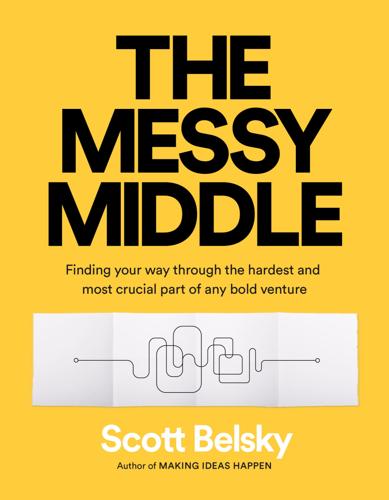
The Messy Middle: Finding Your Way Through the Hardest and Most Crucial Part of Any Bold Venture
by
Scott Belsky
Published 1 Oct 2018
Taflinger, “Taking ADvantage: Social Basis of Human Behavior,” Social Basis of Human Behavior, May 28, 1996, https://public.wsu.edu/~taflinge/socself.html. “In ancient history”: E. O. Wilson, “Why Humans Hate,” Newsweek, April 02, 2012, www.newsweek.com/biologist-eo-wilson-why-humans-ants-need-tribe-64005. “it actually paid”: Sarah Green Carmichael, “Sheryl Sandberg and Adam Grant on Resilience,” Harvard Business Review, April 27, 2017, https://hbr.org/ideacast/2017/04/sheryl-sandberg-and-adam-grant-on-resilience.html. “I never would have gotten”: Ibid. “The impediment to action”: Eric Ravenscraft, “The Impediment to Action Advances Action,” LifeHacker, October 9, 2016, https://lifehacker.com/the-impediment-to-action-advances-action-1788748064.
…
However complex these societal groups become, our psychology remains wired on the principle that groups equal safety. So instead of facing adversity solo, we instinctively look for groups, for comfort and restoration. Speaking on Harvard Business Review’s IdeaCast about a book he coauthored with Sheryl Sandberg—Option B: Facing Adversity, Building Resilience, and Finding Joy—Adam Grant, a renowned organizational psychologist and Wharton professor, describes the business incentives of group support. Studies show that when companies provided assistance programs that offer financial support and time off when employees faced unexpected adversity (such as if their home was damaged by a natural disaster or a relative fell sick), “it actually paid dividends in that people felt like they belong now to a more caring company,” Grant says.
…
Studies show that when companies provided assistance programs that offer financial support and time off when employees faced unexpected adversity (such as if their home was damaged by a natural disaster or a relative fell sick), “it actually paid dividends in that people felt like they belong now to a more caring company,” Grant says. “They took pride in their employer as a really human place to work. And they were more committed as a result.” Sheryl Sandberg, Facebook COO and whose personal experience of her husband Dave Goldberg dying suddenly was the inspiration for Option B, recalls, “I never would have gotten through this without Mark [Zuckerberg]. Mark was at my house the day I came home from Mexico and told my children. Mark literally planned Dave’s funeral.
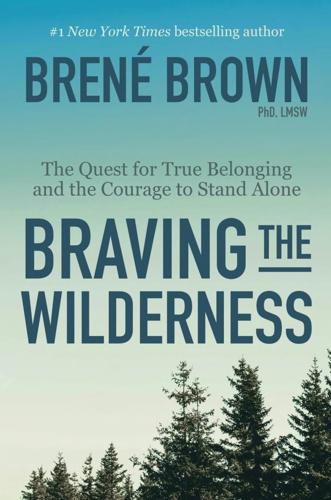
Braving the Wilderness: The Quest for True Belonging and the Courage to Stand Alone
by
Brené Brown
Published 15 Mar 2017
Danny led us in prayer, we told funny stories, and Nathan played the guitar while Diana sang the “Ave Maria.” It was 90 degrees in the Texas Hill Country and you could barely hear the stories and music over the shrilling of the cicadas. I kept thinking, This is exactly what it means to be human. This humanity transcends all of those differences that keep up us apart. In Sheryl Sandberg and Adam Grant’s beautiful 2017 book about grief and courage, Option B, Sandberg tells a wrenching and wholehearted story about collective pain. Her husband, Dave, died suddenly while they were on vacation. Their children were in second and fourth grade. She writes, “When we arrived at the cemetery, my children got out of the car and fell to the ground, unable to take another step.
…
“How Great Thou Art”: Carl Gustav Boberg, “How Great Thou Art,” Stuart K. Hine, Trans. Christian hymn, 1885. “Music, uniquely among the arts”: Oliver Sacks, Musicophilia: Tales of Music and the Brain, revised and expanded edition (New York: Random House, 2007), p. 329. “When we arrived at the cemetery” and following quotes: Sheryl Sandberg and Adam Grant, Option B: Facing Adversity, Building Resilience, and Finding Joy (New York: Alfred A. Knopf, 2017), pp. 6, 12, 13. “If you don’t have anything nice to say, come sit next to me”: This quotation, in various forms, is generally attributed to Alice Roosevelt Longworth; see e.g. quoteinvestigator.com/category/alice-roosevelt-longworth/.
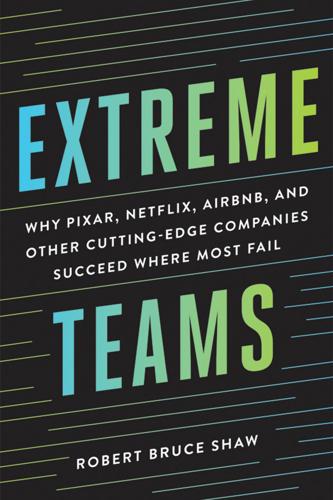
Extreme Teams: Why Pixar, Netflix, AirBnB, and Other Cutting-Edge Companies Succeed Where Most Fail
by
Robert Bruce Shaw
,
James Foster
and
Brilliance Audio
Published 14 Oct 2017
Netflix, with a track record of taking big risks in the pursuit of growth, will likely become the dominant media company in the world. Netflix is equally bold in its approach to people management. More than 8 million people have downloaded a presentation of the firm’s operating principles.8 Sheryl Sandberg, CFO of Facebook and author of Lean In, suggests that the Netflix “culture deck” may be the most important document ever produced in Silicon Valley.9 In it, the company describes how it operates and, in particular, its freedom and responsibility culture. Netflix believes in giving its employees a great deal of autonomy but also holding them to high standards of performance.
…
The downside for women is that they may be expected to do relationship work that is time consuming and often unrecognized.61 In one study, for example, scholars Madeline E. Heilman and Julie Chen found that women were rated more harshly if they didn’t help another, in contrast to their male counterparts. They also received less “credit” when they did help a colleague—in part because they were expected to do so. Adam Grant and Sheryl Sandberg, commenting on this study, note, “Over and over, after giving identical help, a man was significantly more likely to be recommended for promotions, important projects, raises and bonuses. A woman had to help just to get the same rating as a man who didn’t help.”62 The Logic and Limits of Results and Relationships The Need for Results The Need for Relationships •Team meets the current expectations of the organization and customers •Team builds the capabilities needed to deliver results in the future •Cohesion among team members •Collaboration with other teams •Belief in the company and its leaders The Risks of Excessive Results The Risks of Excessive Relationships Increased potential for . . .
…
Muros, “Gender Differences in Burnout: A Meta-Analysis,” Journal of Vocational Behavior 77 (2010), 168–85. Madeline E. Heilman and Julie J. Chen, “Same Behavior, Different Consequences: Reactions to Men’s and Women’s Altruistic Citizenship Behavior,” Journal of Applied Psychology 90 (2005), 431–41. 62The quote is from Adam Grant and Sheryl Sandberg, “Madam C.E.O., Get Me a Coffee,” New York Times, February 16, 2016. 63Barry Johnson, Polarity Management, HRD PRess; 2014. 64Robert Bruce Shaw interview. 65Ed Catmull, CEO of Pixar, notes the downside of moving too quickly on underperformers on those who remain: “It makes them think, ‘oh, if I screw up, they’re going to remove me.’
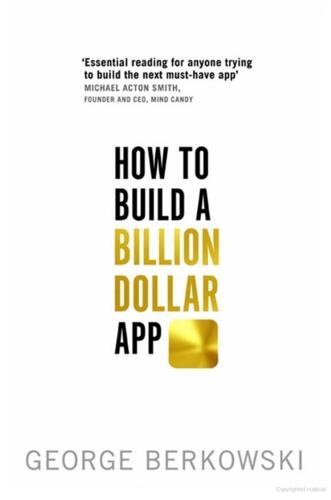
How to Build a Billion Dollar App: Discover the Secrets of the Most Successful Entrepreneurs of Our Time
by
George Berkowski
Published 3 Sep 2014
It’s not just a theory My bookshelves are piled high with books brimming with great advice about how to build a great business, about how to cross chasms and be an effective executive. Biographies of Apple cofounder Steve Jobs, investor Warren Buffett, Google cofounder Larry Page, Microsoft cofounder Bill Gates and businesswoman and Facebook chief operating officer Sheryl Sandberg peer down over my desk. But, as I reread these books, I keep finding business strategies that no longer work, or principles that, although only a few years old, seem to be already outdated in the fast-moving world of mobile technology. Today, the most successful new technology businesses are rewriting the rules in real time.
…
Or is this person a fair-weather entrepreneur? Talk about the hardest things you’ve worked on before. Talk about perseverance and stamina. If at this stage your visions are not 100 per cent aligned, there is very little chance it will work. A great example of this approach was when Mark Zuckerberg was ‘interview-dating’ Sheryl Sandberg for the number-two position at Facebook. While other people were involved in the founding of Facebook, Zuckerberg was without any doubt the one driving the bus for the first few years. It was clear he needed the equivalent of a cofounder – a leader and manager (and adult) – to help him take the company to the next level.
…
On many levels, scaling an organisation is not tied to a specific industry experience – but is more related to the type of organisation required to deliver a certain type of business model. Everyone’s Doing It The addition of an experienced COO is a strategy repeated often by great technology startups. One of the most well-known success stories is that of Sheryl Sandberg, COO at Facebook. I talked about her earlier in the book and the ‘cofounder dating’ she engaged in with Facebook CEO Mark Zuckerberg. Before Facebook she spent seven years at Google, building up a huge team as vice president of global online sales and operations. She was also involved in launching Google’s philanthropic arm Google.org.

Invisible Women
by
Caroline Criado Perez
Published 12 Mar 2019
One tech company made managers truly accountable for their decisions on salary increases by collecting data on all their decisions and, crucially, appointing a committee to monitor this data.77 Five years after adopting this system, the pay gap had all but disappeared. CHAPTER 5 The Henry Higgins Effect When Facebook COO Sheryl Sandberg got pregnant for the first time she was working at Google. ‘My pregnancy was not easy,’ she wrote in her bestselling book Lean In. She had morning sickness for the whole nine months. She didn’t just develop a bump, her whole body was swollen. Her feet went up two sizes ‘turning into odd-shaped lumps I could see only when they were propped up on a coffee table’.
…
And, of course, it is. It is a matter of justice that women have an equal chance of success as their equally qualified male colleagues. But female representation is about more than a specific woman who does or doesn’t get a job, because female representation is also about the gender data gap. As we saw with Sheryl Sandberg’s story about pregnancy parking, there will be certain female needs men won’t think to cater for because they relate to experiences that men simply won’t have. And it’s not always easy to convince someone a need exists if they don’t have that need themselves. Dr Tania Boler, founder of women’s health tech company Chiaro, thinks that the reluctance to back female-led companies is partly a result of the ‘stereotype that men like great design and great tech and women don’t’.
…
More than 75% of British women on a programme for aspiring female leaders said that sexist abuse of female politicians online ‘was a point of concern when considering whether to pursue a role in public life’.70 In Australia, 60% of women aged eighteen to twenty-one and 80% of women over thirty-one said the way female politicians were treated by the media made them less likely to run for office.71 Nigeria experienced a ‘marked decline’ in the number of female politicians elected to the country’s congress between 2011 and 2015; a study by the US NGO the National Democratic Institute found that this could be ‘attributed to the violence and harassment that women in office face’.72 And, as we have seen, this decline in female representation will give rise to a gender data gap that in turn will result in the passing of less legislation that addresses women’s needs. The evidence is clear: politics as it is practised today is not a female-friendly environment. This means that while technically the playing field is level, in reality women operate at a disadvantage compared to men. This is what comes of devising systems without accounting for gender. Sheryl Sandberg’s approach for navigating hostile work environments, outlined in her book Lean In, is for women to buckle up and push through. And of course that is part of the solution. I am not a female politician, but as a woman with a public profile I get my own share of threats and abuse. And, unpopular as this opinion may be, I believe that the onus is on those of us who feel able to weather the storm, to do so.

To Save Everything, Click Here: The Folly of Technological Solutionism
by
Evgeny Morozov
Published 15 Nov 2013
Peter Thiel, the first private investor in Facebook, contrasts the authenticity offered by Facebook—where no pseudonyms are allowed—with that of its former rival, MySpace, where everything goes. “MySpace is about being someone fake on the internet; everyone could be a movie star. [It is] very healthy that the real people have won out over the fake people,” he notes. Sheryl Sandberg, Facebook board member and chief operating officer, goes even further in emphasizing how central the idea of authenticity is to the company’s activities. “Expressing our authentic identity will become even more pervasive in the coming year,” she notes in an essay she wrote for the Economist about 2012.
…
As philosopher Charles Guignon puts it, “What is crucial about authenticity is not just the intensity of the commitment and fervor of the expression it carries with it, but the nature of the content of the commitment as well.” Furthermore, in the hands of Facebook, authenticity becomes just a rhetorical weapon that fuels user anxieties and results in even more data being uploaded to the site. When Sheryl Sandberg writes that Facebook profiles are now “detailed self-portraits” that “express our authenticity identity,” she is also stating the obvious: the only way to make such portraits even more authentic is by uploading and sharing even more details. But Facebook wouldn’t be Facebook if it didn’t stack the cards against users.
…
Is it naïve to suppose that there’s more to life than tracking the efficiency of nutritional supplements and testing the performance of gaming apps? On Frictionless Traps Solutionism will rule supreme until designers, architects, and engineers (of both social and technological varieties) abandon simplistic models of what it’s like to be human. Despite what Facebook’s Sheryl Sandberg believes, we do not bring our stable, authentic self to technologies we use, only to recover it in the same mint condition ten years later. Technologies actively shape our notion of the self; they even define how and what we think about it. They shape the contours of what we believe to be negotiable and nonnegotiable; they define the structure and tempo of our self-experimentation.

The Contrarian: Peter Thiel and Silicon Valley's Pursuit of Power
by
Max Chafkin
Published 14 Sep 2021
The scoop was modest—Trending Topics had nothing to do with the regular news feed, which was curated by algorithm and was full of right-wing content—but it enraged conservatives, who saw it as proof that Facebook was biased in a broader way. The Drudge Report, which had been among the banned outlets, led with a giant and unflattering picture of Zuckerberg’s deputy Sheryl Sandberg, the author of the book Lean In. not leaning in . . . leaning left! the headline screamed. facebook under fire was the Fox News chyron. Facebook denied the allegations, but Zuckerberg sensed that this was a crisis to be managed, and he turned to Thiel to help him. On Wednesday, May 18, a group of sixteen prominent right-wing media personalities were summoned to Menlo Park for a meeting.
…
But the real stars were the CEOs of the United States’ largest and most important tech companies, and their shepherd in all things Trump, Peter Thiel. He sat at Trump’s left elbow, with Pence on the other side. To his left was Apple’s Tim Cook. Arrayed around the table, interspersed between Trump’s advisers and children, was a group that included Facebook’s Sheryl Sandberg and Amazon’s Jeff Bezos, as well as the CEOs of Microsoft, Cisco, Oracle, Intel, and IBM. “These are monster companies,” Trump said, beaming before lavishing praise on Thiel. He credited the Silicon Valley investor for having seen “something very early—maybe even before we saw it.” Thiel had tucked his arms under the table to make room for Trump’s broad shoulders and seemed to shrink away from the president-elect, who was having none of it.
…
It was much harder to show people a lot of ads on small screens. “Without an earth-changing idea,” MIT Technology Review predicted not long after the IPO, “it will collapse.” Two pension funds, including a group of Arkansas teachers, filed a class action lawsuit, claiming that Zuckerberg, Thiel, Sheryl Sandberg, and Facebook’s bankers had underplayed Facebook’s difficulties on smartphones when they’d sold the stock during the IPO. Facebook eventually paid $35 million to settle the suit. “That was a terrible summer,” said one former Facebook staffer. “People were talking about us like we were going to be a penny stock.”

The Age of Surveillance Capitalism
by
Shoshana Zuboff
Published 15 Jan 2019
Madhumita Murgia and David Bond, “Google Apologises to Advertisers for Extremist Content on YouTube,” Financial Times, March 20, 2017; Sam Levin, “Mark Zuckerberg: I Regret Ridiculing Fears Over Facebook’s Effect on Election,” Guardian, September 27, 2017, http://www.theguardian.com/technology/2017/sep/27/mark-zuckerberg-facebook-2016-election-fake-news; Robert Booth and Alex Hern, “Facebook Admits Industry Could Do More to Combat Online Extremism,” Guardian, September 20, 2017, http://www.theguardian.com/technology/2017/sep/20/facebook-admits-industry-could-do-more-to-combat-online-extremism; Scott Shane and Mike Isaac, “Facebook to Turn Over Russian-Linked Ads to Congress,” New York Times, September 21, 2017, https://www.nytimes.com/2017/09/21/technology/face book-russian-ads.html; David Cohen, “Mark Zuckerberg Seeks Forgiveness in Yom Kippur Facebook Post,” Adweek, October 2, 2017, http://www.adweek.com/digital/mark-zuckerberg-yom-kippur-facebook-post; “Exclusive Interview with Facebook’s Sheryl Sandberg,” Axios, October 12, 2017, https://www.axios.com/exclusive-interview-facebook-sheryl-sandberg-2495538841.html; Kevin Roose, “Facebook’s Frankenstein Moment,” New York Times, September 21, 2017, https://www.nytimes.com/2017/09/21/technology/face book-frankenstein-sandberg-ads.html. 45. David Cohen, “Mark Zuckerberg Seeks Forgiveness in Yom Kippur Facebook Post.” 46.
…
The twenty-three-year-old CEO understood the potential of surveillance capitalism, but he had not yet mastered Google’s facility in obscuring its operations and intent. The pressing question in Facebook’s headquarters—“How do we turn all those Facebook users into money?”—still required an answer.85 In March 2008, just three months after having to kill his first attempt at emulating Google’s logic of accumulation, Zuckerberg hired Google executive Sheryl Sandberg to be Facebook’s chief operating officer. The onetime chief of staff to US Treasury Secretary Larry Summers, Sandberg had joined Google in 2001, ultimately rising to be its vice president of global online sales and operations. At Google she led the development of surveillance capitalism through the expansion of AdWords and other aspects of online sales operations.86 One investor who had observed the company’s growth during that period concluded, “Sheryl created AdWords.”87 In signing on with Facebook, the talented Sandberg became the “Typhoid Mary” of surveillance capitalism as she led Facebook’s transformation from a social networking site to an advertising behemoth.
…
A coalition of privacy groups presented a new complaint to the FTC, implicitly recognizing the logic of the dispossession cycle: “Google has done incrementally and furtively what would plainly be illegal if done all at once.”98 Facebook’s IPO in 2012 was notoriously botched when last-minute downward revisions of its sales projections, precipitated by the rapid shift to mobile devices, led to some unsavory dealings among its investment bankers and their clients. But Zuckerberg, Sheryl Sandberg, and their team quickly mastered the nuances of the dispossession cycle, this time to steer the company toward mobile ads. They learned to be skilled and ruthless hunters of behavioral surplus, capturing supplies at scale, evading and resisting law, and upgrading the means of production to improve prediction products.

WEconomy: You Can Find Meaning, Make a Living, and Change the World
by
Craig Kielburger
,
Holly Branson
,
Marc Kielburger
,
Sir Richard Branson
and
Sheryl Sandberg
Published 7 Mar 2018
. | Identifiers: LCCN 2017051206 (print) | LCCN 2017056888 (ebook) | ISBN 9781119447832 (pdf) | ISBN 9781119447818 (epub) | ISBN 9781119447795 (cloth) Subjects: LCSH: Social responsibility of business. | Social entrepreneurship. Classification: LCC HD60 (ebook) | LCC HD60 .K4845 2018 (print) | DDC 658.4/08–dc23 LC record available at https://lccn.loc.gov/2017051206 WECONOMY Foreword By Sheryl Sandberg It was my first day on the ground in India. The year was 1992 and I had graduated from college a few months before. I was working as a research assistant at the World Bank and this was my first chance to leave the air-conditioned Washington, D.C., headquarters and see what development work actually was like in the field.
…
You get a different perspective on things.” It started with a PowerPoint that went viral—seriously! The deck “Netflix Culture: Freedom & Responsibility” was created by the video-streaming company's former chief talent officer, Patty McCord, and was shared over 13 million times on Slideshare. Sheryl Sandberg called the presentation “the most important document ever to come out of the Valley.” McCord started a revolution for work-life balance. In it, the company explained its policy on holidays: “We should focus on what people get done, not how many hours or days worked. Just as we don't have a nine-to-five day policy, we don't need a vacation policy.” 5 Hastings says work must also be about play.
…
With thanks to the incredibly talented Andrew Duffy, our first collaborator, who helped us brainstorm initial concepts and provided us with the foundational draft on which everything was built. Shelley Page, our dear friend and confidante, will always be our editor-in-residence, a voice of reason, guidance, and an invaluable perspective. No project would be complete without your input. To Sheryl Sandberg and Sir Richard Branson, thank you for the inspiring words. We couldn't think of two better people to open and close this book; each of you embodies the principles of the WEconomy, putting purpose at the forefront of business. We are grateful to Brian McGregor, Sue Allan, Rick Groves, Kieran Green, and Lee-Anne Goodman for their writing contributions, insights, and research.

Messing With the Enemy: Surviving in a Social Media World of Hackers, Terrorists, Russians, and Fake News
by
Clint Watts
Published 28 May 2018
Even when dragged in front of Congress, Facebook founder Mark Zuckerberg, known for public awkwardness, sailed through testimony, fully overmatching his congressional interrogators, who seemed ill equipped or laughably out of touch with regard to how today’s technology works. Facebook’s second-in-command, Sheryl Sandberg, did equally well, and it looked for most of the past year as if the public’s and regulators’ ire toward Facebook would wane. That was until mid-November 2018. The New York Times dropped a bombshell on Facebook’s comeback, asserting that Facebook, facing user backlash, employed an opposition-research firm to discredit detractors by linking them to George Soros, a wealthy liberal donor who’s been the target of personal attacks and fake news on sites such as Facebook.35 Hiring of the public relations firm sparked public outrage undoing much of the progress Facebook had made countering disinformation since 2016.
…
Two years of public outrage and congressional hearings would lead one to believe that government regulation would have been instituted, but that would not be true. Every congressional session with the social media giants showed just how unlikely lawmakers are to effectively regulate tech companies. Mark Zuckerberg, Sheryl Sandberg, Jack Dorsey, and Google CEO Sundar Pichai—introverted techies—all handled congressional grilling well and outmatched the legislators who would regulate them. Even when bipartisan support for legislation exists, Congress has been unable to move laws forward to help defend the 2018 midterm elections.
…
utm_term=.e6ecc3ff9a8e. 22. https://www.bloomberg.com/news/articles/2018–12–14/meet-the-russians-picked-for-butina-s-trip-to-trump-breakfast. 23. https://www.cnn.com/2018/02/07/politics/russia-delegation-washington-prayer-breakfast/index.html. 24. https://web.archive.org/web/20140818073152/http:/archive.adl.org/anti_semitism/duke_russia.html. 25. https://www.thedailybeast.com/richard-spencer-and-white-supremacists-return-to-charlottesville-chanting-you-will-not-replace-us. 26. https://leagueofthesouth.com/российский-охват-russian-outreach/. 27. https://www.apnews.com/a4ffacbbf51748fc86eb442fb3db18b5. 28. https://www.washingtonexaminer.com/news/congress/gop-senators-headed-to-moscow-to-smooth-things-over-with-putin. 29. https://dailycaller.com/2018/03/08/the-ever-changing-russia-narrative-in-american-politics-is-cynically-false-public-manipulation/. 30. https://www.nbcnews.com/tech/tech-news/twitter-s-response-russia-inquiry-inadequate-democratic-senator-says-n805646. 31. https://blog.twitter.com/official/en_us/topics/company/2018/enabling-further-research-of-information-operations-on-twitter.html. 32. https://blog.twitter.com/official/en_us/topics/company/2018/twitter-health-metrics-proposal-submission.html. 33. https://medium.com/dfrlab/youtubes-kremlin-disinformation-problem-d78472c1b72b. 34. https://www.facebook.com/facebookmedia/blog/working-to-stop-misinformation-and-false-news. 35. https://www.nytimes.com/2018/11/14/technology/facebook-data-russia-election-racism.html and https://www.nytimes.com/2018/11/29/technology/george-soros-facebook-sheryl-sandberg.html. 36. https://www.warner.senate.gov/public/index.cfm/the-honest-ads-act. 37. https://www.politico.com/story/2018/03/22/election-security-bill-congress-437472. 38. https://www.washingtonpost.com/technology/2018/11/08/white-house-shares-doctored-video-support-punishment-journalist-jim-acosta/?

Your Computer Is on Fire
by
Thomas S. Mullaney
,
Benjamin Peters
,
Mar Hicks
and
Kavita Philip
Published 9 Mar 2021
Our task for a better future must be to foster a willingness to subdivide and reengineer failing systems at a basic, structural level, rather than contenting ourselves to simply patch existing failures in our digital infrastructures—leaving the broader systems that created these problems largely unchanged. Notes 1. Sheryl Sandberg’s Lean In: Women, Work, and the Will to Lead (New York: Alfred A. Knopf, 2013) admonished women to try to overcome structural sexism through sheer force of will and individual action, ignoring the enormous privilege that this kind of message takes for granted. The Guardian’s Zoe Williams described it as a “carefully inoffensive” book that was not “about how women could become more equal, but about how women can become more like Sheryl Sandberg.” Zoe Williams, “Book Review: Lean In,” Guardian (February 13, 2013), https://www.theguardian.com/books/2013/mar/13/lean-in-sheryl-sandberg-review.
…
Zoe Williams, “Book Review: Lean In,” Guardian (February 13, 2013), https://www.theguardian.com/books/2013/mar/13/lean-in-sheryl-sandberg-review. It is perhaps not surprising that Sandberg, chief operating officer of Facebook, wrote a supposedly feminist book that nonetheless endorsed and sought to maintain all of the exclusionary power structures that, on the surface, it claimed to critique. 2. Google Walkout for Real Change, “Google Employees and Contractors Participate in Global ‘Walkout for Real Change,’” Medium (November 2, 2018), https://medium.com/@GoogleWalkout/google-employees-and-contractors-participate-in-global-walkout-for-real-change-389c65517843; Matthew Weaver et al., “Google Walkout: Global Protests after Sexual Misconduct Allegations,” Guardian (November 1, 2018), https://www.theguardian.com/technology/2018/nov/01/google-walkout-global-protests-employees-sexual-harassment-scandals; Susan Fowler, “Reflecting on One Very, Very Strange Year at Uber,” personal blog (February 19, 2017), https://www.susanjfowler.com/blog/2017/2/19/reflecting-on-one-very-strange-year-at-uber; Maya Kosoff, “Mass Firings at Uber as Sexual Harassment Scandal Grows,” Vanity Fair (June 6, 2017), https://www.vanityfair.com/news/2017/06/uber-fires-20-employees-harassment-investigation. 3.
…
We believe that one solution lies in connecting tech and social justice leaders to spearhead revolutionary tech programs whose benefits extend to the most disadvantaged of society.”54 Jones argues that showcasing minorities as successful coders can also change stereotypes about technical talent: “The minute we have an African-American Mark Zuckerberg or a Latina Sheryl Sandberg, the conversation will shift.”55 The point is not that every female or minority coder sees their work in political terms, or that increasing their representation will automatically make computer culture more democratic—but without groups that are led and defined by underrepresented coders, a shift toward equality is unlikely to happen.
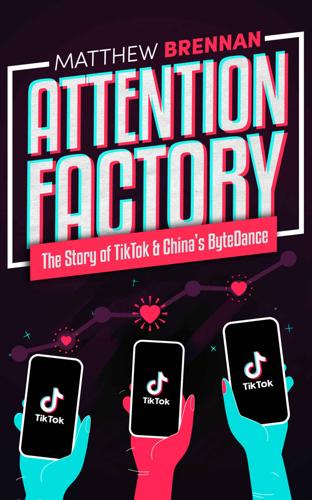
Attention Factory: The Story of TikTok and China's ByteDance
by
Matthew Brennan
Published 9 Oct 2020
While many videos on TikTok had hundreds of thousands of likes, “the videos in Lasso’s nearly identical feed typically have a few dozen,” 298 noted one highly critical New York Times article. Experimenting further, another clone of TikTok “Reels,” this time built into Instagram, began testing in the Brazilian market in late 2019. By early 2020 Facebook COO Sheryl Sandberg was publicly admitting that the company was concerned about TikTok. “Of course, we worry about it,” 299 she said, after noting that her children loved using the app, later adding, “They’ve gotten to bigger numbers faster than we ever did.” A pattern that had begun in China was now repeating itself in the West.
…
v=P3UjKrYckA0 296 https://www.tiktok.com/@davidkasprak/video/6640342878226763014?source=h5_m 297 https://www.theverge.com/2019/10/1/20892354/mark-zuckerberg-full-transcript-leaked-facebook-meetings 298 https://www.nytimes.com/2019/11/03/technology/tiktok-facebook-youtube.html 299 https://www.nbcnews.com/podcast/byers-market/transcript-facebook-s-sheryl-sandberg-n1145051 300 https://themargins.substack.com/p/tiktok-the-facebook-competitor 301 https://youtu.be/rW8mDQYrOnw?t=1877 302 https://creatormarketplace.tiktok.com/ 303 https://newsroom.tiktok.com/en-us/creator-fund-first-recipients 304 https://www.toutiao.com/i6803294487876469251/?

Fire and Fury: Inside the Trump White House
by
Michael Wolff
Published 5 Jan 2018
Powell, who had come into the White House as an adviser to Ivanka Trump, rose, in weeks, to a position on the National Security Council, and was then, suddenly, along with Cohn, her Goldman colleague, a contender for some of the highest posts in the administration. At the same time, both she and Cohn were spending a good deal of time with their ad hoc outside advisers on which way they might jump out of the White House. Powell could eye seven-figure comms jobs at various Fortune 100 companies, or a C-suite future at a tech company—Facebook’s Sheryl Sandberg, after all, had a background in corporate philanthropy and in the Obama administration. Cohn, on his part, already a centamillionaire, was thinking about the World Bank or the Fed. Ivanka Trump—dealing with some of the same personal and career considerations as Powell, except without a viable escape strategy—was quite in her own corner.
…
Actually, she was Deputy National Security Advisor for Strategy—the difference, Bannon pointed out, between the COO of a hotel chain and the concierge. Coming back from the overseas trip, Powell began to talk in earnest to friends about her timetable to get out of the White House and back into a private-sector job. Sheryl Sandberg, she said, was her model. “Oh my fucking god,” said Bannon. On May 26, the day before the presidential party returned from the overseas trip, the Washington Post reported that during the transition, Kushner and Sergey Kislyak, the Russian ambassador, had, at Kushner’s instigation, discussed the possibility of having the Russians set up a private communications channel between the transition team and the Kremlin.
…
“McMaster wants to send more troops to Afghanistan, so we’re going to send him,” said a triumphal Bannon. In Bannon’s scenario, Trump would give McMaster a fourth star and “promote” him to top military commander in Afghanistan. As with the chemical attack in Syria, it was Dina Powell—even as she made increasingly determined efforts to get herself out of the White House, either on a Sheryl Sandberg trajectory or, stopping first at a way station, as ambassador to the United Nations—who struggled to help support the least disruptive, most keep-all-options-open approach. In this, both because the approach seemed like the safest course and because it was the opposite of Bannon’s course, she readily recruited Jared and Ivanka.
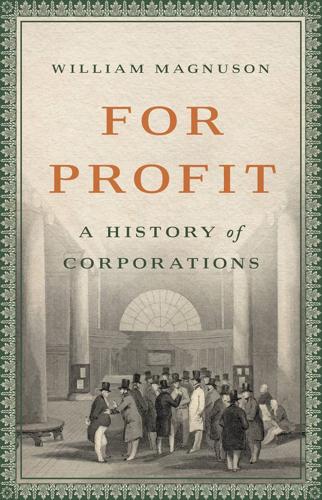
For Profit: A History of Corporations
by
William Magnuson
Published 8 Nov 2022
Stories emerged of people buying engagement rings online and, within minutes, receiving calls from their friends saying congratulations. Some users sued over the perceived violation of their privacy. Facebook disbanded the program, and Zuckerberg apologized.26 In response to these missteps, Zuckerberg decided to try something new. In the spring of 2008, he brought on a new chief operating officer, Sheryl Sandberg, and tasked her with building out Facebook’s monetization strategy. Sandberg made a splash at Facebook almost immediately. On her first day, while attending a new-employee boot camp, she turned the tables on the trainers: instead of receiving the training, she gave it, delivering a speech on monetization to the attendees.
…
Perhaps even more surprising was how they conducted the experiment: without telling the users, the researchers intentionally tweaked their News Feeds to hide either positive or negative posts. As a result, the users tended to themselves become more positive or negative (as measured by what they shared on their own posts). But the idea that a large corporation was toying with hundreds of thousands of people’s emotions just to see what would happen caused an immediate blowback. Sheryl Sandberg was forced to apologize for the furor, stating, “This was part of ongoing research companies do to test different products, and that was what it was; it was poorly communicated. And for that communication we apologize. We never meant to upset you.”37 In the beginning, it wasn’t entirely clear why all this data gathering mattered.
…
Hannah Kuchler, “How Facebook Grew Too Big to Handle,” Financial Times, Mar. 28, 2019. 23. Levy, Facebook 267. 24. Levy, Facebook 141. 25. Levy, Facebook 180. 26. Dan Farber, “Facebook Beacon Update: No Activities Published Without Users Proactively Consenting,” ZDNet, Nov. 29, 2007. 27. Levy, Facebook 195–96. 28. Robert Hof, “Facebook’s Sheryl Sandberg: ‘Now Is When We’re Going Big’ in Ads,” Robert Hof, Apr. 20, 2011; Emily Stewart, “Lawmakers Seem Confused About What Facebook Does—and How to Fix It,” Vox, Apr. 10, 2018. 29. Antonio Garcia Martinez, Chaos Monkeys: Obscene Fortune and Random Failure in Silicon Valley 5 (2018); Levy, Facebook 197. 30.

The Equality Machine: Harnessing Digital Technology for a Brighter, More Inclusive Future
by
Orly Lobel
Published 17 Oct 2022
One such ad, targeting highly paid executives, appeared 1,816 times to men and just 311 times to women. Recalling earlier résumé studies, the Carnegie Mellon study employed fake job-seeking profiles to ensure that gender—not browsing behavior, shopping patterns, or social connections—was the only difference.12 In a press release, Facebook CFO Sheryl Sandberg, author of the feminist call to action Lean In, said, “Getting this right is deeply important to me and all of us at Facebook because inclusivity is a core value for our company.” And yet, as we have already seen, taking out identity markers as inputs doesn’t always guarantee that the algorithm will “get it right.”
…
You Can’t Be What You Can’t See Cultural innovation comes with social progress, but there is no invisible hand that will push communities to change their collective perceptions. With a smartphone in hand and an expanded range of digital capacities, everyone is a photographer and an artist. Getty has been deliberate in nudging the choices of image seekers. In 2014, the Getty Foundation—with the help of Facebook COO and Lean In author Sheryl Sandberg—developed a collection of diverse, empowering images of women, as well as same-sex families and men performing non-traditional gender roles. The motto of the Lean In Collection is that “you can’t be what you can’t see.” The goal of the collaboration is to shift perceptions, overturn clichés, and incorporate authentic images of women into media and advertising.
…
Samuel Gibbs, “Women Less Likely to Be Shown Ads for High-Paid Jobs on Google, Study Shows,” Guardian, July 8, 2015, https://www.theguardian.com/technology/2015/jul/08/women-less-likely-ads-high-paid-jobs-google-study; Nathan Newman, “Racial and Economic Profiling in Google Ads: A Preliminary Investigation (Updated),” Huffpost, last updated December 6, 2017, https://www.huffpost.com/entry/racial-and-economic-profi_b_970451. 13. Sheryl Sandberg, “Doing More to Protect Against Discrimination in Housing, Employment and Credit Advertising,” Meta, March 19, 2019, https://about.fb.com/news/2019/03/protecting-against-discrimination-in-ads/. 14. Facebook, Facebook’s Civil Rights Audit—Final Report (2020), 73, https://about.fb.com/wp-content/uploads/2020/07/Civil-Rights-Audit-Final-Report.pdf (describing the housing ad library). 15.
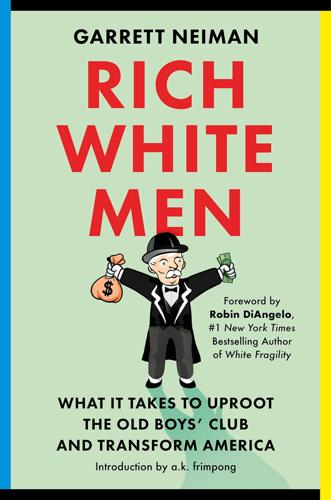
Rich White Men: What It Takes to Uproot the Old Boys' Club and Transform America
by
Garrett Neiman
Published 19 Jun 2023
Program participants improved their SAT scores from, on average, the twentieth to the fortieth percentile, and those higher test scores enabled many of them to become the first in their families to go to college. I emphasized that the Obama administration had invited us to the White House and heralded CollegeSpring as a promising model for supporting academic achievement in communities of color; we’d also receive praise from national media and then Facebook COO Sheryl Sandberg, who had written about us in her number one bestseller Lean In. Edward seemed impressed. We’re going to get this donation, I remember thinking. Then, seemingly out of the blue, he asked a question about the students we served. “So, this program of yours,” he began. “When you go into the schools, you offer the program to all of the students at the school?”
…
Since women are rarely six feet tall, gender height differences may be among the reasons why women are underrepresented in leadership positions. Anecdotal evidence seems to bear this out, since many well-known female leaders are atypically tall: former Hewlett Packard CEO Meg Whitman is six foot one; First Lady Michelle Obama is five foot eleven; U.S. Senator Elizabeth Warren, former Yahoo CEO Marissa Mayer, and former Facebook COO Sheryl Sandberg are all five foot eight; and Urusla Burns, who became the first Black woman to lead a Fortune 500 company in 2009, is six feet tall. Sometimes, it appears, part of what it takes to break glass ceilings is being tall enough to reach the glass. At the same time, though, I don’t want to imply that height carries the equivalent weight of other identity-based hundred advantages like socioeconomic status, gender, and race.
…
Khalil Gibran Muhammad, who helped shape many of this book’s ideas; Shirley Leung at the Boston Globe, who saw value in an early iteration of the compounding unearned advantages concept; Darren Walker at the Ford Foundation, who funded the background research that laid the analytical foundation for this book; my Harvard Business School professor Laura Huang, who shared her book proposal with me so I would have a road map; business executive and philanthropist Sheryl Sandberg, who introduced me to her literary agency, WME; journalist Sandy Banks, my incredible writing coach, who helped me craft the initial proposal and edit the book; and Robin DiAngelo and allen kwabena frimpong, who contributed a wonderful foreword and introduction, to this book. I also want to thank those who were instrumental in this book becoming a reality: Mel Berger, my agent at WME, who has been an incredible advocate every step of the way, including taking seriously every silly first-time author question I’ve had; Krishan Trotman, publisher at Legacy Lit, who took a chance on this project and helped me see that this book was really about challenging myths generated in the halls of power; editor Emi Ikkanda, who made innumerable contributions to this book, including a vision for structuring this book in a way that made every page better; the entire team at Hachette Book Group and the publicity firm DEY., who have played an essential role toward getting this book into the hands of readers; Sandy Banks, who took me on “low-bono” as a writing coach client because of her belief in me and this project; and University of Michigan undergraduate student Irving Peña, who took on the crucial tasks of documenting the hundreds of sources that underpin this book and creating the accompanying resource list.
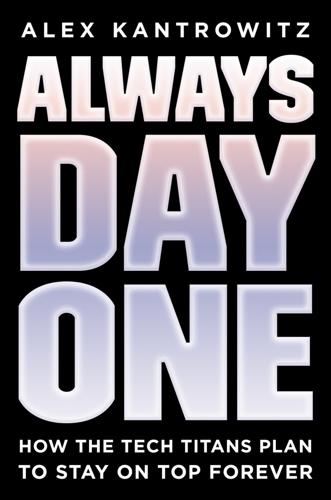
Always Day One: How the Tech Titans Plan to Stay on Top Forever
by
Alex Kantrowitz
Published 6 Apr 2020
It has nine lobbies, two layers of security to enter, and guards demanding you sign a nondisclosure agreement before taking another step. Once inside, I made my way to a glass-walled conference room, smack in the middle of everything, where Zuckerberg holds his meetings. And after he finished a conversation with his chief operating officer, Sheryl Sandberg, he ushered me in, along with my editor Mat Honan, for a chat in full view of anyone walking by. Zuckerberg had been hard at work on his “Manifesto,” a fifty-seven-hundred-word exposition outlining Facebook’s response to the troubling content, and its role in its users’ lives more broadly.
…
“Peter became a director because he was a very early investor. But Mark wanted him to stay because Peter was such a loud voice putting forward ideas that Mark disagreed with.” Zuckerberg, still only thirty-five, has filled his inner circle with more experienced people, seeking to learn from them. This is where Sheryl Sandberg fits in. When Zuckerberg was twenty-three, he realized he needed someone to help him grow the company’s business, and so he reached out to Sandberg. At the time, Sandberg was Google’s vice president of global online sales and operations, had worked in the Clinton White House, and received CEO offers from companies in Silicon Valley.

The Filter Bubble: What the Internet Is Hiding From You
by
Eli Pariser
Published 11 May 2011
Up to 60 percent of Netflix’s rentals come from the personalized guesses it can make about each customer’s movie preferences—and at this point, Netflix can predict how much you’ll like a given movie within about half a star. Personalization is a core strategy for the top five sites on the Internet—Yahoo, Google, Facebook, YouTube, and Microsoft Live—as well as countless others. In the next three to five years, Facebook COO Sheryl Sandberg told one group, the idea of a Web site that isn’t customized to a particular user will seem quaint. Yahoo Vice President Tapan Bhat agrees: “The future of the web is about personalization ... now the web is about ‘me.’ It’s about weaving the web together in a way that is smart and personalized for the user.”
…
If Mark Zuckerberg were a standard mid-twenty-something, this tangle of views might be par for the course: Most of us don’t spend too much time musing philosophically about the nature of identity. But Zuckerberg controls the world’s most powerful and widely used technology for managing and expressing who we are. And his views on the matter are central to his vision for the company and for the Internet. Speaking at an event during New York’s Ad Week, Facebook COO Sheryl Sandberg said she expected the Internet to change quickly. “People don’t want something targeted to the whole world—they want something that reflects what they want to see and know,” she said, suggesting that in three to five years that would be the norm. Facebook’s goal is to be at the center of that process—the singular platform through which every other service and Web site incorporates your personal and social data.
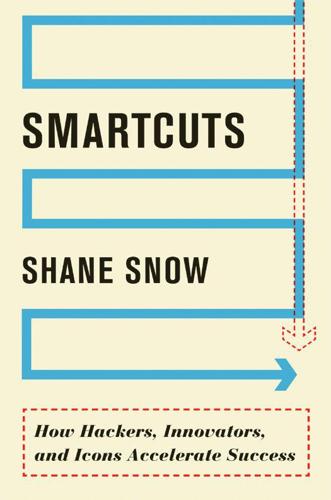
Smartcuts: How Hackers, Innovators, and Icons Accelerate Success
by
Shane Snow
Published 8 Sep 2014
In fact, one-on-one mentoring in which an organization formally matched people proved to be nearly as worthless as a person having not been mentored at all. However, when students and mentors came together on their own and formed personal relationships, the mentored did significantly better, as measured by future income, tenure, number of promotions, job satisfaction, work stress, and self-esteem. This is why Sheryl Sandberg, the COO of Facebook and the author of Lean In, dedicates a chapter in her book to this concept, arguing that asking someone to formally mentor you is like asking a celebrity for an autograph; it’s stiff, inorganic, and often doesn’t work out. “Searching for a mentor has become the professional equivalent of waiting for Prince Charming,” she writes.
…
Eby, Tammy D. Allen, Sarah C. Evans, Thomas Ng, and David L. DuBois, “Does Mentoring Matter? A Multidisciplinary Meta-Analysis Comparing Mentored and Non-mentored Individuals,” Journal of Vocational Behavior 72, no. 2 (2008): 254–67. 44 “Searching for a mentor has become the professional equivalent”: Sheryl Sandberg, Lean In: Women, Work, and the Will to Lead (Alfred A. Knopf, 2013). 46 journey-focused mentorship and not just a focus on practice: Further research shows that when protégés open up to their mentors—what my friend and NextJump.com founder Charlie Kim calls “vulnerability”—they tend to achieve more positive results: Connie R.

12 Bytes: How We Got Here. Where We Might Go Next
by
Jeanette Winterson
Published 15 Mar 2021
At present that is still possible if you leave your phone at home, walk wherever you want to go, pay cash where there is no CCTV (both increasingly difficult moves, I admit), don’t browse the internet for a few days. Soon, though, as smart devices and smart implants become normal, you won’t be logging in. You’re in. You’re on. For life. From sci-fi to Wi-Fi to my-wi. * * * Former CEO of Google Eric Schmidt, sitting next to Facebook COO Sheryl Sandberg at Davos in 2015, put it like this: The internet will disappear. There will be so many IP addresses, there will be so many devices, sensors, things you are wearing, things you are interacting with, that you won’t even sense it. It will be part of your presence all the time. This raises new ethical questions.
…
Susan Sellers, 1994 The Dialectic of Sex: The Case for Feminist Revolution, Shulamith Firestone, 1970 Sapiens: A Brief History of Humankind, Yuval Noah Harari, 2011 Invisible Women: Exposing Data Bias in a World Designed for Men, Caroline Criado Perez, 2019 The I-Ching Testosterone Rex: Myths of Sex, Science, and Society, Cordelia Fine, 2017 (and everything she has written and will write) The Gendered Brain: The New Neuroscience That Shatters the Myth of the Female Brain, Gina Rippon, 2019 The Future Isn’t Female Unlocking the Clubhouse: Women in Computing, Jane Margolis and Allan Fisher, 2002 Programmed Inequality: How Britain Discarded Women Technologists and Lost Its Edge in Computing, Marie Hicks, 2017 Algorithims of Oppression: How Search Engines Reinforce Racism, Safiya Umoja Noble, 2018 The Glass Universe: How the Ladies of the Harvard Observatory Took the Measure of the Stars, Dava Sobel, 2016 Let it Go: My Extraordinary Story – from Refugee to Entrepreneur to Philanthropist, the memoir of Dame Stephanie Shirley, 2012 (If you don’t have time for this, just find her TED Talk.) Uncanny Valley, Anna Wiener, 2020 The Second Sex, Simone de Beauvoir, 1949 Hackers: Heroes of the Computer Revolution, Steven Levy, 1984 Psychology of Crowds, Gustave Le Bon, 1896 Lean In: Women, Work, and the Will to Lead, Sheryl Sandberg, 2013 Difficult Women: A History of Feminism in 11 Fights, Helen Lewis, 2020 A Room of One’s Own, Virginia Woolf, 1929 Your Computer Is on Fire, various editors, 2021 (haven’t read this at time of going to press but looks great) The Blank Slate: The Modern Denial of Human Nature, Steven Pinker, 2002 Of Woman Born: Motherhood as Experience and Institution, Adrienne Rich, 1976 The Better Half: On the Genetic Superiority of Women, Sharon Moalem, 2020 Jurassic Car Park Nineteen Eighty-Four, George Orwell, 1949 The War of the Worlds, H.

Advertisers at Work
by
Tracy Tuten
Published 28 May 2012
That’s the best way to describe what’s next for me. I’m open to the opportunities and I plan on enjoying every moment. * * * 1TED is a non-profit organization that supports the spread of ideas through presentations by thought leaders. Learn more at www.ted.com. 2TED, “Sheryl Sandberg: Why we have too few women leaders,” www.ted.com/talks/lang/en/sheryl_sandberg_why_we_have_too_few_women_leaders.html, December 2010. 3TED, “Madeleine Albright: On being a woman and a diplomat,” www.ted.com/talks/madeleine_albright_on_being_a_woman_and_a_diplomat.html, February 2011. 4The Volkswagen “Milky Way” spot aired in 1999 and was thought to be Volkswagen’s best advertising until its 2011 spot, “The Force.”
…
I asked him for flextime to work from home one day a week. Earl made it clear that he didn’t help me out of pity, but because he valued my contribution. I learned to accept actions like these not as symptoms of weakness, but as evidence of my worth. When I was considering this job here at Mullen, I saw Sheryl Sandberg [chief operating officer at Facebook] speak at TED.1 She spoke about the lack of women in C-suite jobs. I was surprised to hear her chide women for walking away from top jobs. She said that by doing so, we didn’t allow companies the chance to be progressive and contemporary in their approach.2 I took her advice to heart and that was a major reason I asked Mullen to consider my work schedule proposal.
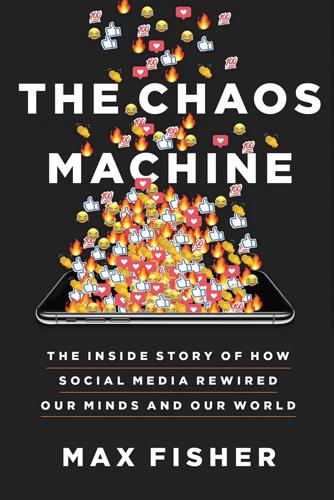
The Chaos Machine: The Inside Story of How Social Media Rewired Our Minds and Our World
by
Max Fisher
Published 5 Sep 2022
That June, he gathered the company’s fifty top executives to announce that Facebook was at war and that he was now a wartime CEO. He would be brooking less dissent, demanding greater obedience, and taking the fight to Facebook’s enemies. In a company-wide town hall, he called news coverage of Facebook’s privacy abuses, for which Facebook would face multiple regulatory fines, “bullshit.” He dressed down Sheryl Sandberg, the company’s second-ranked executive and his longtime advisor. Facebook hired a dark-arts PR firm, which seeded disparaging information, some of it false, about Facebook’s critics. Prominent investors in the venture-capitalist class announced that the Valley was at war with a dishonest national media looking to punish them for their success.
…
Pattison’s office activated its contacts in Silicon Valley. “I made this pitch on a human level: ‘Go back to your companies, get ready, start pulling together teams,’” he has recalled telling them. He set up calls between Tedros and the heads of Facebook, Google, and other platforms. Mark Zuckerberg and Sheryl Sandberg suggested the WHO set up pages on WhatsApp and Facebook to post updates and answer user questions. On February 13, two weeks after the spread of the virus now known as Covid-19 had been declared a global emergency, Pattison landed in California for a meeting, hosted at Facebook, with Silicon Valley’s top firms.
…
Just as quickly as they rolled back reforms, Silicon Valley leaders also began questioning how much responsibility they really had to change anything at all. “I think these events were largely organized on platforms that don’t have our abilities to stop hate, don’t have our standards, and don’t have our transparency,” Sheryl Sandberg, Facebook’s second in command, said of the January 6 insurrection. Her comments, though widely derided outside the Valley, sent a clear signal within it: we’re digging in. A few days later, Adam Mosseri, the former news-feed chief who now ran Instagram, said that while January 6 would “mark a big shift” in society’s relationship to technology, it was important not to overcorrect.
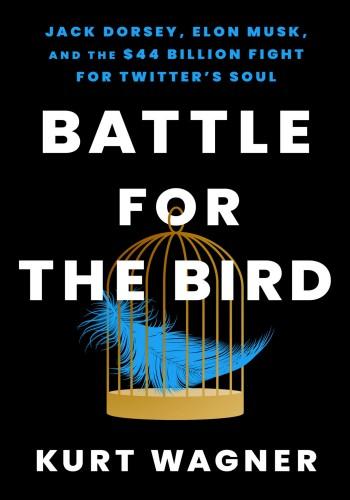
Battle for the Bird: Jack Dorsey, Elon Musk, and the $44 Billion Fight for Twitter's Soul
by
Kurt Wagner
Published 20 Feb 2024
He knew he was good at running Twitter’s business, but like everyone else, he believed Twitter’s problems were primarily related to the product, which wasn’t his strength. He floated the idea of taking a second-in-command position, working as the business lead alongside a more product-minded CEO, like Dorsey or Williams, similar to the Mark Zuckerberg–Sheryl Sandberg relationship that everyone seemed to admire over at Facebook. Of course, Dorsey’s other job stood in the way. The team at Spencer Stuart scoured Silicon Valley for anyone with a big tech or media job. The initial list of candidates reviewed by the board included almost two hundred names, many of them already holding major positions and thus highly unlikely to be interested.
…
Thank you all, Jack The following month, the president-elect hosted several prominent tech and business executives at Trump Tower in New York City to discuss working together after he was sworn in. The attendees included some of the most powerful people in the world: Amazon CEO Jeff Bezos sat next to Google cofounder Larry Page, who sat next to Facebook COO Sheryl Sandberg. Apple CEO Tim Cook sat to Trump’s left, and just a few feet away sat Tesla CEO Elon Musk. Dorsey didn’t receive an invite. Twitter was undeniably smaller than most of the other companies in attendance that day, but few were more influential, especially for Trump. Back at Twitter’s office, some on the team believed that Dorsey had been snubbed because of the #CrookedHillary advertising incident.
…
Earlier in the day, Alex Jones had shown up, walking the halls outside the hearing room in an effort to “face my accusers,” he told reporters. Dorsey’s day was particularly long since he’d actually flown to D.C. for two separate congressional hearings: a Senate hearing in the morning to talk about Twitter’s role in the 2016 U.S. election, and the House hearing in the afternoon to discuss accusations of bias. Facebook’s Sheryl Sandberg sat next to Dorsey in the morning session to answer questions about her own social network’s role in the election, which worked out well for Dorsey since she took many of the arrows. But Dorsey sat alone during the nearly four-hour-long afternoon hearing, and it was tough to tell if his answers left any impact.

The Code: Silicon Valley and the Remaking of America
by
Margaret O'Mara
Published 8 Jul 2019
David Bank, “Why Sun Thinks Hot Java Will Give You a Lift,” San Jose Mercury News, March 23, 1995, 1A; Karen Southwick, High Noon: The Inside Story of Scott McNealy and the Rise of Sun Microsystems (New York: Wiley, 1999), 131. 8. Malia Wollan, “Before Sheryl Sandberg Was Kim Polese – the Original Silicon Valley Queen,” The Telegraph.co.uk, November 11, 2013, https://www.telegraph.co.uk/technology/people-in-technology/10430933/Before-Sheryl-Sandberg-was-Kim-Polese-the-original-Silicon-Valley-queen.html, archived at https://perma.cc/Z7Y6-G2HM [inactive]. 9. Elizabeth Corcoran, “Mother Hen to an Industry,” The Washington Post, October 13, 1996, H1. 10.
…
Schmidt hadn’t been the VCs’ first choice, but his technical smarts and management credentials made him the perfect fit for a company that venerated engineering above all else. With Schmidt came others from beyond the intimate, Stanford-centric world of early Google. One notable hire came from Washington: Sheryl Sandberg, former chief of staff to the U.S. Treasury Secretary, whom Schmidt brought in to grow Google’s advertising operations. Then there was Bill Campbell, the Kodak executive who had come to Apple at the start of the Sculley years and had gone on to helm the business software powerhouse Intuit. Campbell was now Silicon Valley’s beloved “Coach,” often brought in by VCs to give encouragement and enlarge the worldview of boy-wonder founders.
…
The Valley’s Internet-era inner circle had become funders and close advisors. Peter Thiel had given Facebook its first big investment back in 2004 and was a board member. Marc Andreessen was a mentor as well, meeting Zuckerberg regularly for hash-and-egg breakfasts at a local diner. Star executives had joined from Yahoo! and Google, including Sheryl Sandberg, who became the company’s chief operating officer in 2007. Gone was the hyper-macho culture of earlier Valley giants like Intel and Sun; Facebook’s top people were a tight and friendly team, passionate about the value of their product. “Technology does not need to estrange us from one another,” declared senior executive Chris Cox, well-known around the company for the upbeat speeches he delivered to new hires.

The Facebook era: tapping online social networks to build better products, reach new audiences, and sell more stuff
by
Clara Shih
Published 30 Apr 2009
Force.com for Facebook makes it easy for Facebook developers to build enterprise social apps on Force.com’s global, trusted enterprise infrastructure. At salesforce.com, we’ve spent the last ten years building out enterprise-grade functionality like workflow, security, multilanguage and multicurrency, and integration services “in the cloud” so that developers can focus on innovation, not infrastructure. Both Sheryl Sandberg, the chief operating officer at Facebook, and I believe that this partnership will enable a whole new class of business applications inside Facebook, such as truly social CRM. The Service Cloud and Sales Cloud, our set of technologies that allow customer service reps and sales reps to tap the knowledge of customer conversations taking place on social networks, are proof that social CRM is real.
…
The Camp Amelia team who first taught me in Ghana many summers ago that nothing can’t be solved by the power of human connection and compassion, sometimes with the help of technology—Shirley Somuah, David Weekly, Katie Kollitz, Mel Burns, Nina Hsu, Sandy Yu, Julie Zhuo, Brandon Burr, Andy Szybalski, Camille Hearst, Shona Brown, Marina Remennik, Herb Walberg, Feliz Swapp, and the many thousands of kids around the world who have gone through our programs and curriculum. Todd Perry, without whose help on Faceconnector (formerly Faceforce), none of this would have ever happened. Dave Morin, Sheryl Sandberg, Elliot Schrage, Kelly Winters, and David Swain at Facebook for the historic partnership between our two companies that bring together social networking and enterprise applications and are making into reality many of the ideas in this book. Charlene Li, Dave McClure, Don Tapscott, Kevin Efrusy, Sramana Mitra, Tony Perkins, and Timothy Chou for their wisdom, thought leadership, and willingness to help with this manuscript despite having some of the industry’s busiest schedules.
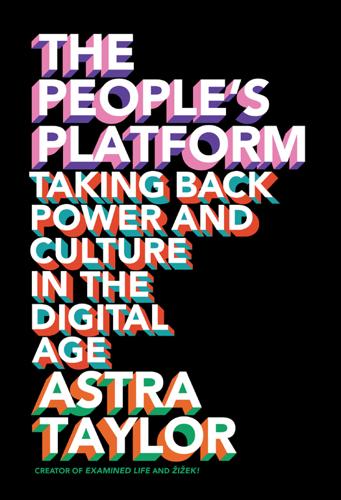
The People's Platform: Taking Back Power and Culture in the Digital Age
by
Astra Taylor
Published 4 Mar 2014
While the percentage of computer and information sciences degrees women earned rose from 14 percent to 37 percent between 1970 and 1985, that share declined to 18 percent by 2008.15 An article in the New York Times about gender and tech reported on the barriers women face in Silicon Valley: Facebook’s Sheryl Sandberg and Yahoo!’s Marissa Mayer excepted, the notion of the boy genius prevails. Over 85 percent of venture capitalists are men looking to invest in other men, and women make forty-nine cents for every dollar their male counterparts rake in. Though 40 percent of private businesses are women-owned nationwide, only 8 percent of the venture-backed tech start-ups are.
…
Meanwhile, the personal and the commercial further merged through the arrival of “social ads,” which allow marketers to turn our actions into advertisements, transforming everything we do into a form of promotion. If you “like” a product, your picture will appear, endorsing it on a friend’s page. “This is in many ways the Holy Grail of marketing: making your customers your marketers,” said Facebook’s chief operating officer, Sheryl Sandberg, and so far it seems to work.53 An analysis by Nielsen “found that people who viewed ads displaying a friend’s endorsement were 68 percent more likely to remember the ad than were people who saw a plain display ad” and that “they were more than four times as likely to say they intended to purchase the advertised product.”

The Internet Is Not the Answer
by
Andrew Keen
Published 5 Jan 2015
We thus almost have a moral obligation to reveal our true selves on the network, to participate in the real-time confessional of our brightly lit global village. That’s why the socially autistic Zuckerberg believes that we only have “one identity,” telling Kirkpatrick that “having two identities for yourself is an example of a lack of integrity.”97 And it’s why Sheryl Sandberg, Facebook’s chief operating officer, says that “you can’t be on Facebook without being your authentic self.”98 But this, like so much else that Zuckerberg and Sandberg say, is entirely wrong. Having multiple identities—as a citizen, a friend, a worker, a woman, a parent, an online buddy—is actually an example of somebody with so much integrity that they are unable to compromise their different social roles.
…
“What I missed most about not having a label wasn’t the monetary investment, but the right to be quiet, the insulation provided from incessant self-promotion,” Simone writes. “I was a singer, not a saleswoman. Not everyone wants to be an entrepreneur.”25 None of this impacts Silicon Valley’s gilded class. Some—like Google’s Eric Schmidt, Facebook’s Sheryl Sandberg, and LinkedIn founder Reid Hoffman—are also part of that tiny elite of best-selling celebrity authors. Indeed, Hoffman’s 2012 bestseller was titled The Start-up of You and advised everyone to think about their professional life as if it were an entrepreneurial project. But for those insiders who didn’t get multimillion-dollar book contracts to write about their own success, there’s always the Huffington Post—a platform designed for celebrities to post free content that peddles their own agendas, personal brands, or companies.
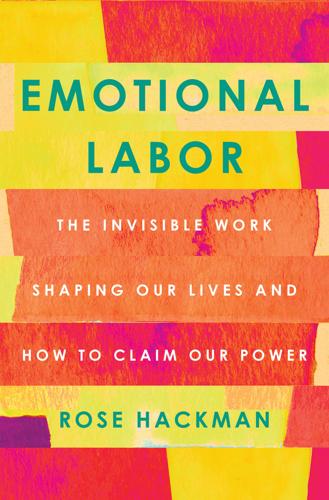
Emotional Labor: The Invisible Work Shaping Our Lives and How to Claim Our Power
by
Rose Hackman
Published 27 Mar 2023
Her mother was among the first generation of women who entered previously male-dominated white-collar industries en masse in the second half of the twentieth century.22 The figure of a corporate woman was normal to her, and she had good reason to believe her qualifications combined with her natural intelligence, charm, and assertiveness would all work in her favor as she sought to get ahead. Only a few years prior, in 2010, Sheryl Sandberg, Facebook’s COO, delivered a viral TED Talk titled “Why We Have Too Few Women Leaders” that was followed by a 2013 bestselling book, Lean In.23 Her insight promised younger women like Devin the tools to not just enter former male-dominated industries but do what few women of older generations had managed once they were there: climb up the corporate ladder and thrive.
…
Caroline Criado-Perez, Invisible Women: Data Bias in a World Designed for Men (New York: Abrams Press, 2019). 21. “Droit du Seigneur,” Encyclopedia Britannica, accessed December 17, 2020, https://www.britannica.com/topic/droit-du-seigneur. 22. “White-Collar,” Cambridge English Dictionary, accessed July 28, 2020, https://dictionary.cambridge.org/us/dictionary/english/white-collar. 23. Sheryl Sandberg, Lean In: Women, Work, and the Will to Lead (New York: Alfred A. Knopf, 2013), accessed January 20, 2021, https://leanin.org/book. 24. According to the nonprofit organization that was created in the book’s name; “About,” Lean In, accessed July 29, 2020, https://leanin.org/about. 25. “How Millennials Get News: Inside the Habits of America’s First Digital Generation,” American Press Institute, March 16, 2015, https://www.americanpressinstitute.org/publications/reports/survey-research/millennials-news/. 26.

Breaking Twitter: Elon Musk and the Most Controversial Corporate Takeover in History
by
Ben Mezrich
Published 6 Nov 2023
Advertisers, already skittish pitching campaigns into the maelstrom of a cultural and political landscape that seemed continuously on the verge of civil war, tightened their purse strings. But as destructive as the growing conflict could be, it was undeniably entertaining; despite advertisers’ concerns, engagement had risen nearly every month of the following year, reaching a height of over 321 million monthly users. In September 2018, Dorsey and Sheryl Sandberg, the COO of Facebook, had gone in front of the Senate Intelligence Committee to discuss alleged Russian interference—by way of social media—in Trump’s victory over Hillary Clinton in the 2016 election. Rumors of potential acquisition offers escalated, with megacompanies including the Walt Disney Company, Google, and Verizon all floated as possible buyers.
…
In Elon’s words, Yaccarino would “focus primarily on business operations” while Elon would continue to lead “product design & new technology,” but it seemed clear that Yaccarino’s true role was to be the adult in the room—someone competent and respectable, who could perhaps make advertisers comfortable enough to return to the platform, while taking some of the spotlight off Elon, shielding him from more reputational damage. She was there to resurrect Elon’s persona, in much the same way Sheryl Sandberg had been brought aboard Facebook to help turn wooden Mark Zuckerberg into a real flesh-and-blood boy. Yaccarino would have her job cut out for her, trying to rein in the mercurial billionaire while rebuilding the bridges to the advertising community that Elon had burned. There was no telling how long she would actually last, but a new CEO would only be a first step toward fixing Elon’s reputation.
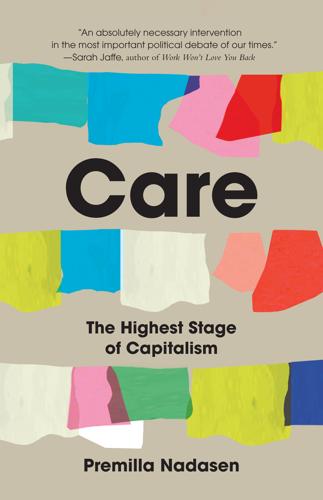
Care: The Highest Stage of Capitalism
by
Premilla Nadasen
Published 10 Oct 2023
Google’s policies are indicative of the way corporate care is circumscribed and driven by the concerns of middle-class women and families. The caring responsibilities of relatively privileged women and care as an obstacle to their professional success and economic advancement have dominated certain strains of the care discourse. In 2013, Sheryl Sandberg, chief operating officer of Facebook, published her bestselling book Lean In. She suggests that in their efforts to combine workplace and household responsibilities, women are holding themselves back professionally. That is, because of seemingly minor everyday decisions, working women “step back” in anticipation of the work/family balance.
…
The Company Is Calling Them Back with No Transportation Plans,” The Lily, May 20, 2021, https://www.thelily.com/some-child-care-workers-at-google-live-up-to-50-miles-away-the-company-is-calling-them-back-with-no-transportation-plans/; “Living Wage Calculator,” Massachusetts Institute of Technology, https://livingwage.mit.edu/; Amy K. Glasmeier and the Massachusetts Institute of Technology, “Living Wage Calculation for Santa Clara County, California,” 2022, https://livingwage.mit.edu/counties/06085. 24. Branigin, “Some Child-care Workers at Google Live up to 50 Miles Away.” 25. Sheryl Sandberg, Lean In: Women, Work, and the Will to Lead (London: W. H. Allen, 2015). 26. Anne Marie Slaughter, Unfinished Business: Women, Men, Work, Family (New York: Random House, 2016). For a critique of what Hester Eisenstein calls hegemonic feminism, see Hester Eisenstein, Feminism Seduced: How Global Elites Use Women’s Labor and Ideas to Exploit the World (New York: Routledge, 2010).

Chaos Monkeys: Obscene Fortune and Random Failure in Silicon Valley
by
Antonio Garcia Martinez
Published 27 Jun 2016
An adjoining minikitchen, like so many that littered the campus, stocked plenty of lemon-lime Gatorade, Zuck’s official beverage. Inside Facebook’s campus, geography was destiny, and your physical proximity to Zuck was a clear indicator of your importance. Along the periphery of the L ran the exclusive conference rooms of Facebook’s five business-unit leaders. Zuck’s desk neighbors at that point were Sheryl Sandberg, the star chief operating officer (COO) of Facebook; Andrew “Boz” Bosworth, the engineering director who had created News Feed; and Mike Schroepfer, Facebook’s chief technical officer (CTO). None of them were at their desks as I strode in from the courtyard that afternoon. Unlike much of the user-facing side of Facebook, the Ads team was held at arm’s length, as if it was a pair of sweaty underwear, in the next building over.
…
Dan looked up at the screen as if noticing the kitten pics for the first time, and then turned to Sheryl and answered, almost under his breath: “Well . . . for demo purposes we don’t show really bad photos . . . so the engineers use kittens instead. Because, you know . . . kittens and cats are like, pu—” He stopped right there, but he almost said “pussy” in front of the Queen of Lean, Sheryl Sandberg. “Got it!” she expectorated. After sucking in a lungful of air, as if loading for a verbal barrage, she continued. “If there were women on that team, they’d NEVER, EVER choose those photos as demo pics. I think you should change them immediately!” Before the salvo had even finished Dan’s head was bowed, and he was madly taking notes in a small notebook.
…
That might explain why his lips were hermetically sealed to her ass. “How’d that go?” “Well, she basically convinced me by saying: ‘Look, I either hire you now and you come work for Facebook, or a year from now I’ll hire you to work for the guy whose job I’m offering you right now.’ And that’s what convinced me.” Oh, Sheryl Sandberg and her wiles. So that’s how you seduced the Bolands of the world: you offered them a rung up on the ladder they thought they’d miss out on otherwise. By the time I had gotten Boland’s informal CV, we’d arrived at Willows. In a second, I understood the charm of owning your own bar or restaurant, as the idle wealthy often did.

A More Beautiful Question: The Power of Inquiry to Spark Breakthrough Ideas
by
Warren Berger
Published 4 Mar 2014
The article, with the provocative headline “Death to Core Competency,” suggests that whatever a company’s specialty product or service might be—whatever got you to where you are today—might not be the thing that gets you to the next level. Even newer companies must make these kinds of major shifts:12 In 2008, Facebook—having already achieved remarkable early growth in terms of attracting nearly 100 million users—brought in a new executive, Sheryl Sandberg, who reportedly posed a fundamental question to the company’s leaders and employees: What business was Facebook in? With all of its rapid subscriber growth, the company had yet to settle on a model for making money. Sandberg’s question prompted internal debate—and resulted in a new strategy that was much more advertising-focused.
…
CEO,” Fast Company, September 2010. 10 Are we really who we say we are? . . . Polly LaBarre, “Hit Man,” Fast Company, August 31, 2002. 11 Fast Company pointed out that a . . . Austin Carr, “Death to Core Competency,” Fast Company, February 14, 2013. 12 Even newer companies must make these kinds of major shifts . . . Sheryl Sandberg’s question-driven initiative was described by Kurt Eichenwald, “Facebook Leans In,” Vanity Fair, May 2013. 13 Early in its history, the microprocessor . . . This famous story from Intel’s early history appears in many articles and sites, but I came across it on the website for the Center for Applied Rationality, http://rationality.org/rationality/. 14 Jack Bergstrand of Brand Velocity thinks . . .
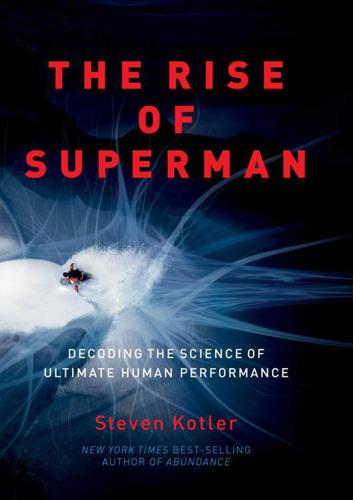
The Rise of Superman: Decoding the Science of Ultimate Human Performance
by
Steven Kotler
Published 4 Mar 2014
And certainly, lateralization isn’t the only way to shift paradigms, but on the flow path, it’s often the only way forward. Sooner or later, there’s always a Jaws: a mental hurdle we can’t clear, a decision too dangerous to attack head on. In those situations, sideways is forward. Plus, these days, sideways is often the way life works. “Careers are a jungle gym, not a ladder,” wrote Facebook COO Sheryl Sandberg in her book Lean In, and she’s not wrong. Statistics vary, but today, the average person changes jobs seven times between ages eighteen and forty. Most important, there’s momentum on the flow path. Lateralization allows you to hold on to that thrust no matter the circumstances. Momentum over time—that’s the invisible kung fu.
…
Jamie Wheal: Jamie Wheal, AI, July 2012. 123 “I grew up watching the greatest show on earth”: All of the Ian Walsh quotes and details were garnered in an interview conducted February 2013. 124 The article: Michael Shapiro, “On One Breath,” Hana Hou! The Magazine of Hawaiian Airlines, August/September 2008. 125 the ride was his: See: http://xxl11.billabong.com/archive/roty. 126 “Careers are a jungle gym, not a ladder”: Sheryl Sandberg, Lean In: Women, Work, and the Will to Lead (Knopf, 2013), p. 53. 8. THE WE OF FLOW 128 Mark Powell who first solved these issues: Steven Roper, Camp 4: Recollections of a Yosemite Rock Climber (The Mountaineers, 1994), pp. 83–87. “He knew that a person who didn’t mind a little hardship”: Ibid. 129 “Powell distinguished himself”: Joseph Taylor III, Pilgrims of the Vertical: Yosemite Rock Climbers and Nature at Risk (Harvard University Press, 2010), p. 134. 130 “When you play in ensembles”: Unless otherwise noted, all Keith Sawyer information in this chapter comes from a series of interviews conducted between August 2012 and July 2013. 131 “Surgeons say that during a difficult operation”: Csikszentmihalyi, Flow, p. 65.
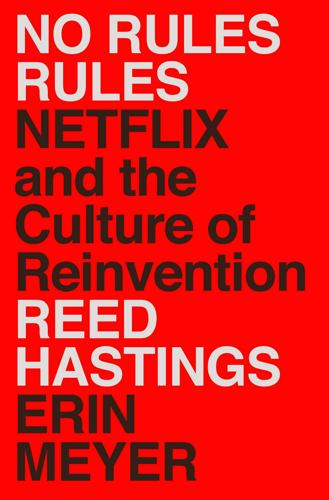
No Rules Rules: Netflix and the Culture of Reinvention
by
Reed Hastings
and
Erin Meyer
Published 7 Sep 2020
Netflix culture, on the other hand, is famous—or infamous, depending on your point of view—for telling it like it is. Millions of businesspeople have studied the Netflix Culture Deck, a set of 127 slides originally intended for internal use but that Reed shared widely on the internet in 2009. Sheryl Sandberg, COO of Facebook, reportedly said that the Culture Deck “may well be the most important document ever to come out of Silicon Valley.” I loved the Netflix Culture Deck for its honesty. And I loathed it for its content. Below is a sample so you can see why. Quite apart from the question of whether it is ethical to fire hardworking employees who don’t manage to do extraordinary work, these slides struck me as pure bad management.
…
We don’t emulate these top-down models, because we believe we are fastest and most innovative when employees throughout the company make and own decisions. At Netflix, we strive to develop good decision-making muscles everywhere in our company—and we pride ourselves on how few decisions senior management makes. Awhile back, Sheryl Sandberg of Facebook spent a day shadowing me at work. She attended all of my meetings and one-on-ones. It’s something I do occasionally with other Silicon Valley executives, so we can learn from watching one another in action. Afterward, when Sheryl and I debriefed, she said, “The amazing thing was to sit with you all day long and see that you didn’t make one decision!”

How to Work Without Losing Your Mind
by
Cate Sevilla
Published 14 Jan 2021
The problem is, with very rare exceptions, no matter how many times I read these quotes or watch their TED Talks or even purchase their books, with all due respect, I just never know what the fuck they’re on about. I mean … ‘Empathetic instincts, when coupled with operating rigor, drive a leadership style in which everybody wins.’ Fran Hauser, The Myth of the Nice Girl ‘We must raise both the ceiling and the floor.’ Sheryl Sandberg, Lean In ‘I’m a workaholic and I don’t believe in “no”. If I’m not sleeping, nobody’s sleeping.’ Beyoncé Knowles Whenever I read this sort of stuff my face literally turns into the ‘calculating lady’ meme. There’s a lot of chat about ceilings (and floors) and nonsensical methodologies and general smugness about being a supposed boss lady.
…
We’ll do the SEO thing.’ They apologized, admitting it ‘might come across as sexist and demeaning to women’ and said it was taking steps to remove ‘girl’ from the advert. The term ‘girlboss’ was made known to most by Nasty Gal founder Sophia Amoruso with her 2014 business memoir called #GIRLBOSS. Sheryl Sandberg’s Lean In organization also helped propel this idea of ‘boss women’ with their 2014 ‘Ban Bossy’ campaign5 – the launch video of which featured Beyoncé confidently saying, ‘I’m not bossy, I’m the boss.’ While Sandberg and Amoruso disagreed on whether or not you should call a woman ‘bossy’6 – ‘girlboss’ and its many derivatives and colloquial cousins have survived long past their period of favour amongst most millennial feminists.
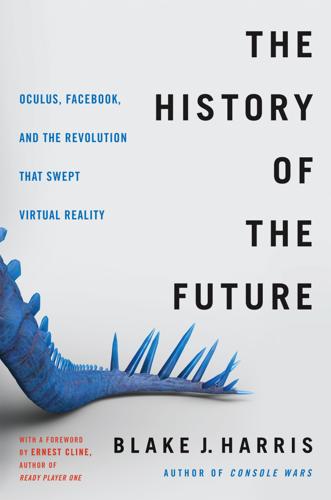
The History of the Future: Oculus, Facebook, and the Revolution That Swept Virtual Reality
by
Blake J. Harris
Published 19 Feb 2019
It was mostly because it was Mark Zuckerberg, but Iribe and Malamed had also started throwing around a crazy idea: What if a company like Facebook led our Series C? It wasn’t the type of thing Facebook had done before, but, hey, there’s a first time for everything, right? “TURN TO YOUR RIGHT,” IRIBE SUGGESTED, WALKING ZUCKERBERG THROUGH A demo in Facebook COO Sheryl Sandberg’s conference room. Donning one of Oculus’ Crystal Cove headsets and trying out the Tuscany demo, Zuckerberg tentatively swiveled his head. “Now try leaning forward,” Iribe said, highlight Crystal Cove’s positional tracking. Beside Zuckerberg was Ondrejka, gleefully watching his boss amble through virtual environments.
…
A few weeks later, in an op-ed for the Iowa Gazette, Hillary Clinton reaffirmed her support for the federal ethanol mandate.5 JUNE On June 22—with Facebook pondering a multibillion-dollar acquisition of Unity (in a deal codenamed “One”)—Zuckerberg laid out his vision and strategy for VR/AR to Iribe, Sheryl Sandberg, Mike Schroepfer, Amin Zoufonoun and four other Facebook VPs: “Beyond the sheer value we can deliver to humanity by accelerating and shaping the development of this technology,” Zuckerberg wrote, “we have three primary business goals.” The first goal was strategic. “We are vulnerable on mobile to Google and Apple,” he wrote, “because they make major mobile platforms.
…
Brendan was the obvious answer, but even though he wasn’t totally into really open systems, he hadn’t imposed his will on DK1 or DK2. So why start now? He wouldn’t. Which meant . . . “Yup,” Luckey nodded. “Marky Z.” “Oh man,” Chen said, shaking his head and laughing. “I’m glad I got out when I did!” Chapter 39 Lockdown January/February 2016 ALONG WITH A TRIO OF OTHER EXECUTIVES—SHERYL SANDBERG, DEBORAH Crawford, and Dave Wehner—Mark Zuckerberg addressed a handful of financial analysts during the Facebook’s year-end Earnings Call on January 27. “Overall Q4 was a strong quarter and a great end to the year,” Zuckerberg said. “More than 1.59 billion people now use Facebook each month . . . and when it comes to our business, we’re also pleased with our continued growth.”

Bold: How to Go Big, Create Wealth and Impact the World
by
Peter H. Diamandis
and
Steven Kotler
Published 3 Feb 2015
They permit collaborative structures that would have been unthinkable just a decade back. Even better, in many cases, these structures are self-organizing. If the community has been set up in the right way, then growth happens organically, without need for too much direct intervention or intensive capital spends. For example, after Facebook COO Sheryl Sandberg wrote Lean In, her bestselling book on empowering women to pursue their ambitions, she decided to capture the energy it was generating by building an online women’s community. As part of their growth strategy, one of their ideas was to create Lean In circles—local groups of eight to ten women coming together to share experiences and offer support.
…
Simply highlighting members’ contributions or achievements also enhances their reputation. 2. The Meet-up. The goal is to generate real emotions, and nothing works better than live bodies in a room together. Even better, if you can figure out how to make these meet-ups self-organizing—such as Sheryl Sandberg’s Lean In circles—you are getting all the benefits of deep engagement with far less effort. Of course, if you can’t get everybody together physically, get them together virtually, though don’t be afraid of hosting a structured discussion. People are busy. Drawing up boundary lines and focusing the conversation is a great way of showing folks that you respect their time. 3.

The Alliance: Managing Talent in the Networked Age
by
Reid Hoffman
,
Ben Casnocha
and
Chris Yeh
Published 15 Jan 2014
The members of the executive team select people into this hand-picked group on the basis of their contributions to the company as employees, contributions to the company as alumni, or accomplishments in the industry over their careers. To these distinguished alumni, LinkedIn extends special invitations to events on campus, such as judging hackathons or attending fireside chats between Reid and outside guests such as Facebook’s Sheryl Sandberg and WordPress creator Matt Mullenweg. Together, these corporate alumni programs impose little incremental cost on LinkedIn. As noted, much of the content is repurposed from existing initiatives, and the few out-of-pocket costs like gifts for candidate referrals or network intelligence are minimal in comparison with alternatives like paying recruiting fees or hiring consultants and outside analysts.

Reset
by
Ronald J. Deibert
Published 14 Aug 2020
But in spite of these measures, social media remain polluted by misinformation and disinformation, not only because of their own internal mechanisms, which privilege sensational content, or because of the speed and volume of posts, but also thanks to the actions of malicious actors who seek to game them.191 For example, in spite of widespread revelations of Russian influence operations over social media in 2016, two years later researchers posing as Russian trolls were still able to buy political ads on Google, even paying in Russian currency, registering from a Russian zip code, and using indicators linking their advertisements to the Internet Research Agency — the very trolling farm that was the subject of intense congressional scrutiny and indictments by Robert Mueller.192 In similar fashion, despite all the attention given and promises made to control misinformation about COVID-19 on its platform, an April 2020 study by the Markup found that Facebook was nonetheless still allowing advertisers to target users who the company believes are interested in “pseudoscience” — a category of roughly 78 million people. In testimony before the U.S. Congress, Facebook CEO Sheryl Sandberg made a startling admission193: that from October to March 2018, Facebook deleted 1.3 billion fake accounts. In July 2018, Twitter was deleting on the order of a million accounts a day, and had deleted 70 million fake Twitter accounts between May and June 2018 alone.194 The revelations caused Twitter’s share price to drop by 8 percent — a good indication of the type of business disincentives working against digging too deep into one’s own platform in the search for fake accounts.
…
Science, 359(6380), 1146–1151. https://doi.org/10.1126/science.aap9559 Researchers posing as Russian trolls were still able to buy political ads: Warzel, C. (2018, September 4). This group posed as Russian trolls and bought political ads on Google. It was easy. Retrieved from https://www.buzzfeednews.com/article/charliewarzel/researchers-posed-as-trolls-bought-google-ads Sheryl Sandberg made a startling admission: Vaidhyanathan, S. (2018, September 5). Why Facebook will never be free of fakes. Retrieved from https://www.nytimes.com/2018/09/05/opinion/facebook-sandberg-congress.html Twitter was deleting on the order of a million accounts a day: Spangler, T. (2018, July 9).

Searches: Selfhood in the Digital Age
by
Vauhini Vara
Published 8 Apr 2025
But Google’s executives must have realized at some point that since searching on Google was free, they couldn’t quite characterize Google’s day-to-day searchers as their customers. Someone else would have to provide the revenue, specifically, advertisers. Page and Brin had at some point dropped their resistance to advertising; after all, they had a big stake in Google’s financial success. Google had hired a young Harvard Business School graduate named Sheryl Sandberg, a former chief of staff to the Treasury secretary Larry Summers, and, that November, tasked her with developing and running an advertising program. That program would soon involve publishing ads not only on Google but also on other websites. Under it, as Zuboff puts it, the personal information Google collected about us—starting with, but going well beyond, search queries—would function as Google’s raw material.
…
“Is being a CEO always this hard?” he had asked. I ran this by Zuckerberg. He said he didn’t remember that particular question but admitted that the job was hard—“I do sometimes whine to Roger about it.” Zuckerberg’s investors thought he needed help from someone more experienced. Soon afterward, Sheryl Sandberg—the Google executive responsible for developing that company’s advertising operation—asked McNamee, a friend of hers, for career advice about another job opportunity she was considering. He suggested she talk to Facebook before making any moves. Sandberg and Zuckerberg had previously met at a holiday party; now they spent more time together, and in 2008, Zuckerberg hired Sandberg as Facebook’s chief operating officer.

Stress Test: Reflections on Financial Crises
by
Timothy F. Geithner
Published 11 May 2014
In my twelve-year initial stint at Treasury, I caught many glimpses of Washington’s pettiness and dysfunction, but I also got a somewhat unrealistic view of the positive impact that public servants could have on the world. That debt relief legislation, for example, included a $50 million U.S. contribution to a global vaccination fund that Sheryl Sandberg, Larry’s chief of staff, and I had championed. These were good causes, and we were able to do something valuable for countless people we would never meet. I HAD started at Treasury as a civil servant, but I was now an appointee in a Democratic administration. So when President Bush took office, it was time for me to leave.
…
Risk consistently migrated to institutions that had fewer constraints than banks and did not have access to the government safety net. Source: Federal Reserve Board. In those early months, I often joked that being president of the New York Fed was like being the Wizard of Oz; my friend and former Treasury colleague Sheryl Sandberg, who had become a vice president at Google, used to call me the man behind the curtain. There was a widespread perception that we had awesome powers to fight financial fires, but when I studied our actual firefighting equipment—cataloged in a New York Fed binder known internally as “the Doomsday Book”—I was not particularly impressed.
…
I was probably overprotective of my colleagues in the foxhole—and overly defensive about my own role—but I told Larry that it was bad form for a former Treasury secretary to second-guess a successor in public, and that not even he could imagine the constraints Ben and Hank faced. “You have no idea how hard this is,” I said. I TRAVELED with my family to California in February to look at colleges for my daughter, Elise, but again, I wasn’t really with them. We stayed with my former Treasury colleague Sheryl Sandberg, who was especially close with Elise, but I spent most of the time on my cell phone. We also spent a few days at Big Sur, staying at a hotel that had yurts overlooking the ocean. This time, I spent most of the time on a satellite phone; I had to drive to the edge of a cliff just to get a signal, and spent hours in a light rain on call after call.

Power and Progress: Our Thousand-Year Struggle Over Technology and Prosperity
by
Daron Acemoglu
and
Simon Johnson
Published 15 May 2023
The main consequence of the change was to amplify misinformation and political polarization, as lies and misleading posts spread rapidly from user to user. The change did not just affect the company’s then almost 2.5 billion users; billions more people who were not on the platform were also indirectly affected by the political fallout from the resulting misinformation. The decision was made by Zuckerberg; the company’s chief operating officer, Sheryl Sandberg; and a few other top engineers and executives. Facebook users and citizens of affected democracies were not consulted. What propelled the Chinese Communist Party’s and Facebook’s decisions? In neither case were they dictated by the nature of science and technology. Nor were they the obvious next step in some inexorable march of progress.
…
The initiative was immediately seen to be a colossal violation of user privacy and was discontinued. The company needed to forge an approach that combined a massive amount of data collection for digital advertisements and at least some amount of user control. The person who made this a reality was Sheryl Sandberg, who had been in charge of Google’s AdWords and had been instrumental in the transformation of that company into a targeted-ad machine. In 2008 she was hired at Facebook as chief operating officer. Sandberg understood how to make this combination work and also the potential that Facebook had in this space: the company could create new demand for products, and thus for advertising, by leveraging its knowledge about users’ social circles and preferences.
…
Material in this section builds on Isaacson (2014) and Markoff (2015). “In this paper…” is from the abstract in Brin and Page (1998). Page, “amazingly…,” is from Isaacson (2014, 458). The Socially Bankrupt Web. Material in this section draws on Frenkel and Kang (2021), which is also the source for Sheryl Sandberg, “[W]hat we believe we’ve done is…” (2021, 61). Look-alike audiences and “a way your ads can reach…” are from the Meta Business Help Center, www.facebook.com/business/help/164749007013531?id=401668390442328. The mental health effects of Facebook’s expansion are from Braghieri, Levy, and Makarin (2022) and O’Neil (2022).
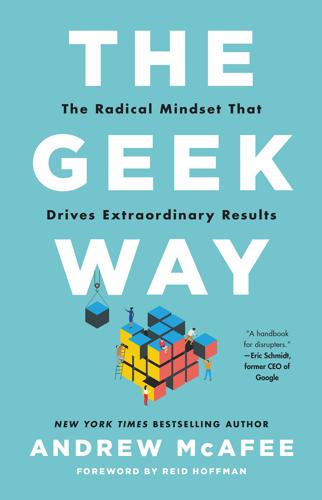
The Geek Way: The Radical Mindset That Drives Extraordinary Results
by
Andrew McAfee
Published 14 Nov 2023
The Netflix culture deck became both blueprint and affirmation for many people trying to build companies, and it spread like a rumor (it’s been viewed more than 17 million times). Those of us who write business books don’t love the idea that what “may well be the most important document ever to come out of [Silicon] Valley” is a PowerPoint presentation. But that’s what Facebook COO Sheryl Sandberg said about the Netflix culture deck. Hastings’s ideas about how to build and sustain a culture of freedom and responsibility so impressed Sandberg and her colleagues that they asked Hastings to join Facebook’s board of directors in 2011. Over the years I kept seeing how much attention the geeks were paying to culture.
…
No, I Have My Own Plane,” Irish Independent, October 10, 2010, www.independent.ie/business/technology/bill-gates-do-i-fly-first-class-no-i-have-my-own-plane-26691821.html. 11 “willing to be misunderstood”: John Cook, “Amazon’s Bezos on Innovation,” GeekWire, June 7, 2011, www.geekwire.com/2011/amazons-bezos-innovation/. 12 long PowerPoint presentation: “Netflix Culture: Freedom & Responsibility,” Slideshare, August 1, 2009, www.slideshare.net/reed2001/culture-1798664. 13 viewed more than 17 million times: “Netflix Culture,” Slideshare. 14 what Facebook COO Sheryl Sandberg said: Nancy Hass, “Netflix Founder Reed Hastings: House of Cards and Arrested Development,” GQ, January 29, 2013, www.gq.com/story/netflix-founder-reed-hastings-house-of-cards-arrested-development. 15 asked Hastings to join Facebook’s board: Hass, “Netflix Founder Reed Hastings.” 16 “My main job today”: Henry Blodget, “Jeff Bezos on Profits, Failure, and Making Big Bets,” Business Insider, December 13, 2014, www.businessinsider.com/amazons-jeff-bezos-on-profits-failure-succession-big-bets-2014-12. 17 “We both went to Montessori school”: Peter Sims, “The Montessori Mafia,” Wall Street Journal, April 5, 2011, www.wsj.com/articles/BL-IMB-2034. 18 “master of his acts”: “Maria Montessori Quotes,” American Montessori Society, accessed February 13, 2023, https://amshq.org/About-Montessori/History-of-Montessori/Who-Was-Maria-Montessori/Maria-Montessori-Quotes. 19 Bezos was also a Montessori kid: Sims, “Montessori Mafia.” 20 a study published in Science: Angeline Lillard and Nicole Else-Quest, “Evaluating Montessori Education,” Science, vol. 313, no. 5795 (2006), 1893–94, https://doi.org/10.1126/science.1132362. 21 how many started off in Montessori schools: Josh Lerner, “How Do Innovators Think?
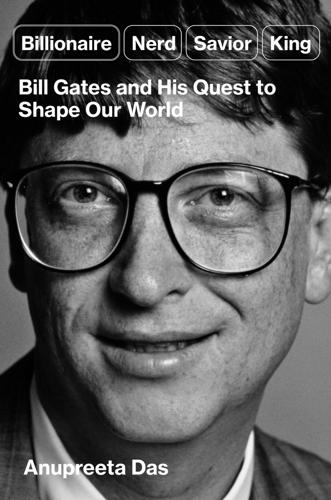
Billionaire, Nerd, Savior, King: Bill Gates and His Quest to Shape Our World
by
Anupreeta Das
Published 12 Aug 2024
With little chance of covering the actual events or even peeking at the agenda since the media is not invited, reporting on billionaire fashion has become something of a tradition over the years. Reid Hoffman, the founder of LinkedIn, in a track jacket. Tim Cook, the chief executive of Apple, in a polo shirt. Facebook’s Zuckerberg in one of his trademark gray tees. Barry Diller in a Dior aloha shirt. Michael Bloomberg in a lemon-yellow plaid button-up. Were those Allbirds on Sheryl Sandberg? Blue tinted lenses on Andreas Halvorsen, a hedge fund manager. Stacey Bendet of the fashion house Alice & Olivia in a floral dress. Buffett in a lime-green shirt patterned with the Geico mascot, a gecko. Thus it was hardly surprising that in 2017, Sun Valley was where Bezos was noticed for his remarkable physical transformation.
…
For white Americans, the number was $189,100.21 Forbes also created a separate list of America’s 100 richest self-made women, many of whom are not billionaires. In 2023, only 22 of them came from poor or working-class backgrounds. The rest were born into wealth, grew up middle class or upper middle class, or were highly trained professionals like Sheryl Sandberg.22 The preponderance of individuals from favorable socioeconomic positions on the Forbes lists are an indicator that the circumstances of birth and upbringing can be important inputs in the creation of a self-made billionaire. Sometimes, children of affluent families also benefit from connections, such as when Gates’s mother mentioned her son’s name to an IBM executive who gave the young Microsoft a chance.
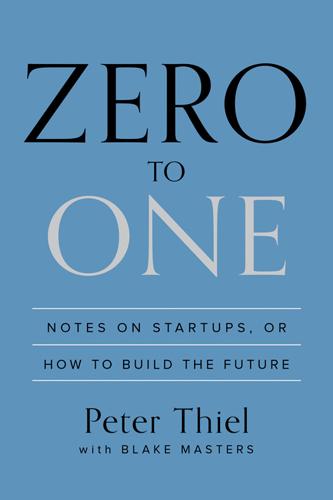
Zero to One: Notes on Startups, or How to Build the Future
by
Peter Thiel
and
Blake Masters
Published 15 Sep 2014
Learning about startups is worthless if you’re just reading stories about people who won the lottery. Slot Machines for Dummies can purport to tell you which kind of rabbit’s foot to rub or how to tell which machines are “hot,” but it can’t tell you how to win. Did Bill Gates simply win the intelligence lottery? Was Sheryl Sandberg born with a silver spoon, or did she “lean in”? When we debate historical questions like these, luck is in the past tense. Far more important are questions about the future: is it a matter of chance or design? CAN YOU CONTROL YOUR FUTURE? You can expect the future to take a definite form or you can treat it as hazily uncertain.

The Optimist: Sam Altman, OpenAI, and the Race to Invent the Future
by
Keach Hagey
Published 19 May 2025
Unlike Marciniak, Jacobstein’s hiring was what McAdoo called “vocational,” meaning he was “brought in to fill some gaps for Sam.” As Jacobstein saw it, “I was supposed to be the Sheryl to his Zuck,” he recalled, referring to the long-successful relationship between Facebook Chief Operating Officer Sheryl Sandberg and CEO Mark Zuckerberg, fifteen years her junior. Jacobstein was given the title of executive vice president, corporate development and marketing, which meant he was there to chaperone the still-teenaged Altman through meetings where he might have trouble being taken seriously, such as with wireless carriers or regulators.
…
This particular year, despite a healthy economy and the usual splendid weather, the conference was permeated by a sense of dread, as the big players in media seemed increasingly desperate to sell themselves off to some tech company or another before the profits fully leaked out of their business, thanks to competition from the likes of Netflix. As if to troll the legacy types, SoftBank founder Masayoshi Son arrived and declared to reporters, “I’m not interested in traditional media.”20 Apple’s Tim Cook and Facebook’s Sheryl Sandberg echoed his sentiments the following day. Jeff Bezos, not yet divorced but in the midst of making himself over, strutted between boutique pop-up shops, his muscles bulging improbably. For his part, Altman bumped into Microsoft’s Nadella in a stairwell, and they had a five-minute conversation.
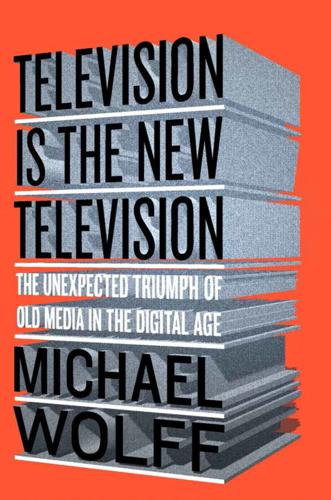
Television Is the New Television: The Unexpected Triumph of Old Media in the Digital Age
by
Michael Wolff
Published 22 Jun 2015
Mark Zuckerberg is a technology-focused multibillionaire who believes his company offers a central piece of functionality in everybody’s life. He seems at best impatient with if not contemptuous of media. From the beginning of his career and the earliest days of Facebook he has made sour pronouncements about advertising, seeing it, apparently, as a transitional revenue phase for the company. Sheryl Sandberg, the company’s president, the default public presence for Zuckerberg who seemingly would rather not be publicly present, is a government and public affairs bureaucrat, more focused on Facebook’s Wall Street and political brand (and, as the author of the women’s empowerment book Lean In, her own personal brand) than on selling anything.

The System: Who Rigged It, How We Fix It
by
Robert B. Reich
Published 24 Mar 2020
Weill calls Rubin “extremely” helpful to him during his years at Citi, but Weill could not account for what happened after his own departure from the bank in October 2003. (Weill remained nonexecutive chair of the Citigroup board until April 2006.) “Unfortunately, something happened that was not very pleasant for a lot of people and not very pleasant for a lot of people that worked for the company. It was very sad.” Sheryl Sandberg, now the chief operating officer of Facebook, who worked at the Treasury Department under Rubin after she graduated from Harvard Business School in 1995, suspects Rubin was scapegoated for events he could not possibly have controlled. “My own view is that, look, these have been hard times, and people need people to blame.
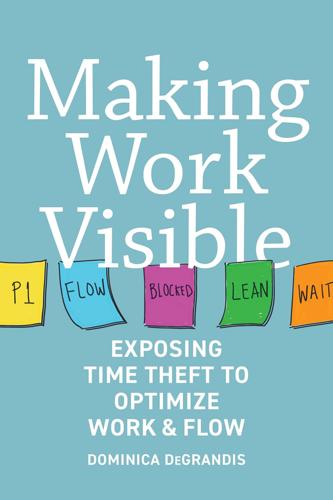
Making Work Visible: Exposing Time Theft to Optimize Workflow
by
Dominica Degrandis
and
Tonianne Demaria
Published 14 May 2017
While the number of minutes available to us each day might be the same, control over what we do with those hours differs significantly. When Elon Musk is faced with too much work-in- progress (WIP), he has the authority to delegate, deprioritize, or simply say no. When variation rears its head and a well-thought- out strategic plan no longer aligns with the organization’s needs, Sheryl Sandberg has the ability to switch gears. And when Jeff Bezos is confronted with conflicting priorities, it is likewise doubtful he needs to seek direction via a convoluted bureaucracy to gain clarity over which course to follow. When these things happen to us (and let’s face it, they often do), we’re faced with a very different set of repercussions than those of our billionaire counterparts.

Super Pumped: The Battle for Uber
by
Mike Isaac
Published 2 Sep 2019
He spun up teams of lobbyists in every market that mattered. He wanted them ready to deal with an incoming administration that was a friend to unions and an enemy to companies that relied on contract workers. Clinton hadn’t come after Big Tech quite yet; she was closely tied to major donors in the Valley, including Facebook’s Sheryl Sandberg, John Doerr of Kleiner Perkins, and Marc Benioff of Salesforce. But if there was a company a Clinton presidency might come after, it could be the most hated startup in the country: Uber. But Trump’s upset victory caught everyone at Uber off guard. Most of the rank and file, a largely Democratic- and Libertarian-leaning force, were tearing their hair out at the thought of a Trump presidency.
…
Rubenstein ultimately decided not to take on Kalanick as a client, though he would cross paths again with Kalanick less than a month later. But as a parting gift, Rubenstein offered two pieces of advice: First, Kalanick had to “find his Sheryl,” a reference to Mark Zuckerberg’s relationship with Sheryl Sandberg, then widely considered a competent counterbalance to Zuck’s leadership. Second, he said Kalanick needed to take a leave of absence. “You either shoot yourself in the foot, or the press will end up shooting you in the head.” ¶¶¶¶¶¶¶ One witness to the confrontation between Hazelbaker and Kalanick recalled the communications executive using far more colorful vocabulary during the encounter.
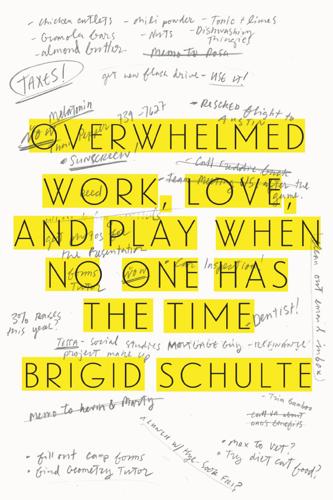
Overwhelmed: Work, Love, and Play When No One Has the Time
by
Brigid Schulte
Published 11 Mar 2014
This was about sustainable living, healthy populations, happy families, good business, sound economies, and living a good life. At coffee breaks, some women researchers, who struggled with role overload of their own, shared stories of their young daughters or female students who proclaimed to want anything but their own crazy busy lives. Although Facebook chief operating officer Sheryl Sandberg would soon tell them to Lean In to their careers and not throttle back on their ambition out of fear there wasn’t enough time to have both a career and a family, the researchers worried that many young women they knew already had. “My daughter decided to become a teacher. Not that she’s passionate about it, but she doesn’t see any other way to have time to work and have a family,” one researcher confided.
…
And four in ten women thought so, too,62 percentages that hadn’t moved much from when the question was posed in 1988 and in 1994. The survey does not ask whether married men and fathers of preschoolers should work. The assumption is, clearly, they should. * * * About the time I was exploring the roots of the overwhelm at work, Facebook COO Sheryl Sandberg made a splash by admitting she left the office at 5:30 to be home for dinner with her two children. I’d heard about high-tech firms’ famous flexible work styles—one former Google exec told me people could work from a beach in Hawaii as long as work got done on time. Sandberg’s confession seemed a hopeful sign that perhaps the new economy jobs of Silicon Valley were liberated from the grip of the ideal worker.
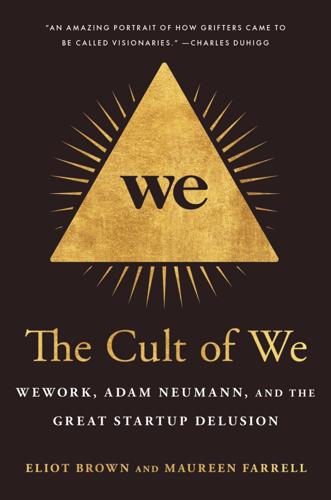
The Cult of We: WeWork, Adam Neumann, and the Great Startup Delusion
by
Eliot Brown
and
Maureen Farrell
Published 19 Jul 2021
CHAPTER 20 Community-Adjusted Profit Despite being at the company just three years, Artie Minson by 2018 had already survived several near-death experiences on the stomach-churning and turbulent ride of WeWork senior leadership. Minson was hired in 2015 to be an adult in the room at WeWork, a move pushed on Neumann by investors, including Benchmark and Michael Eisenberg. Neumann made him the president and chief operating officer—akin to Facebook’s Sheryl Sandberg, the deputy to Mark Zuckerberg. By year two, Minson had fallen from grace. Neumann cited frustrations over delays in new building openings as he pushed Minson to the sidelines. His new role was a more narrow one as chief financial officer—a humiliating reassignment. Until then, Minson had enjoyed a nearly friction-free upward career trajectory.
…
Without hesitation, Neumann replied, “Me.” CHAPTER 26 Both Mark and Sheryl In Silicon Valley, it had become conventional wisdom that a visionary founder should hire a business-focused right-hand operator to bring the business into shape. Under Mark Zuckerberg at Facebook, there was Sheryl Sandberg. At Google, the co-founders, Larry Page and Sergey Brin, tapped Eric Schmidt, and later Sundar Pichai, to be their CEO while the founders took more ceremonial roles or pursued pet projects. Adam Neumann, though, trusted few. Why would he cede control? As far as he was concerned, he was the one with the skills needed to run WeWork—from vision to detailed operations.

The View From Flyover Country: Dispatches From the Forgotten America
by
Sarah Kendzior
Published 24 Apr 2015
When they attempt to return to the workforce, their years at home are held against them, considered a “blank spot” on the résumé—a blank spot with a reason so obvious and laudable and often involuntary that it is sick we deride it as “choice.” Careers Are Not Pursued by Choice Corporate feminists like Sheryl Sandberg frame female success as a matter of attitude. But it is really a matter of money—or the lack thereof. For all but the fortunate few, American motherhood is making sure you have enough lifeboats for your sinking ship. American motherhood is a cost-cutting, debt-dodging scramble somehow interpreted as a series of purposeful moves.
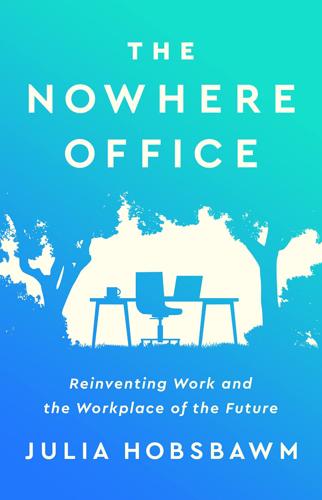
The Nowhere Office: Reinventing Work and the Workplace of the Future
by
Julia Hobsbawm
Published 11 Apr 2022
Two kinds of network began to thrive as people needed them to both ‘level up’ politically but also as the white-collar job market became increasingly competitive and insecure as a result of globalisation. On the one hand there were support networks based around identity focusing on disability, gender or sexual orientation, and on the other social networks often industry-led which focused more on areas of special interest or skill. Pamela Ryckman’s book Stiletto Network and Sheryl Sandberg’s Lean In, both published in 2013, drew on both kinds of network, and contributed to the movements that produced political gains in the boardroom and indeed the rise of #metoo. These networks directly challenged inequality and led to a more meritocratic social approach. Such was their success that networks were more widely appreciated as more people began to experience their benefits.3 The Co-Working Years were also marked by a huge upswing in conferences and a study of professional women across America in 2018 showed that women’s chances of promotion doubled if they belonged to certain conference circuits and networks.4 LinkedIn, the pre-eminent social network for professionals with 750 million members, began to take off in 2006, on the cusp of this period.5 It launched as a platform to showcase and circulate your professional CV.
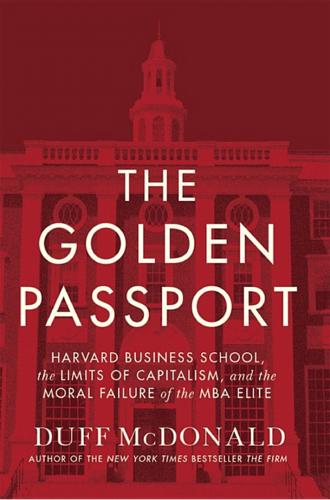
The Golden Passport: Harvard Business School, the Limits of Capitalism, and the Moral Failure of the MBA Elite
by
Duff McDonald
Published 24 Apr 2017
At Baker’s suggestion, most of the dormitories and instructors’ houses were named after secretaries of the Treasury—Alexander Hamilton, Albert Gallatin, Salmon Chase, Hugh McCulloch, John Sherman, Carter Glass, and Andrew Mellon. While Baker obviously saw himself and his friend Morgan as public servants of a sort, only one HBS grad has actually gone on to serve as Treasury secretary—Hank Paulson, the former CEO of Goldman Sachs who served under President George W. Bush. (Sheryl Sandberg, COO of Facebook, came close, serving as chief of staff to Bill Clinton’s Treasury secretary Larry Summers.) The McKim, Mead & White plan resulted in a campus built in a huddle, not opened up to the outside, but rather turned inward, an architectural metaphor for the still closely huddled denizens of a School accustomed to receiving periodic and sharp criticism, including from across the Charles River itself.
…
Dean Nitin Nohria made inclusion one of the main goals of his administration, but the School’s bungling of the solution to at least one part of the problem—the grading differential—was laid out in a scathing New York Times exposé in September 2013. (More on that in chapter 61.) Today, the School counts a remarkably long list of prominent females among its alumni, including Meg Whitman (’79), the CEO of Hewlett Packard Enterprise and former CEO of eBay; Sheryl Sandberg (’95), the chief operating officer of Facebook; Claudia Sender (’02), the CEO of TAM, Brazil’s largest airline; Ann Moore (’78), the former CEO of Time Inc.; Judy Dimon (’82), who has a storied career in nonprofit and philanthropic work, particularly education, and is the wife of classmate Jamie Dimon; Barbara Franklin (’64), the secretary of commerce under George H.
…
That made him de facto partners with Amy Pascal, Sony’s studio chief. At that point, Lynton was a journeyman HBS CEO—he’d run Penguin Books and AOL Europe. And he leaned in to the HBS network with particular enthusiasm, doing such things as arranging for a film audition for the niece of billionaire hedge funder Leon Black (’75) and plotting with Facebook COO Sheryl Sandberg (’95) to see if they could find the right blind date for New Yorker writer Malcolm Gladwell.3 The Lynton/Pascal partnership worked for a decade, but by 2013, there was trouble. Activist hedge fund manager Dan Loeb took aim at Sony Corporation, buying more than 6 percent of its shares, and demanded that the company—particularly Sony Pictures—get its financial house in order.

Why Women Have Better Sex Under Socialism: And Other Arguments for Economic Independence
by
Kristen R. Ghodsee
Published 20 Nov 2018
Others will argue that unregulated capitalism is not bad for all women. Yes, for those women lucky enough to sit at the top of the income distribution, the system works pretty well. Although women at the executive level still face gender pay gaps and remain underrepresented in leadership positions, on the whole things aren’t too shabby for the Sheryl Sandbergs of the world. Of course, sexual harassment still hinders progress even for those at the top, and too many women believe that if you want to run with the big dogs, you may have to suck it up and ignore the groping and unwanted advances. And race plays an important role as well; white women do a lot better in aggregate than do women of color.
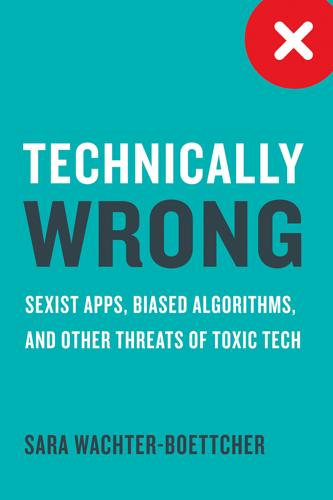
Technically Wrong: Sexist Apps, Biased Algorithms, and Other Threats of Toxic Tech
by
Sara Wachter-Boettcher
Published 9 Oct 2017
So she started talking with other women of color and found that their experiences were similar: they felt ignored or overlooked in a sea of white faces. It’s not just Grace Hopper. You can’t throw a pebble in Palo Alto without hitting a corporate-funded “diversity” event these days—like the “Lean In” circles that Facebook executive Sheryl Sandberg advocated in her book of the same name, or the ubiquitous code camps for kids from low-income homes put on by companies like Google. But what Thomas experienced convinced her that it’s not really about the pipeline. The tech industry just isn’t looking for people of color—even when those candidates are right in front of them, like she was at Grace Hopper.
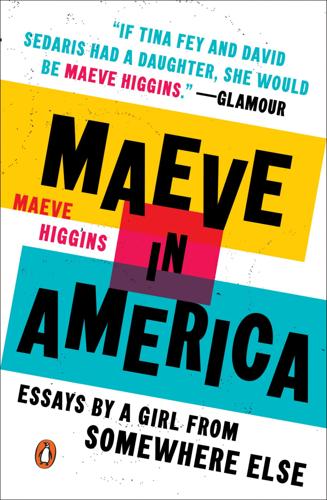
Maeve in America: Essays by a Girl From Somewhere Else
by
Maeve Higgins
Published 6 Aug 2018
It would be remiss of me not to curtsy as I mention Queen Maeve, the “Warrior Queen” of the West of Ireland, said to have existed sometime between 50 BCE and 50 CE, if in fact she did exist. It’s not known if she was even a real person to begin with, or just a complete myth. Here is what we know for sure about that real person, or myth, from the Internet. Queen Maeve was queen of the West of Ireland and she had a Sheryl Sandberg attitude about gender equality and the pay gap. She leaned all the way in. Under the Brehon laws of ancient Ireland women had equality with men: they had the power to raise their own armies, hold their own property, participate in the court system as lawyers and judges, as well as pick their own partners.
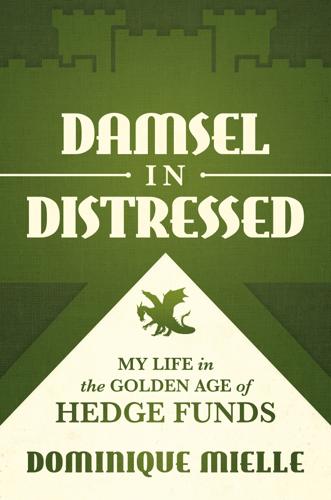
Damsel in Distressed: My Life in the Golden Age of Hedge Funds
by
Dominique Mielle
Published 6 Sep 2021
Alas, it is hard to so thoroughly miss the point. Does he ever watch sports? It isn’t the best talent that wins; it’s the best team. A great baseball team doesn’t have nine great hitters. Even I know that, and no one ever called me a sports fan. Absent both incentives and impetus, no amount of Sheryl Sandberg’s call to “lean in” will make a difference to average numbers. At the margin, will it help some women forge a trailblazing path? Absolutely. Just as I hope that my own technique will. In keeping with a two-word commandment, I opt to hang on. Or I raise you to three: stick with it. As for societal changes, however, a motto will not do.

Generations: The Real Differences Between Gen Z, Millennials, Gen X, Boomers, and Silents—and What They Mean for America's Future
by
Jean M. Twenge
Published 25 Apr 2023
POPULATION IN 2020) 62.7% White 12.8% Black 16.6% Hispanic 6.7% Asian, Native Hawaiian, or Pacific Islander 1.2% Native American Parents: Silent and Boomers Children: Millennials, Gen Z, Polars Grandchildren: Polars and post-Polars MOST POPULAR FIRST NAMES * First appearance on the list Boys Michael Jason* David Christopher* John James Robert Girls Lisa Jennifer* Karen Mary Kimberly* Susan Michelle* Amy* Heather* Angela* Jessica* Amanda* FAMOUS MEMBERS (BIRTH YEAR) Actors, Comedians, Filmmakers Ben Stiller (1965) Chris Rock (1965) Brooke Shields (1965) Viola Davis (1965) Adam Sandler (1966) John Cusack (1966) Jim Gaffigan (1966) Julia Roberts (1967) Jimmy Kimmel (1967) Will Ferrell (1967) Will Smith (1968) Molly Ringwald (1968) Anthony Michael Hall (1968) John Singleton (1968) Margaret Cho (1968) Jennifer Lopez (1969) Jennifer Aniston (1969) Matthew McConaughey (1969) Wes Anderson (1969) Ken Jeong (1969) Julie Bowen (1970) Matt Damon (1970) Tina Fey (1970) Melissa McCarthy (1970) Ethan Hawke (1970) Kevin Smith (1970) Sarah Silverman (1970) Winona Ryder (1971) Amy Poehler (1971) Gwyneth Paltrow (1972) Ava DuVernay (1972) Sofia Vergara (1972) Seth Meyers (1973) Kristen Wiig (1973) Dave Chappelle (1973) Wilson Cruz (1973) Jimmy Fallon (1974) Leonardo DiCaprio (1974) Drew Barrymore (1975) Angelina Jolie (1975) Zach Braff (1975) John Cena (1977) James Franco (1978) Katie Holmes (1978) Ashton Kutcher (1978) Andy Samberg (1978) Jason Momoa (1979) Jordan Peele (1979) Mindy Kaling (1979) Claire Danes (1979) Musicians and Artists Janet Jackson (1966) Kurt Cobain (1967) Liz Phair (1967) Jay-Z (1969) Gwen Stefani (1969) Queen Latifah (1970) Tupac Shakur (1971) Snoop Dogg (1971) Eminem (1972) Jewel (1974) Lauryn Hill (1975) Blake Shelton (1976) Kanye West (1977) John Legend (1978) Entrepreneurs and Businesspeople Michael Dell (1965) Peter Thiel (1967) Sheryl Sandberg (1969) Elon Musk (1971) Larry Page (1973) Sergey Brin (1973) Sean Parker (1979) Politicians, Judges, and Activists Brett Kavanaugh (1965) Kevin McCarthy (1965) Neil Gorsuch (1967) Gavin Newsom (1967) John Fetterman (1969) Paul Ryan (1970) Ted Cruz (1970) Ketanji Brown Jackson (1970) Hakeem Jeffries (1970) Marco Rubio (1971) Gretchen Whitmer (1971) Amy Coney Barrett (1972) Stacey Abrams (1973) Raphael Warnock (1973) Marjorie Taylor Greene (1974) Andrew Yang (1975) Ron DeSantis (1978) Josh Hawley (1979) Athletes and Sports Figures Mary Lou Retton (1968) Nancy Kerrigan (1969) Tonya Harding (1970) Andre Agassi (1970) Mia Hamm (1972) Shaquille O’Neal (1972) Dale Earnhardt Jr. (1974) Derek Jeter (1974) Tiger Woods (1975) Tom Brady (1977) Kobe Bryant (1978) Journalists, Authors, and People in the News Rodney King (1965) Matt Drudge (1966) Mika Brzezinski (1967) Kellyanne Conway (1967) Anderson Cooper (1967) Joe Rogan (1967) Ron Goldman (1968) Tucker Carlson (1969) Melania Trump (1970) Chuck Klosterman (1972) Monica Lewinsky (1973) Rachel Maddow (1973) David Muir (1973) Norah O’Donnell (1974) John Green (1977) Donald Trump Jr. (1977) Kourtney Kardashian (1979) On the Internet, No One Knows You’re a Dog Trait: Analog and Digital Communicators YouTube was created because a Gen X’er wanted to see a nipple.
…
PayPal was founded by Peter Thiel (b. 1967) and Elon Musk (b. 1971). Twitter was founded by Jack Dorsey (b. 1976), and Uber by Travis Kalanick (b. 1976) and Garrett Camp (b. 1978). Sean Parker (b. 1979) cofounded Napster, the file-sharing music site later shut down over copyright issues, and served as the first president of Facebook. Gen X’er Sheryl Sandberg (b. 1969) didn’t found Facebook—that would be Millennial Mark Zuckerberg—but she helped run it for a decade. So, when it comes to the internet, Gen X was first. Gen X was also last. Gen X is the last generation to have had a mostly analog childhood. They are the last to use rotary phones instead of push-button or wireless; the last to languish in a childhood without cable TV or videotapes; the last to spend their high school years without the internet; the last to learn to type as teens instead of as children; the last to use a typewriter for their college essays; the last to look things up in bound encyclopedias; the last to use cameras with film; the last to use a radio with a dial, buy cassette tapes, or attempt to scam the Columbia Record Club (thirteen records or tapes for $1!)
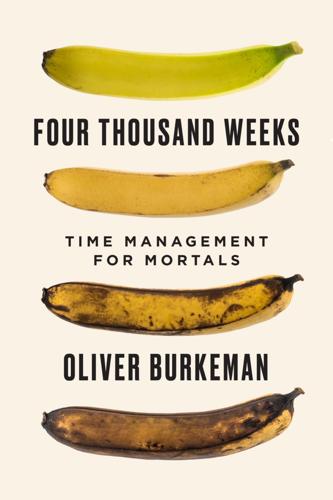
Four Thousand Weeks: Time Management for Mortals
by
Oliver Burkeman
Published 9 Aug 2021
“Attention is the beginning of devotion”: Mary Oliver, Upstream: Selected Essays (New York: Penguin, 2016), loc. 166 of 1669, Kindle. the former Facebook investor turned detractor Roger McNamee: Quoted in “Full Q&A: Zucked Author Roger McNamee on Recode Decode,” Vox, February 11, 2019, available at www.vox.com/podcasts/2019/2/11/18220779/zucked-book-roger-mcnamee-decode-kara-swisher-podcast-mark-zuckerberg-facebook-fb-sheryl-sandberg. In the words of the philosopher: Quoted in James Williams, Stand Out of Our Light (Cambridge: Cambridge University Press, 2018), xii. “distracted from distraction by distraction”: T. S. Eliot, “Burnt Norton,” in Four Quartets (Boston: Mariner, 1968), 5. “a thousand people on the other side of the screen”: For example, in Bianca Bosker, “The Binge Breaker,” The Atlantic, November 2016, available at www.theatlantic.com/magazine/archive/2016/11/the-binge-breaker/501122/. 6.
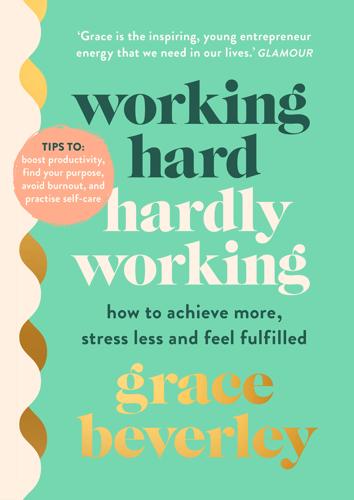
Working Hard, Hardly Working
by
Grace Beverley
At the point of compiling this list, the books in the series are: How to Build It: Grow Your Brand (Niran Vinod and Damola Timeyin), How to Change It: Make a Difference (Joshua Virasami), How to Write It: Work With Words (Anthony Anaxagorou), How to Calm It: Relax Your Mind (Grace Victory), How to Save It: Fix Your Finances (Bola Sol) and How to Move It: Reset Your Body (Joslyn Thompson Rule) Lean In: Women, Work and the Will to Lead, Sheryl Sandberg (2013) Little Black Book: A Toolkit for Working Women, Otegha Uwagba (2017) Me and White Supremacy: How to Recognise Your Privilege, Combat Racism and Change the World, Layla Saad (2020) Mind Over Clutter: Cleaning Your Way to a Calm and Happy Home, Nicola Lewis (2019) ReWork: Change the Way You Work Forever, Jason Fried and David Heinemeier Hansson (2010) Self-Care for the Real World, Nadia Narain and Katia Narain Phillips (2017) Start With Why: How Great Leaders Inspire Everyone to Take Action, Simon Sinek (2011) Superfreakonomics: Global Cooling, Patriotic Prostitutes and Why Suicide Bombers Should Buy Life Insurance, Steven D.

McMindfulness: How Mindfulness Became the New Capitalist Spirituality
by
Ronald Purser
Published 8 Jul 2019
For it to endure, she writes, “people must willingly participate in and reproduce its structures and norms,” and, especially in times of crisis, “capitalism must draw upon cultural ideas that exist outside of the circuits of profit-making.”10 Mindfulness fits the bill perfectly. Kabat-Zinn is its prophet, joining the ranks of capitalist apologists such as Facebook’s Sheryl Sandberg, the media mogul Oprah Winfrey, billionaire Bill Gates, and John Mackey, CEO of Whole Foods. It is probably no coincidence that Kabat-Zinn — like other mindfulness gurus — traded his activism for meditative quietism fifty years ago. From his comfortable perch, it might make sense to be a passive observer of human afflictions, just “radically accepting” unwholesome conditions.
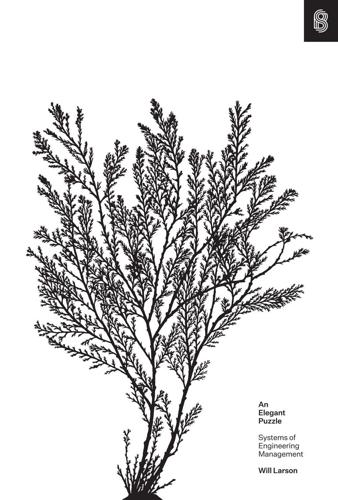
An Elegant Puzzle: Systems of Engineering Management
by
Will Larson
Published 19 May 2019
It’s suggested that mature companies have more stable periods while startups have a greater propensity for change, but it’s been my experience that what matters most is the particular team you join. I’ve seen extremely static startups, and very dynamic teams within larger organizations. I particularly want to challenge this old refrain: “If you’re offered a seat on a rocket ship, don’t ask what seat! Just get on.” —Sheryl Sandberg Even hypergrowth companies tend to have teams that are largely sheltered from change by either their management or because they’re too far away from the company’s primary constraints to get attention. By tracking your eras and transitions, you can avoid lingering in any era beyond the point when you’re developing new masteries.

This Is How They Tell Me the World Ends: The Cyberweapons Arms Race
by
Nicole Perlroth
Published 9 Feb 2021
They drafted a list of one hundred successful companies around Silicon Valley, and one week later they’d hacked them all. On average, it took fifteen minutes each. When they alerted executives, a third ignored them. Another third thanked them, but never fixed the flaws. The rest raced to solve the issues. Fortunately, nobody called the police. Sheryl Sandberg had never gotten an email like it. One morning in 2011, Sandberg, Facebook’s chief operating officer, opened her inbox to find an email labeled “sensitive.” It detailed a critical Facebook bug that allowed some Dutch twentysomethings to take over all of Facebook’s accounts. Sandberg didn’t hesitate.
…
Chen chronicled Cook’s early days as CEO: “Tim Cook, Making Apple His Own,” New York Times, June 15, 2014. In the wake of the Snowden revelations, then President Obama held several closed-door meetings with Cook and other tech executives in 2014. In December, Obama met with Cook as well as Marissa Mayer of Yahoo, Dick Costolo of Twitter, Eric Schmidt of Google, Sheryl Sandberg of Facebook, Brian Roberts of Comcast, Randall Stephenson of AT&T, Brad Smith of Microsoft, Erika Rottenberg of LinkedIn, and Reed Hastings of Netflix. The official agenda was to discuss improvements to Healthcare.gov, but the conversation was quickly diverted to government surveillance and the public’s fading trust.
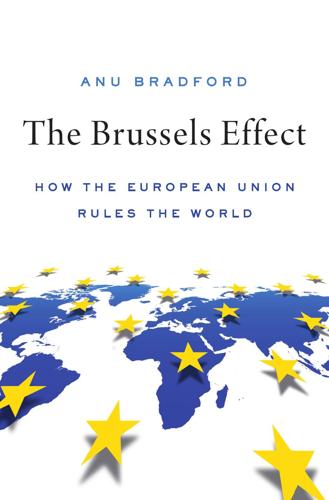
The Brussels Effect: How the European Union Rules the World
by
Anu Bradford
Published 14 Sep 2020
Apple also subscribes to a single global privacy policy, which reflects the GDPR.90 Importantly, it also implements the GDPR’s Article 25 principle of “privacy by design,” which entails that they design their products and services to comply with GDPR-consistent privacy rules by default, minimizing the data collection through privacy-conscious design choices at the outset.91 The company further carries out privacy impact assessments, as required by the GDPR, across all its products, and rolls out updates required by the GDPR on its mobile operating systems (iOS) to Apple users worldwide.92 In preparation for the entry into force of the GDPR, Facebook COO Sheryl Sandberg announced that the company was going to “[roll] out a new privacy center globally that will put the core privacy settings for Facebook in one place and make it much easier for people to manage their data.” This means that European privacy protections will de facto be extended to the company’s 2.2 billion users worldwide.
…
hl=en&gl=ZZ [https://perma.cc/PHQ9-RBDJ]; Privacy Statement, Netflix (Apr. 24, 2019), https://help.netflix.com/legal/privacy [https://perma.cc/TF7G-H774]; Mitchener, supra note 86. 90.See Apple Customer Privacy Policy, Apple, https://www.apple.com/legal/privacy/ [https://perma.cc/TG8J-YD7N]. 91.Privacy Policy, Apple, https://www.apple.com/legal/privacy/en-ww/governance/ [https://perma.cc/42BC-X6MJ]. 92.Alex Hern, Apple Launches iOS 11.3 with Raft of Privacy Features, Guardian (Mar. 29, 2018), https://www.theguardian.com/technology/2018/mar/29/apple-launches-ios-113-privacy-features-gdpr-data-protection [https://perma.cc/5G9X-D9KX]. 93.Natasha Lomas, Facebook to Roll Out Global Privacy Settings Hub—Thanks to GDPR, TechCrunch (Jan. 24, 2018), http://social.techcrunch.com/2018/01/24/facebook-to-roll-out-global-privacy-settings-hub-thanks-to-gdpr/ [https://perma.cc/BK5K-A8AD]; Jim Brunsden, Tim Bradshaw & Hannah Kuchler, Facebook’s Sheryl Sandberg to Hold Talks with Top EU Data Official, Fin. Times (Apr. 6, 2018), https://www.ft.com/content/88a8682a-3996-11e8-8b98-2f31af407cc8 (on file with author). 94.Hard Questions Q&A with Mark Zuckerberg, Facebook Newsroom (Apr. 4, 2018), https://newsroom.fb.com/news/2018/04/hard-questions-protecting-peoples-information/ [https://perma.cc/NEP5-9748]. 95.Updates to Terms, Airbnb, https://www.airbnb.com/home/terms-of-service-event?

Makers
by
Chris Anderson
Published 1 Oct 2012
Each conventional manufacturing job is typically credited with creating four other jobs in the community. But Sparkfun, because it sells technology that helps others build their own companies, has an even higher multiplier than that. How high? It’s hard to say, but here is one example: Facebook has about 2,500 employees as of this writing. But its chief operating officer, Sheryl Sandberg, estimates that more than thirty thousand people make their primary living as part of the “Facebook ecosystem,” all the companies and services built on Facebook, from Zynga games like Farmville to all the “social media experts” hired to help companies navigate Facebook. That’s at least a 10x multiplier.
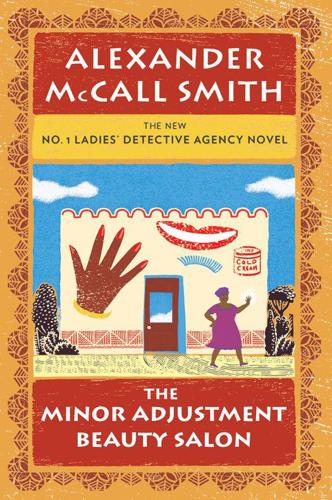
The Minor Adjustment Beauty Salon: No. 1 Ladies' Detective Agency
by
Alexander McCall Smith
Published 5 Nov 2013
J.L.B. Matekoni. Discuss this quote. What do you think about the relationship between Mma Ramotswe and Mr. J.L.B. Matekoni? Is it a traditional relationship or a modern one? Compare this quote and the relationships in the novel in light of the cultural conversations around recent books such as Sheryl Sandberg’s Lean In and Debora Spar’s Wonder Women. 14. Mma Ramotswe holds back and doesn’t tell Mma Makutsi how intensely she misses her while she’s out on maternity leave, and how much she values their friendship. Why doesn’t she say everything she was thinking, and why does the author say that, “our heart is not always able to say what it wants to say and frequently has to content itself with less”?
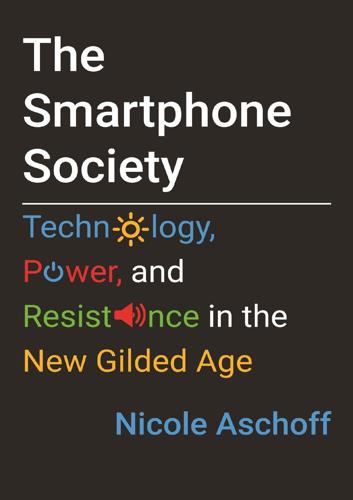
The Smartphone Society
by
Nicole Aschoff
The election of a man who boasted about the pussy-grabbing rights conferred to him as a result of his power and wealth threw a fat log on a growing fire of feminist fury in the United States and around the world. The feminist movement never goes away, but it waxes and wanes. Since 2010, feminism, like many other social movements, has been on an upswing. Women have begun using the “F” word again. In a 2013 Rolling Stone interview, Beyoncé called herself a “modern-day feminist” and Sheryl Sandberg published Lean In, a runaway hit in which she implored women to take off their tiaras and take the corner office.51 Sandberg’s vision of feminism—that women are on the cusp of achieving equality if only they’d “put their foot on the gas rather than the brake” in their work lives—became a dominant frame for women’s liberation.

Yes Please
by
Amy Poehler
So now I realized not only was he not coming to apologize, he was there to deliver more bad news. I practiced a few things I have learned from my therapist and other badass business bitches. I sat back. Actually, I leaned back. I thought about my second book, which will be a bestseller coauthored with Sheryl Sandberg titled Lean Back. I uncrossed my legs and I made eye contact. I immediately decided this was not my problem, and the relief of that decision spread across my chest like hot cocoa. Too often we women try to tackle chaos that is not ours to fix. “Well, that is disappointing,” I said. “I don’t know what to do,” he said.

Company of One: Why Staying Small Is the Next Big Thing for Business
by
Paul Jarvis
Published 1 Jan 2019
Gandhi did this through countless examples of peaceful protest, and Machida did it by convincing his engineering team that they could achieve this goal and that he trusted them to do so, and by giving them the resources to realize it. Because Mark Zuckerberg, the CEO of Facebook, is a classic introverted leader, he enlists the help of COO Sheryl Sandberg, who offers him social and political guidance. Mark leans on smaller, genuine, collaborative connections rather than attempting to keep a large number of employees or subordinates under his rule. He’s also been very competent at persuading other startups and their founders (typically very entrepreneurial in spirit) to join Facebook, by spending a lot of time with them and listening keenly.
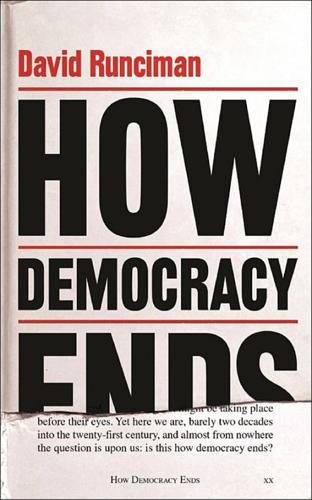
How Democracy Ends
by
David Runciman
Published 9 May 2018
Even as the world has been transformed by these new forms of corporate power, familiar patterns of human behaviour persist. When Trump won the presidency, he summoned the heads of the dominant Silicon Valley firms to meet him at Trump Tower. Most of them showed up as asked. Zuckerberg couldn’t make it, but Sheryl Sandberg, Facebook’s COO, was there. So were leaders from Google, Apple and Amazon. Some companies were deliberately snubbed. Jack Dorsey, the head of Twitter, was not invited. Twitter may be Trump’s megaphone, but he is not going to be beholden to anyone. Trump wanted to establish the traditional hierarchy.

The Power of Moments: Why Certain Experiences Have Extraordinary Impact
by
Chip Heath
and
Dan Heath
Published 2 Oct 2017
“Posttraumatic Growth: Conceptual Foundations and Empirical Evidence,” Psychological Inquiry 15: 1–18. The researchers have a test of post-traumatic growth, called the Posttraumatic Growth Inventory (PTGI), that you can find online. We also recommend the excellent Option B: Facing Adversity, Building Resilience, and Finding Joy by Adam Grant and Sheryl Sandberg. Also see: • Jane McGonigal (2015). SuperBetter: The Power of Living Gamefully. New York: Penguin. • James Pennebaker and John Evans (2014). Expressive Writing: Words That Heal. Enumclaw, WA: Idyll Arbor. Notes Chapter 1: Defining Moments YES Prep Signing Day. This story draws on Dan’s interviews with Donald Kamentz in February 2015 and Chris Barbic in May 2016 and email exchanges with both.
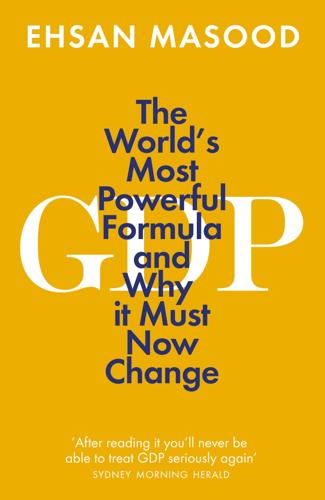
GDP: The World’s Most Powerful Formula and Why It Must Now Change
by
Ehsan Masood
Published 4 Mar 2021
This was not, at least on the face of it, a bad idea. McKinsey’s alumni reads like a Who’s Who of both the public sector and the corporate world. Famous names that once drew a McKinsey paycheck include Louisiana governor Bobby Jindal, former chairman of HSBC Stephen Green, and Facebook’s chief operating officer, Sheryl Sandberg. Traditionally, global consulting companies would be focused on helping other businesses make money. But lately consulting houses such as McKinsey have been deployed by governments to help them to cut costs and to transfer more of what governments do to private companies. McKinsey has acres of experience advising governments on how they can boost growth while shrinking the size of the public sector.

Death Glitch: How Techno-Solutionism Fails Us in This Life and Beyond
by
Tamara Kneese
Published 14 Aug 2023
Legacy Contact is a compelling effort because it codifies memorialization practices on a social networking platform, but there are no guarantees users will actually use this new service. In the spring of 2019, Facebook made yet another announcement. It added a “Tributes” section, enabling more controls for Legacy Contact. In its press release, Facebook’s chief operating officer Sheryl Sandberg wrote, “Over 30 million people view memorialized profiles every month to post stories, commemorate milestones and remember those who have passed away.”61 Facebook, of course, has data on how many people view the profiles of the dead, and thirty million is not an insignificant number. Facebook also strategically understands that unregulated memorialization can be painful for people who want more control over how they remember their dead loved ones.
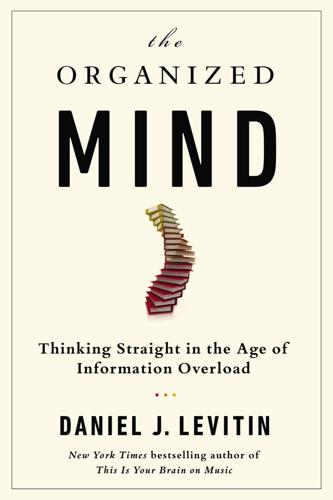
The Organized Mind: Thinking Straight in the Age of Information Overload
by
Daniel J. Levitin
Published 18 Aug 2014
One of the biggest surprises I came upon while working on this book was the number of such people who carry around a pen and notepads or index cards for taking physical notes, and their insistence that it is both more efficient and more satisfying than the electronic alternatives now on offer. In her autobiography, Lean In, Sheryl Sandberg reluctantly admits to carrying a notebook and pen around to keep track of her To Do list, and confesses that at Facebook, where she is the COO, this is “like carrying around a stone tablet and chisel.” Yet she and many others like her persist in this ancient technology. There must be something to it.
…
people who carry around a pen and notepads Not surprisingly, most didn’t want their names used in this book, but the list includes several Nobel Prize winners, leading scientists, artists and writers, Fortune 500 CEOs, and national politicians. “like carrying around a stone tablet and chisel.” Sandberg, S. (2013, March 17). By the book: Sheryl Sandberg. The New York Times Sunday Book Review, p. BR8. “Your mind will remind you . . .” Allen, D. (2008). Making it all work: Winning at the game of work and business of life. New York, NY: Penguin, p. 35. “If an obligation remained recorded . . .” Allen, D. (2002). Getting things done: The art of stress-free productivity.

Free Speech: Ten Principles for a Connected World
by
Timothy Garton Ash
Published 23 May 2016
Edward Wong, ‘China Uses “Picking Quarrels” Charge to Cast a Wider Net Online’, New York Times, 27 July 2015, http://www.nytimes.com/2015/07/27/world/asia/china-uses-picking-quarrels-charge-to-cast-a-wider-net-online.html 121. quoted in Brook Larmer, ‘Where an Internet Joke Is Not Just a Joke’, New York Times Magazine, 30 October 2011, http://www.nytimes.com/2011/10/30/magazine/the-dangerous-politics-of-internet-humor-in-china.html 122. Perry Link, ‘China: The Anaconda in the Chandelier’, New York Review of Books, 11 April 2001, http://www.nybooks.com/articles/archives/2002/apr/11/china-the-anaconda-in-the-chandelier/ 123. in a conversation I had about this with Sheryl Sandberg at Facebook headquarters on 15 September 2011, it was clear that she felt a very strong commercial interest in going into China but was well aware of the potential reputational damage if, for example, someone were to be persecuted in China as a result of something they had posted on the Chinese version of Facebook.
…
Amongst the many individuals to whom I owe specific intellectual debts are Richard Allan, Chinmayi Arun, Carol Atack, Clive Baldwin, Daniel Bell, Susan Benesch, Peter Berkowitz, Pratap Bhanu Mehta, Rajeev Bhargava, Monika Bickert, Nigel Biggar, Lee Bollinger, Jonathan Bright, Andreas Busch, Luigi Cajani, Agnes Callamard, Ryan Calo, Gerhard Casper, Ying Chan, Stephen Coleman, Sandra Coliver, Paul Collier, David Davis, Richard Dawkins, Faisal Devji, Larry Diamond, Marc-Antoine Dilhac, David Drummond, Robin Dunbar, Ronald Dworkin, David Edgar, David Erdos, Amir Eshel, Khaled Fahmy, James Fenske, Jo Fidgen, James Fishkin, Francis Fukuyama, Iginio Gagliardone, Sue Gardner, Nazila Ghanea, Jo Glanville, Mike Godwin, Arnab Goswami, Victoria Grand, Leslie Green, Paul Haahr, Scott Hale, Ivan Hare, Usama Hasan, Jonathan Heawood, Eric Heinze, Andrew Hurrell, Richard Jenkyns, Dominic Johnson, Ayşe Kadıoğ lu, David Kennedy, Matthew Kirk, Henning Koch, Andrew Kohut, Markos Kounalakis, Steve Krasner, Anthony Lester, David Levy, Li Qiang, John Lloyd, Steven Lukes, Ken Macdonald, Alex Macgillivray, Noel Malcolm, Paolo Mancini, Erika Mann, Viktor Mayer-Schönberger, Jonathan Leader Maynard, Rory McCarthy, Andrew McLaughlin, Stephen Meili, Abbas Milani, Péter Molnár, Martin Moore, Evgeny Morozov, Edward Mortimer, Max Mosley, Turi Munthe, Norman Naimark, Victoria Nash, John Naughton, Aryeh Neier, Kalypso Nicolaïdis, Rasmus Kleis Nielsen, Peter Noorlander, Joseph Nye, Josiah Ober, Franz Josef Och, Kerem Öktem, Margie Orford, Richard Ovenden, David Pannick, Andrew Przybylski, Timothy Radcliffe, Jim Reed, Rob Reich, Michael Rosen, Alan Rusbridger, Jonathan Sacks, Sheryl Sandberg, Carol Sanger, Orville Schell, Eliot Schrage, Stephen Sedley, Soli Sorabjee, Philip Taubman, Daya Thassu, Mark Thompson, Lila Tretikov, Zeynep Tufekci, Barbara van Schewick, Jeremy Waldron, Jimmy Wales, Matt Walton, Nigel Warburton, Jeremy Weinstein, Rachel Whetstone, Kieran Williams, Rowan Williams, Justin Winslett, Tobias Wolff, Joss Wright, Tim Wu and Jonathan Zittrain.

The Four: How Amazon, Apple, Facebook, and Google Divided and Conquered the World
by
Scott Galloway
Published 2 Oct 2017
Facebook: Nobody wants to be seen as a company not on board with Facebook. Old CEOs want to put Mark Zuckerberg on stage with his hoodie. It doesn’t matter that he is neither charming nor a good speaker—he’s the equivalent of skinny jeans and makes every company that tries on Facebook look younger. Sheryl Sandberg also has been key—she’s hugely likable, and is seen as the archetype of the modern, successful woman: “Hey everybody! Lean in!” Facebook has not come under the same scrutiny as Microsoft because it’s more likable. Most recently, Facebook has attempted to skirt responsibility for fake news, claiming it’s “not a media company, but a platform.”

Dogfight: How Apple and Google Went to War and Started a Revolution
by
Fred Vogelstein
Published 12 Nov 2013
At most companies, outlandish ideas are discouraged in favor of ideas that are doable. At Google, especially back then, the reverse was true. The easiest way to get on cofounder and now CEO Larry Page’s bad side was not to think big enough and to clutter a pitch with how much money an idea could make. Back in 2006 Page famously gave Sheryl Sandberg praise for making a mistake that cost Google several million dollars. That was when Sandberg was a Google vice president in charge of its automated ad system, not the chief operating officer of Facebook. “God, I feel really bad about this,” Sandberg told Page, according to Fortune magazine. But instead of hammering her for the error, Page said, “I’m so glad you made this mistake because I want to run a company where we are moving too quickly and doing too much, not being too cautious and doing too little.

The Startup Wife
by
Tahmima Anam
Published 2 Jun 2021
I could reprogram the camera in that room to live-feed into my computer, but I don’t—I know they will hardly give her time to speak, that Craig is panting down the line, that Cyrus is telling everyone how utterly perfect everything is because two hundred and fifty thousand people get married using WAI rituals every week, and now, because of Marco, we can do even more to shepherd humans through their short time on the planet, providing them with community, spirituality, a place to turn when life begins to feel devoid of meaning, and who is little Yvonne Caplan to dispute any of that? In many ways, things are exactly as they always were. Ren and I design things and we code things and we run our team like Santa’s Workshop and the sun swathes the Manhattan skyscrapers in gold dust. In the meantime, I am no Sheryl Sandberg, but people are starting to notice me. “THE BRAINS BEHIND WAI” is an article that does the rounds. Then I get an invitation to headline the Girls Who Boss Festival, and a few weeks after that, I walk past a woman wearing a T-shirt with my face printed on it. MY FACE. Oh, it’s grainy and screen-printed and also antiqued, but it’s me.
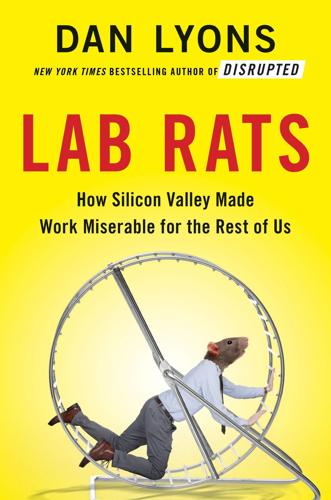
Lab Rats: How Silicon Valley Made Work Miserable for the Rest of Us
by
Dan Lyons
Published 22 Oct 2018
Netflix just no longer needed them. McCord didn’t understand why some of them got so weepy about it. Why couldn’t they just move on? It’s hard to overestimate how influential the Netflix culture deck has become. Since 2009, it has been viewed nearly eighteen million times. Facebook’s chief operating officer, Sheryl Sandberg, once said McCord’s code “may well be the most important document ever to come out of the Valley.” According to TechCrunch, a Silicon Valley news blog, the Netflix code has become “a cultural manifesto for the Internet’s economic epicenter” and a “crystal ball into the future of daily life” in the modern workplace.

Cult of the Dead Cow: How the Original Hacking Supergroup Might Just Save the World
by
Joseph Menn
Published 3 Jun 2019
Executives above him repeatedly minimized the Russian activity in his public reports. When he briefed Facebook’s board about what he had found in September 2017, the directors asked him if he had successfully rooted out all of the stealth accounts. He answered, truthfully, that he had not. The board members then grilled CEO Mark Zuckerberg and chief operating officer Sheryl Sandberg about why they hadn’t told them how bad it was. Sandberg paid the tongue-lashing forward, yelling at Stamos: “You threw us under the bus!” Stamos never controlled all of the security apparatus at the company, and the board flare-up cemented his reputation for being overly aggressive. In December, when Stamos suggested reporting to someone besides the general counsel, other executives in charge of Facebook’s main service and engineering stepped up and said they could handle security interpreted more broadly, now that it was a subject of global concern.

This Book Could Fix Your Life: The Science of Self Help
by
New Scientist
and
Helen Thomson
Published 7 Jan 2021
Self-help manuals thrive on the desire of many people to get ahead in the world of work, providing all kinds of advice on the behaviours we need to adopt to maximise our potential and move onwards and upwards. The genre is often accompanied by a cult of celebrity. We love successful people, and often turn to the likes of Elon Musk, Richard Branson or Sheryl Sandberg to identify the secrets of success that we can apply to ourselves. Surely there must be some kind of rule, personality trait or way of working, we think, that we can emulate to achieve greatness? I hope I won’t be disappointing you at this stage if I say this isn’t that kind of book. I’ll get on to why, in my opinion, any self-help manual based on individual anecdotes about successful people, and the character traits that led them to that success, is bound to be flawed, in a moment.

What Would Google Do?
by
Jeff Jarvis
Published 15 Feb 2009
“But if you launch things and iterate really quickly, people forget about those mistakes and have a lot of respect for how quickly you build the product up and make it better.” Google is unafraid of making mistakes that can cost money—courage one rarely sees in business. Advertising executive Sheryl Sandberg (who later was hired away from Google to be COO of Facebook) made an error she won’t describe in detail that cost the company millions of dollars. “Bad decision, moved too quickly, no controls in place, wasted some money,” she confessed to Fortune magazine. She apologized to boss Larry Page, who responded: “I’m so glad you made this mistake, because I want to run a company where we are moving too quickly and doing too much, not being too cautious and doing too little.

The Airbnb Story: How Three Ordinary Guys Disrupted an Industry, Made Billions...and Created Plenty of Controversy
by
Leigh Gallagher
Published 14 Feb 2017
The more successful Airbnb became, the more top people the founders had access to, and as it began to get bigger, Chesky started seeking out sources for specific areas of study: Apple’s Jony Ive on design, LinkedIn’s Jeff Weiner and Disney’s Bob Iger on management, Facebook’s Mark Zuckerberg on product, and Sheryl Sandberg on international expansion and on the importance of empowering women leaders. John Donahoe of eBay was a particularly important mentor, schooling Chesky on scaling operations, managing a board, and other aspects of being the CEO of a large marketplace business. In what became a valuable reverse mentorship, Donahoe also quizzed Chesky for his advice on design and innovation and on how eBay could maintain characteristics of being young and nimble.

The 100-Year Life: Living and Working in an Age of Longevity
by
Lynda Gratton
and
Andrew Scott
Published 1 Jun 2016
Given these transitions, what will it take to make these partnerships work? Like much in the 100-year life, it will be about being prepared to make active choices and understand the consequences. It will also be about making and keeping commitments. This will bring to the fore the importance of negotiation. Not everyone will agree with Sheryl Sandberg’s advice to graduating women that ‘the most important career decision you’re going to make is whether or not to have a partner and who that partner is’.10 But it is a crucial decision with profound consequences. For Sandberg, a high-quality partnership means arriving at an equitable distribution over the long haul, and having a shared vision of success for everyone at home – not just for oneself.11 Over a long productive life, it is clear that both men and women will be called upon to make fundamental changes in their outlook on and behaviour towards one another.

Please Don't Sit on My Bed in Your Outside Clothes: Essays
by
Phoebe Robinson
Published 14 Oct 2021
And finally, I would’ve appreciated advice specifically about being a Black female boss. There’s not a whole lot of information or books on that topic, and what does exist, you really have to dig to find. Like, where’s Lean In for us? Now, it doesn’t matter whether you agreed with everything in Sheryl Sandberg’s book, there’s no denying that it broke through the zeitgeist as a solid resource women can refer to; however, the same isn’t true about BW leadership. The ones that tend to break out are books such as Year of Yes by Shonda Rhimes, which is great, but is more about her personal journey transforming her life over the course of a year and less concerned with getting down to brass tacks when it comes to business in the way I had hoped.
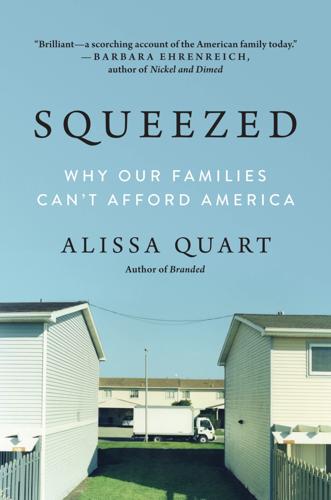
Squeezed: Why Our Families Can't Afford America
by
Alissa Quart
Published 25 Jun 2018
For those who were members of groups who have been historically excluded and oppressed, from single mothers to parents of color, their financial squeeze had sometimes become a strangle. Leaning in and work-life balance very quickly seemed like hooey. Despite their education and training, some of these women were just trying to get by. As the working-class feminist icon Dolly Parton has said in response to being questioned about Sheryl Sandberg’s book on corporate feminism Lean In: “I’ve leaned over. I’ve leaned forward. I don’t know what ‘leaned in’ is.” When I read Parton’s remark in an article I edited by the writer Sarah Smarsh, I thought of the adjunct professor moms on food stamps, the lawyers consumed with resentment as they tottered under their student debt bills, and the workers experiencing pregnancy discrimination—all of them were leaning over.

Randomistas: How Radical Researchers Changed Our World
by
Andrew Leigh
Published 14 Sep 2018
Positive and negative emotions are contagious.66 Like Amazon’s pricing experiments, Facebook’s emotional manipulation experiments caused a media firestorm. The researchers were criticised by the British Psychological Society, the Federal Trade Commission was asked to investigate, and the academic journal Proceedings of the National Academy of Sciences published an editorial ‘expression of concern’.67 Sheryl Sandberg, then Facebook’s chief operating officer, told users: ‘It was poorly communicated and for that communication we apologize. We never meant to upset you.’68 Given that I’m both a randomista and a former professor, you might expect me to side with companies that collaborate with academics to conduct social science experiments.
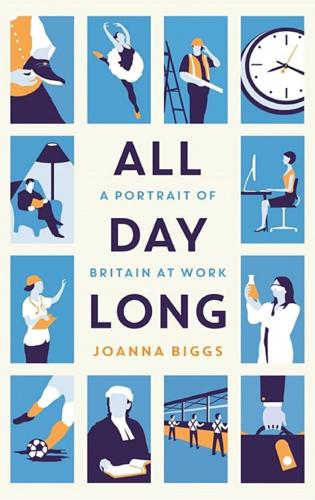
All Day Long: A Portrait of Britain at Work
by
Joanna Biggs
Published 8 Apr 2015
To nudge foot-dragging firms along, organisations like the 30 Per Cent Club create mentoring programmes and target investors in companies with few women on their boards. (There are two boards in the FTSE 100 with no women members: Antofagasta and Glencore Xstrata, both mining companies.) In the USA, women are encouraged to look to themselves. Sheryl Sandberg, the COO of Facebook, said in her book, Lean In: Women, Work, and the Will to Lead, that women haven’t positioned themselves well in the marketplace: they still don’t speak up, let their partner hold the baby or lean into a career that’s heading for maternity leave. What women can do in the world is determined by what they think is possible, she says, as well as by what the world allows them to do.

Bitcoin Billionaires: A True Story of Genius, Betrayal, and Redemption
by
Ben Mezrich
Published 20 May 2019
Ironically, despite not appreciating Facebook’s enormous potential in its earliest days when it was sitting right in front of him in Harvard Yard—dismissing it during his meeting with the twins as an inconsequential student project—Summers managed to find his way onto a few boards of tech companies in Silicon Valley, including Square. This was thanks to some help from Sheryl Sandberg, who had joined Facebook as its chief operating officer in 2008. She was a former student of Summers—and later worked for him when he was secretary of the treasury under President Clinton. Perhaps Summers’s friendship with Sandberg had inspired him to lean in against the twins and try to even the score.
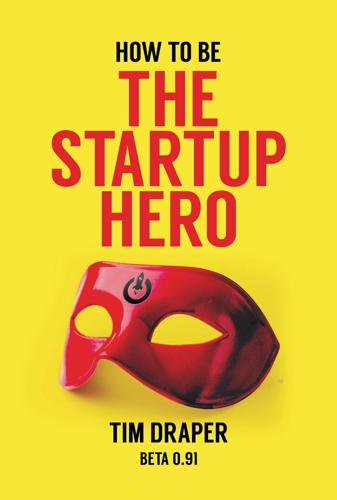
How to Be the Startup Hero: A Guide and Textbook for Entrepreneurs and Aspiring Entrepreneurs
by
Tim Draper
Published 18 Dec 2017
Only you know if you are capable of becoming a Startup Hero. If you don’t score well, have no fear. Draper University is here to reshape your thinking. Which of these three people do you admire most (choose at least one woman and one man)? George Washington. Henry Ford. Arnold Schwarzenegger Hillary Clinton Sheryl Sandberg. Oprah Winfrey. Do you drink alcohol? Yes No. Which of these do you consider to be the best use of money? Giving society liquidity. Building my vision. Buying a nice house or car My customer to show how much they appreciate my product. Do you believe that the college admissions process worked for you?

Power, for All: How It Really Works and Why It's Everyone's Business
by
Julie Battilana
and
Tiziana Casciaro
Published 30 Aug 2021
Coats—NASA, Johnson Space Center,” Diversity Journal, March 12, 2012, https://diversityjournal.com/7663-michael-l-coats-nasa-johnson-space-center/. 8 David Thomas and Robin Ely, “Making Differences Matter: A New Paradigm for Managing Diversity,” Harvard Business Review 74, no. 5 (1996): 79–90. 9 Robin J. Ely and David A. Thomas, “Getting Serious About Diversity: Enough Already with the Business Case,” Harvard Business Review 98, no. 6 (2020): 114–22. 10 See Sheryl Sandberg, Lean In: Women, Work, and the Will to Lead (New York: Knopf, 2013). 11 Rosabeth Moss Kanter, Men and Women of the Corporation (New York: Basic Books, 2010). 12 For more on the cultural contingency of tokenism, see Catherine J. Turco, “Cultural Foundations of Tokenism: Evidence from the Leveraged Buyout Industry,” American Sociological Review 75, no. 6 (2010): 894–913. 13 Alicia DeSantola, Lakshmi Ramarajan, and Julie Battilana, “New Venture Milestones and the First Female Board Member,” Academy of Management Best Paper Proceedings (2017). 14 Carolyn Wiley and Mireia Monllor-Tormos, “Board Gender Diversity in the STEM&F Sectors: The Critical Mass Required to Drive Firm Performance,” Journal of Leadership & Organizational Studies 25, no. 3 (2018): 290–308. 15 Alexandra Kalev, Frank Dobbin, and Erin Kelly, “Best Practices or Best Guesses?

Green Swans: The Coming Boom in Regenerative Capitalism
by
John Elkington
Published 6 Apr 2020
You’re doing a brilliant job of listening, Jack, but can you actually dial up the urgency and move on this stuff?” That anger suggests a growing awareness of the Black and Gray Swan potentials of our fast-evolving electronic habitats. The day before Dorsey appeared at TED, interestingly, a well-known journalist had issued a challenge to all the “gods of Silicon Valley,” listing them—Mark Zuckerberg, Sheryl Sandberg, Sergey Brin, Larry Page, and, yes, Jack Dorsey. Carole Cadwalladr was the brilliant journalist who broke the story about the role of Cambridge Analytica in distorting the UK vote on Brexit.6 Here is what she had to say: “This technology you have invented has been amazing, but now it is a crime scene.

How to Stand Up to a Dictator
by
Maria Ressa
Published 19 Oct 2022
New Book Explores Its Role in Misinformation,” PBS NewsHour, July 22, 2021, https://www.pbs.org/newshour/show/is-facebook-putting-company-over-country-new-book-explores-its-role-in-misinformation. 50.Lora Kolodny, “Zuckerberg Claims 99% of Facebook Posts ‘Authentic,’ Denies Fake News There Influenced Election,” TechCrunch, November 12, 2016, https://techcrunch.com/2016/11/13/zuckerberg-claims-99-of-facebook-posts-authentic-denies-fake-news-there-influenced-election/. 51.That was Alex Stamos, who technically reported to Sheryl Sandberg, whose responsibilities included protecting users. 52.Sheera Frenkel and Cecilia Kang, An Ugly Truth: Inside Facebook’s Battle for Domination (New York: Harper, 2021). 53.Ibid. Facebook’s policy, according to the authors, New York Times reporters Sheera Frenkel and Cecilia Kang, is to fire employees after they’re caught doing that.

App Kid: How a Child of Immigrants Grabbed a Piece of the American Dream
by
Michael Sayman
Published 20 Sep 2021
In truth, the comms team probably didn’t want to take a risk with a slightly loudmouthed newly hired teen. And their cautious mentality had its reasons. It was how Mark Zuckerberg had worked since his Harvard days. And it was how they still worked, rarely allowing anyone but Zuckerberg and occasionally the COO, Sheryl Sandberg, to talk to the press. And even they did so only in very specific circumstances. Thank God I’d known enough to decline to pass along the Univision crew’s request for an interview with Zuckerberg. Marcello, the producer, had pushed hard for that, warning me that without a big name to anchor it, my years-in-the-making documentary would be reduced to a fifteen-minute video on the network’s off-brand Fusion channel.

Modern Monopolies: What It Takes to Dominate the 21st Century Economy
by
Alex Moazed
and
Nicholas L. Johnson
Published 30 May 2016
“Our job is to create incentives and disincentives to produce the best behavior, the best outcome, from a bunch of people you’ll never meet.” In effect, he was creating public policy for Twitter’s developer community. This attitude is surprisingly common among those who have spent time leading platforms. In fact, it was a key reason that Mark Zuckerberg hired Sheryl Sandberg as Facebook’s chief operating officer. “We spent a lot of time talking about her experience in government,” Zuckerberg said. “In a lot of ways, Facebook is more like a government than a traditional company. We have this large community of people, and more than other technology companies, we’re really setting policies.”11 Sarver agrees.

Enshittification: Why Everything Suddenly Got Worse and What to Do About It
by
Cory Doctorow
Published 6 Oct 2025
These contained many bombshells, but none so consequential as Jedi Blue, the code name for a secret collusive agreement between Google and Facebook that rigged the ad market to raise the price of ads while delivering a lower share of the revenue to the publishers who ran those ads. Google CEO Sundar Pichai, Facebook CEO Mark Zuckerberg, and Facebook COO Sheryl Sandberg had all personally signed off on Jedi Blue. Not only did this conspiracy rip off Google’s and Facebook’s business customers—advertisers and publishers alike—but it also blocked competitors from entering the market and offering a fairer deal to either publishers or advertisers. All this bad behavior—deliberately worsening search results, rigging the ad markets—started once it became undeniable that Google didn’t have to worry about losing market share to a competitor.
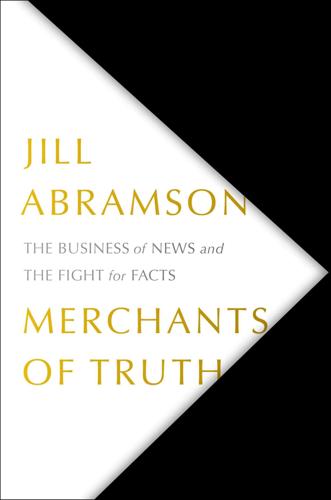
Merchants of Truth: The Business of News and the Fight for Facts
by
Jill Abramson
Published 5 Feb 2019
Thompson wanted the suite on a fast timetable. I scrambled to find the appropriate editors to work on these projects in teams often co-led with the business side. I invited Thompson to accompany me on a trip to Silicon Valley. I had been invited to give a speech at San Francisco’s Commonwealth Club, to be the guest at one of Sheryl Sandberg’s monthly gatherings in her home for the most influential women in tech, and for lunch with Apple CEO Tim Cook, with whom I was trying to create better communication after he took umbrage over the Times’s series on his company. We chatted amiably through the three-day trip. He told me several times that he was developing a plan to restructure the leadership of the Times.
…
And no private equity guys, Graham had told her, because he could not bear to see his family jewel bought only to be hollowed out and flipped. Starting with Bill Gates in the early 1990s, Graham sought advice from people who were deep in digital technology. The circle expanded to include Steve Case, Ted Leonsis, Steve Jobs, Reid Hoffman, Sheryl Sandberg and Dave Goldberg, and, of course, Zuckerberg. This was how Graham had first come to know Bezos too. Bezos was surprised by the call. “Why would I even be a candidate to buy the Post?” he asked Peretsman. “I don’t know anything about the newspaper industry.” He seemed cool to the idea. But he’d known about the Post since he was a kid and had watched the Watergate hearings on television, lying on the floor of the living room next to his grandfather.

The Virgin Way: Everything I Know About Leadership
by
Richard Branson
Published 8 Sep 2014
I find that quite appalling but hopefully the infamous glass ceiling is about to become a distant memory with the new generation of dynamic women leaders that are now running a lot of formerly very macho organisations like General Motors (Mary Barra took over in January 2014), Pepsico, IBM, Lockheed Martin and General Dynamics. Others like Sheryl Sandberg, the vociferous COO at Facebook and Marissa Mayer at Yahoo are also gaining momentum in the drive to make gender a non-issue in the workplace. At Virgin we have our own powerhouse women leaders such as Jayne-Anne Gadhia at Virgin Money, Jean Oelwang at Virgin Unite and Cecilia Vega who has just joined us as CEO of Virgin Mobile in Mexico: but I’ll be honest and admit – we too still have work to do.
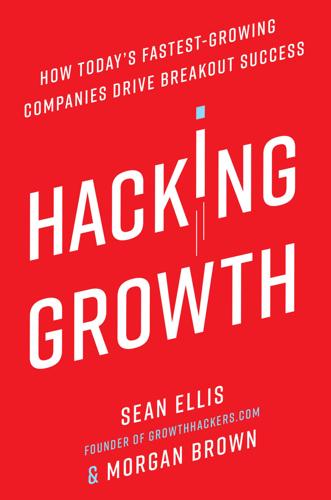
Hacking Growth: How Today's Fastest-Growing Companies Drive Breakout Success
by
Sean Ellis
and
Morgan Brown
Published 24 Apr 2017
v=4-kAIHN6qYY. 9. Charles Duhigg, “How Companies Learn Your Secrets,” New York Times Magazine, February 16, 2012. 10. Video of Febreze advertisement from 1999, viewed at: youtube.com/watch?v=ZTPNtruSIU0. 11. Molly Young, “Be Bossy: Sophia Amoruso Has Advice for Millennials and a Bone to Pick With Sheryl Sandberg,” New York magazine, The Cut (blog), May 26, 2014, nymag.com/thecut/2014/05/sophia-amoruso-nasty-gal-millennial-advice.xhtmll. 12. Blake Masters, “Peter Thiel’s CS183: Startup—Class 9 Notes Essay,” Blake Masters blog, May 4, 2012, blakemasters.com/post/22405055017/peter-thiels-cs183-startup-class-9-notes-essay. 13.
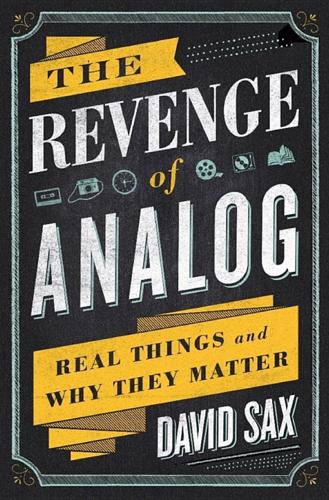
The Revenge of Analog: Real Things and Why They Matter
by
David Sax
Published 8 Nov 2016
You can’t walk five feet at Facebook without bumping into a sign extolling the virtues of hacking or the sense of community employees are supposed to share. Many outside Facebook have called the Analog Research Laboratory the company’s propaganda factory, and it certainly feels as if a poster of Mark Zuckerberg swimming across the Yangtze River, or Sheryl Sandberg smashing a Twitter bird under her outstretched fist, could emerge from its printing press at any moment. But at a company so large, charged with managing a social network whose very definition is amorphous, sometimes a little propaganda is needed to keep the cadres motivated and on track. “How do you drive a large community and continue fostering a culture of autonomy?”

The Myth of Capitalism: Monopolies and the Death of Competition
by
Jonathan Tepper
Published 20 Nov 2018
Today, the suburb of Atherton in Silicon Valley is now the most expensive postcode in the United States. The homes and estates of the tech titans are rarely visible from the road. The most expensive homes sell for around $30 million while an average home costs over $9 million. Tech billionaires Eric Schmidt, Meg Whitman, and Sheryl Sandberg all have homes here.6 For over a century, California was the embodiment of technological and economic progress. Today, the Golden State suffers the highest level of poverty in the country, even surpassing Mississippi and Alabama. It is also now home to roughly one-third of the nation's welfare recipients, roughly three times its share as a percentage of the population.7 In the old days, the state's tech sector produced industrial jobs that sparked prosperity not only in Silicon Valley, but also in working class towns like San Jose.

Bezonomics: How Amazon Is Changing Our Lives and What the World's Best Companies Are Learning From It
by
Brian Dumaine
Published 11 May 2020
As Bill Gates told The New Yorker: “Somebody who is smart, and rich, and ends up not acknowledging problems as quickly as they should will be attacked as arrogant. That comes with the territory.” Bezos, of course, is hyper-smart and he might soon become more adept at communicating with the public and displaying a more human touch. Perhaps he’ll hire his own version of Zuckerberg’s Sheryl Sandberg, who, as the CEO’s deputy and a regular on the conference circuit, is more skillful than her boss at trying to explain Facebook to the public. In a sign that he may be adapting to this new reality, Bezos has given Amazon’s head of Global Corporate Affairs, Jay Carney, the go-ahead to build up Amazon’s public relations team, which has grown from a handful of spinmeisters to, as of 2019, an army of 250.

Masters of Scale: Surprising Truths From the World's Most Successful Entrepreneurs
by
Reid Hoffman
,
June Cohen
and
Deron Triff
Published 14 Oct 2021
And guidelines suggested that everyone (Ray included) should endeavor to frame criticism in more positive terms—for instance, recasting failures as learning opportunities. To get the most out of radical transparency, Ray says, it should be approached with a spirit of mutual respect, curiosity about others’ views, and a recognition that everyone’s on the same team—even if they’re not always on the same page. * * * — Sheryl Sandberg of Facebook also champions this approach. She believes it’s incumbent on leaders to invite people in the organization to be completely honest with them, because if people don’t feel free to speak up, then they simply won’t do it—and you’ll miss out on critical information. Sheryl learned this lesson years before arriving at Facebook, way back in Google’s early days, when she was hired by Eric Schmidt to build out the advertising revenue that would fuel Google’s growth.
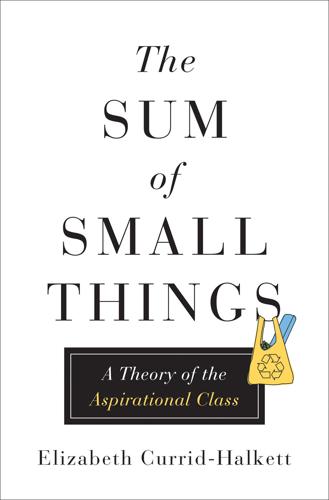
The Sum of Small Things: A Theory of the Aspirational Class
by
Elizabeth Currid-Halkett
Published 14 May 2017
This may be a less-than-ideal situation for middle-class women but an impossible situation for poor women who already are having trouble making ends meet. No wonder, one of the most critical determinants of who starts and who continues breast-feeding is socioeconomic status.”21 This precise distinction is why Sheryl Sandberg can pull off being a top executive at Facebook while breast-feeding two kids, while the average hourly worker cannot.22 In other parts of the world (just as in the United States), good maternity leave is associated with higher rates of continued breast-feeding (see figure 4.1). As the journalist Hannah Rosen calculates, “Let’s say a baby feeds seven times a day and then a couple more times at night.

Trick Mirror: Reflections on Self-Delusion
by
Jia Tolentino
Published 5 Aug 2019
In December 2018, The Wing, by then operating in five locations, raised $75 million, bringing its funding to a total of $117.5 million. Many investors were female—venture capitalists, actresses, athletes. “This round is proof positive that women can be on both sides of the table,” Gelman said.) The ever-expanding story of Girlboss feminism really begins with Lean In, Sheryl Sandberg’s 2013 manifesto, co-written with Nell Scovell. Lean In was sharp, sensible, and effective, urging women to take ownership of their ambition. Sandberg was the chief operating officer of Facebook, and, writing years before the Facebook backlash, she had impeccable mainstream credibility: she was a powerful, graceful, rich, hardworking, married white woman, making an argument about feminism that centered on individual effort and hard work.

Winners Take All: The Elite Charade of Changing the World
by
Anand Giridharadas
Published 27 Aug 2018
And are the elites who embrace and sponsor such ideas the people we trust to arrange our future? * * * — Amy Cuddy wants to believe the thought leader can use the tricks of her trade to transcend the pitfalls of thought leadership. She wants to believe there is a micro way into the macro—that we can Sheryl Sandberg our way to a Simone de Beauvoir–worthy society. She wants to believe that a thought leader can also be a critic, that she can use her embrace by MarketWorlders to effect change from within. She thinks the secret to cajoling them toward systemic reform may lie in blending two disparate concepts from her field.

Revolution Française: Emmanuel Macron and the Quest to Reinvent a Nation
by
Sophie Pedder
Published 20 Jun 2018
From 2014 onwards, venture-capital investment in France increased sharply. By 2016 it had reached €2.7 billion, more than was invested in Germany. That year saw 590 rounds of capital-raising in France, more than any country in Europe. Venture capitalists in London, who had until then shied away from Paris, became bullish about France for the first time. Sheryl Sandberg, COO of Facebook, said the country now had ‘some of the most innovative technology companies in the world’.14 Tony Fadell, the inventor of the Apple iPod, moved to Paris to work with entrepreneurs in the French capital. In 2009, he said, French corporate life was all about big, old companies, and ‘felt like the Dark Ages’.
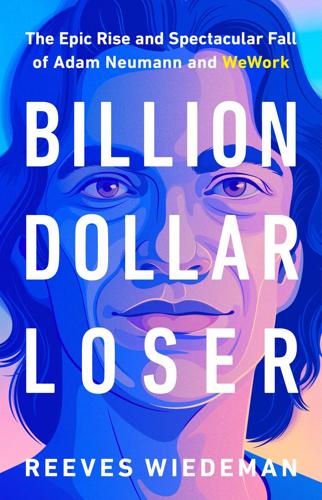
Billion Dollar Loser: The Epic Rise and Spectacular Fall of Adam Neumann and WeWork
by
Reeves Wiedeman
Published 19 Oct 2020
After a few months, Gomel was moved out of his job managing WeWork’s core office-leasing business and tasked with WeWork’s tangential push into real estate investing. Shifting fortunes were a familiar pattern for WeWork executives. Gomel had taken his initial title from Artie Minson, who had been Adam’s heir apparent during two years as the metaphorical adult in the room—the Sheryl Sandberg to Adam’s Mark Zuckerberg. Minson was a foot shorter than Adam and had followed a more traditional path to the upper echelons of American business: private high school in New York, an accounting degree from Georgetown, then an MBA at Columbia. He had worked for founders before, and in each case, the brazen impulses that led them to start their companies in the first place had tempered as they grew into large corporations.
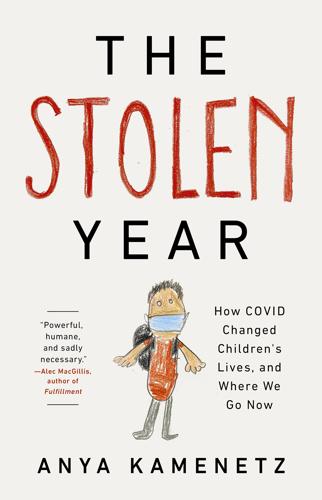
The Stolen Year
by
Anya Kamenetz
Published 23 Aug 2022
And we can’t do it without solidarity, public programs, and men stepping up. THE END OF LEAN IN? I talked to Marianne Cooper about this. She is a sociologist and the lead researcher of Lean In: Women, Work, and the Will to Lead. That was the blockbuster, enormously influential 2013 book by Facebook executive Sheryl Sandberg, one of the highest-ranking women in Silicon Valley. It urged women to rededicate themselves to the quiet revolution. Success, as the subtitle had it, was a matter not of systemic change but of personal “will.” Implicitly, by this model, the women’s movement succeeds when we control 250 of the Fortune 500 companies.

Supremacy: AI, ChatGPT, and the Race That Will Change the World
by
Parmy Olson
In July 2018, Altman flew to Idaho for the annual Sun Valley conference. The invitation-only gathering hosted by the investment firm Allen & Company was known as a “summer camp for billionaires,” an informal networking shindig where wealthy technologists wore Patagonia vests and ate kale salads next to Facebook’s chief operating officer Sheryl Sandberg or Amazon founder Jeff Bezos. Attendees hailed from the worlds of tech and media, and they sometimes made deals right on the premises over coffee or, in the case of Altman and Nadella, in a stairwell. During the conference, the two lanky men bumped into each other on the stairs and started chatting.

This Is for Everyone: The Captivating Memoir From the Inventor of the World Wide Web
by
Tim Berners-Lee
Published 8 Sep 2025
Unfortunately, what ended up happening was that, as the technology evolved, a handful of providers grew into dominant, unregulated monopolies: YouTube for video, Instagram for images, Twitter for microblogging, and Facebook for one’s personal launchpad. These digital platforms began to replace the older, more organic experience of building one’s own platform using the HTML tools of the web. I had mixed feelings about this, as you might imagine – and gradually, I began to grow disillusioned with Facebook. With the help of his COO Sheryl Sandberg, Mark monetized his platform by bundling Facebook users’ data and targeting them with advertising. By matching Facebook data with search histories, advertisers could build detailed demographics of users, then follow them all over the web with ads. I felt this was a privacy violation, and in talks, I began to speak of the concept of ‘data sovereignty’ – the idea that you, not Facebook, should own your profile and your history of interactions
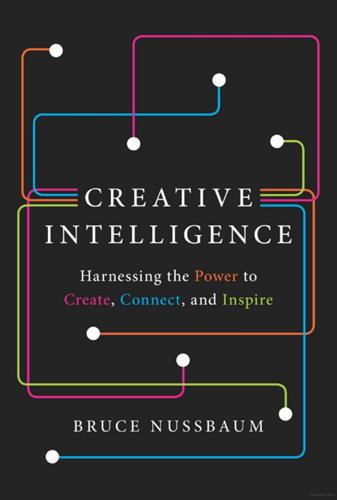
Creative Intelligence: Harnessing the Power to Create, Connect, and Inspire
by
Bruce Nussbaum
Published 5 Mar 2013
Early on, he enlisted the help of Sean Parker, cofounder of Napster, who connected him to Silicon Valley VCs like Andreessen Horowitz, but when Parker’s “party boy” persona was deemed a “liability,” Zuckerberg dropped him. With enough money to do a start-up, Zuckerberg hired Owen Van Natta from Amazon, and Van Natta was instrumental in increasing revenue and building out the company from twenty-six employees to hundreds. Then he fired Van Natta and hired Sheryl Sandberg, a veteran manager from Google, to help him scale Facebook to a global corporation. Along this journey, according to Blodget, Zuckerberg sought counsel from the likes of Peter Thiel, who was an early investor; Marc Andreessen, now a board member; and LinkedIn’s Reid Hoffman. None of this was easy for Zuckerberg, who was far more comfortable as a software programmer and product designer.

The Startup Way: Making Entrepreneurship a Fundamental Discipline of Every Enterprise
by
Eric Ries
Published 15 Mar 2017
This is true in governments and global companies like GE, but it’s also true for almost anyone who is not the original founder of the organization where they work. So we have to ask ourselves: Do we want to leave behind an organization to the next generation of managers that is stronger than the one we inherited? What do we want our legacy to be? Nor is this question just for older, established companies. One of my favorite stories about Sheryl Sandberg, Facebook’s dynamic COO, comes from a company meeting in which employees were complaining about the “unfairness” of having their performance evaluated based on the success of the projects they had worked on, rather than just their individual contribution to those projects. Sandberg acknowledged these concerns, but her reply has stuck with me for years.
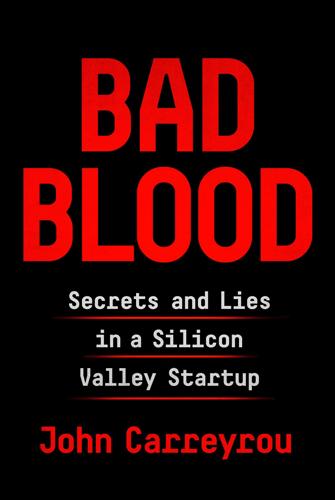
Bad Blood: Secrets and Lies in a Silicon Valley Startup
by
John Carreyrou
Published 20 May 2018
President Obama appointed her a U.S. ambassador for global entrepreneurship, and Harvard Medical School invited her to join its prestigious board of fellows. As much as she courted the attention, Elizabeth’s sudden fame wasn’t entirely her doing. Her emergence tapped into the public’s hunger to see a female entrepreneur break through in a technology world dominated by men. Women like Yahoo’s Marissa Mayer and Facebook’s Sheryl Sandberg had achieved a measure of renown in Silicon Valley, but they hadn’t created their own companies from scratch. In Elizabeth Holmes, the Valley had its first female billionaire tech founder. Still, there was something unusual in the way Elizabeth embraced the limelight. She behaved more like a movie star than an entrepreneur, basking in the public adulation she was receiving.

Palo Alto: A History of California, Capitalism, and the World
by
Malcolm Harris
Published 14 Feb 2023
Meanwhile, the media hyped Holmes and Theranos as the next big thing. She adopted the Steve Jobs turtleneck and invited the comparison.iv Chiat/Day’s extensive advertising campaign helped elevate her to visionary technologist and self-made billionaire. Theranos also hit its peak around the 2013 publication of Google-then-Facebook executive Sheryl Sandberg’s bestselling business memoir Lean In: Women, Work, and the Will to Lead, which encouraged women to stop standing in their own way and seize the reins of high-growth start-ups. Holmes was the perfect model, and she leaned so far in that her nose touched the floor. When Vice President Joe Biden visited the lab to hype domestic health-care innovation, the Theranos team rigged up a fake display of machines.
…
Any additional contracts that I imagine they could get, they will get.”70 Palantir nabbed billions of dollars in federal contracts during Trump’s term from all sorts of agencies, including a large share of the $800-plus million army data contract they sued for; Theranos lawyer David Boies was worth his fees. The peak of Thiel’s power came when he assumed the role of White House liaison to Silicon Valley, sitting at the president’s left hand while executives kissed the Trump ring. In the room were the industry’s elite: Tim Cook and Jeff Bezos, Sheryl Sandberg for Facebook, Eric Schmidt for Google, and the CEOs of Cisco, IBM, Intel, Microsoft, and Oracle. Thiel also invited reps from a couple of smaller firms: Karp from Palantir and Elon Musk of Tesla and SpaceX. It was a classic Hoover-style meeting, bringing a sector’s corporate leadership together with federal leadership, not to command but to pat backs and work out their common interests, which centered on competition from China.
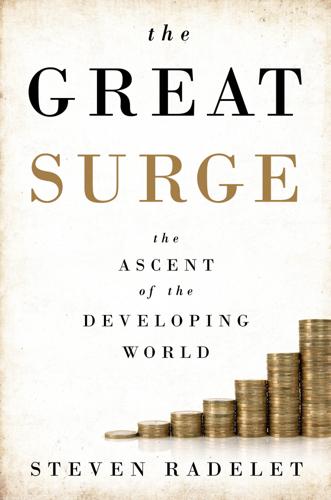
The Great Surge: The Ascent of the Developing World
by
Steven Radelet
Published 10 Nov 2015
Norton, 2002), p. 5; Martin Ravallion, “On the Role of Aid in The Great Escape,” Review of Income and Wealth 60, no. 4 (December 2014): 973; Paul Collier, The Bottom Billion: Why the Poorest Countries Are Failing and What Can Be Done About It (New York, Oxford University Press, 2007), p. 100; Lawrence Summers, quoted on the ONE website, www.one.org/us/press/condoleezza-rice-lawrence-summers-sheryl-sandberg-join-one-board-of-directors-2; Arndt et al., “Aid, Growth, and Development,” p. 23. TEN: FUTURE 1—PROGRESS EXPANDED: A NEW AGE OF GLOBAL PROSPERITY 1. Angus Maddison, The World Economy: A Millennial Perspective (Paris: Organization for Economic Cooperation and Development, 2001). 2. World Economic Outlook: Legacies, Clouds, Uncertainties (Washington, DC: International Monetary Fund [IMF], October 2014), p. 188, www.imf.org/external/pubs/ft/weo/2014/02/pdf/text.pdf; Lant Pritchett and Lawrence Summers, “Asiaphoria Meets Regression to the Mean,” working paper 20573, National Bureau of Economic Research, Cambridge, MA, 2014. 3.

System Error: Where Big Tech Went Wrong and How We Can Reboot
by
Rob Reich
,
Mehran Sahami
and
Jeremy M. Weinstein
Published 6 Sep 2021
An investigation by ProPublica: Ryan McCarthy, “‘Outright Lies’: Voting Misinformation Flourishes on Facebook,” ProPublica, July 16, 2020, https://www.propublica.org/article/outright-lies-voting-misinformation-flourishes-on-facebook. “to provide redress”: Gurbir S. Grewal et al., Attorneys General letter to Mark Zuckerberg and Sheryl Sandberg, August 5, 2020, https://www.nj.gov/oag/newsreleases20/AGs-Letter-to-Facebook.pdf. Keith Rabois: June Cohen, “Rabois’ Comments on ‘Faggots’ Derided Across University,” Stanford Daily, February 6, 1992, https://archives.stanforddaily.com/1992/02/06?page=1§ion=MODSMD_ARTICLE5#article. “expose these freshman ears”: Keith Rabois, “Rabois: My Intention Was to Make a Provocative Statement,” Stanford Daily, February 7, 1992, https://archives.stanforddaily.com/1992/02/07?
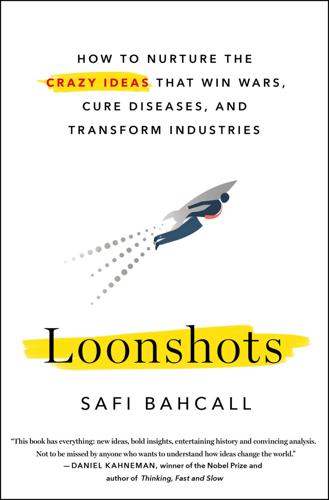
Loonshots: How to Nurture the Crazy Ideas That Win Wars, Cure Diseases, and Transform Industries
by
Safi Bahcall
Published 19 Mar 2019
First Edition: March 2019 * Alex’s name has been changed. For more on his treatment, see the notes. * The term “franchise” is a convenient shorthand used in film and drug discovery and certain other businesses. The reason to use the term will become clearer later. * The word choice is borrowed from a phrase made famous by Sheryl Sandberg. * For business theorists: The two types of loonshots are unrelated to what Louis Galambos in 1992 called “adaptive” vs. “formative” innovations, and Clayton Christensen in 1997 called “sustaining” vs. “disruptive” innovations. For the distinction, see the afterword. * The data sample included over one hundred YouTube concert videos watched by the authors, from which they concluded mosh pits and circle pits “are robust, reproducible, and largely independent of factors such as the musical subgenre, timing of performance, crowd size, arena size, suggestions from the band, time of year, and socioeconomic status of the moshers” (Silverberg et al., “Collective Motion of Humans in Mosh and Circle Pits at Heavy Metal Concerts,” PRL 110 [2013]).
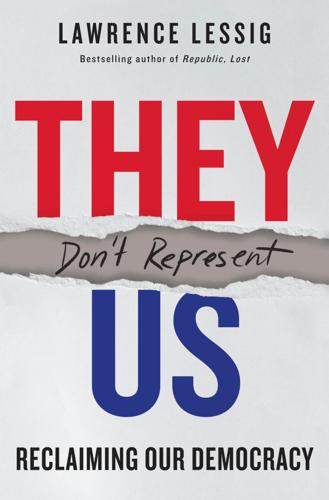
They Don't Represent Us: Reclaiming Our Democracy
by
Lawrence Lessig
Published 5 Nov 2019
Facebook’s initial ethic was identity; unlike MySpace or Friendster, Facebook would take some steps to ensure that you were who you said you were. That was intended initially to help police bad behavior. As philosophers since Plato have recognized, what you do when you are invisible is different from what you do when you know you’re at least traceable. But whatever its intent, these added data were gold. As Sheryl Sandberg, chief operating officer of Facebook, put it, “We have better information than anyone else. We know gender, age, location, and it’s real data as opposed to the stuff other people infer.”98 Facebook thus added to what we could know about you. If you were tied to your identity, then what you did on Facebook produced more accurate data about you than what you did on Google (or at least Google before Gmail).

The Perfect Weapon: War, Sabotage, and Fear in the Cyber Age
by
David E. Sanger
Published 18 Jun 2018
“We have a responsibility to protect your information,” Zuckerberg declared in ads and a series of carefully scripted television interviews. “If we can’t, we don’t deserve it.” The more telling concession came out of France, where the company began announcing a radical experiment. It would begin to fact-check photos and videos around elections, it said—just as news organizations have done for decades. Sheryl Sandberg, the company’s chief operating officer and one of the few executives who had serious Washington experience, offered the most candid assessment: “We really believed in social experiences,” she said. “We really believed in protecting privacy. But we were way too idealistic. We did not think enough about the abuse cases.”

The Firm
by
Duff McDonald
Published 1 Jun 2014
Today Arthur Andersen is gone, and McKinsey has taken its place in the student imagination. It’s for the average Harvard Business School graduate, not the Baker scholars. And, as has always been the case, McKinsey consultants continue to leave for big positions elsewhere. Among others, Facebook chief operating officer Sheryl Sandberg is a McKinsey alumnus, as is Google chief financial officer Patrick Pichette. McKinsey may be a career firm for some, but it tends to lose its best people. In Fortune magazine’s best companies to work for in 2010, all of McKinsey’s main competitors showed up—Boston Consulting Group (number 8), Ernst & Young (44), Deloitte (70), PricewaterhouseCoopers (71), Accenture (74), and KPMG (88).

Plutocrats: The Rise of the New Global Super-Rich and the Fall of Everyone Else
by
Chrystia Freeland
Published 11 Oct 2012
“There are a lot of young entrepreneurs who look at Flip as a huge success, and they should continue to,” Kaplan told the New York Times. “The demise of Flip has nothing to do with how great a product it is. Companies have to make decisions that sometimes people like you and I don’t always understand.” — Sheryl Sandberg, the world’s most successful female executive, is another example of the power of being in the right place at the right time. Sheryl is brilliant—she was one of Larry Summers’s smartest students—and one of the best operating executives around. But the skill that made her fortune is the ability to understand where the action is.

Work Rules!: Insights From Inside Google That Will Transform How You Live and Lead
by
Laszlo Bock
Published 31 Mar 2015
These gently orchestrated encounters aren’t our only trick. We also try to constantly feed new thinking and ideas into the organization. Employees are encouraged to give Tech Talks, where they share their latest work with anyone who is curious. We also bring in star thinkers from outside. Susan Wojcicki and Sheryl Sandberg, a sales VP at the time and now COO of Facebook, were instrumental in growing the concept behind these talks, using their networks and interests to recruit a range of speakers to Google to speak about leadership, women’s issues, and politics. Googlers first self-organized these events into a more formal program in 2006, when they noticed more and more authors visiting to speak with our book-scanning teams.
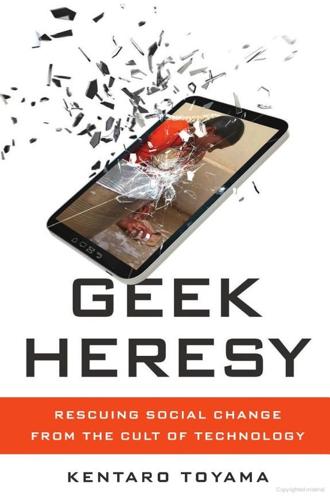
Geek Heresy: Rescuing Social Change From the Cult of Technology
by
Kentaro Toyama
Published 25 May 2015
“We organize women engineers to mentor girls from urban slums in computer programming and entrepreneurial skills.” Agyare’s work has not gone unnoticed. She has been crowned with laurels by the World Economic Foundation, the Aspen Institute, and Hillary Clinton’s Vital Voices Fellowship. Facebook executive Sheryl Sandberg wrote about Agyare in Lean In for Graduates.1 And in 2014 Agyare was selected for the Young African Leaders Initiative begun by President Barack Obama. In previous chapters, I’ve discussed the best ways to deploy packaged interventions and to nurture the intrinsic growth needed to implement them.

Samsung Rising: The Inside Story of the South Korean Giant That Set Out to Beat Apple and Conquer Tech
by
Geoffrey Cain
Published 15 Mar 2020
The ad was widely derided as sexist and tone-deaf. In shock at the cultural insensitivity of the South Korean headquarters, two of Pendleton’s marketers told me that they had hoped the company was beyond that. “In the middle of a red-hot conversation about women in technology, the resurgence of equal-pay discussion, and Sheryl Sandberg reigniting the very concept of feminism in America,” wrote CNET’s Molly Wood, “Samsung delivered a Galaxy S4 launch event that served up more ’50s-era stereotypes about women than I can count, and packaged them all as campy Broadway caricatures of the most, yes, offensive variety. “To be fair, everyone in Samsung’s bizarre, hour-long parade of awkward exchanges, forced laughs, and hammy skits was a stereotype.
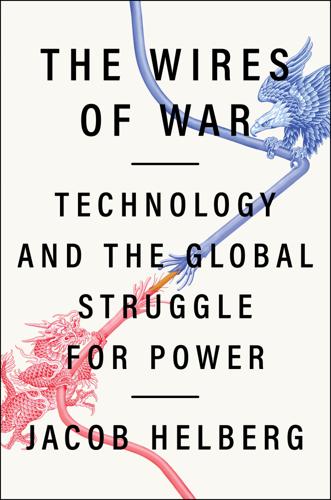
The Wires of War: Technology and the Global Struggle for Power
by
Jacob Helberg
Published 11 Oct 2021
Kevin Bankston, the director of the Open Technology Institute at the New America foundation, pronounced it “easily the most ludicrous, dangerous, technically illiterate proposal I’ve ever seen” in nearly two decades of working in tech policy.56 While Congress once had in-house experts—an Office of Technology Assessment analyzing scientific legislation much like the Congressional Budget Office analyzes the financial ramifications of bills—that expertise was eliminated in 1995 as part of House Speaker Newt Gingrich’s shrinking of government.57 In the Gray War, ignorance isn’t bliss. It’s dangerous. Here, again, that ignorance goes both ways. Few Silicon Valley entrepreneurs spend much time in DC or even bother learning how the nation’s capital works. Sheryl Sandberg, Facebook’s chief operating officer and a onetime chief of staff to the U.S. secretary of the Treasury, is the rare tech executive with extensive experience on both coasts. Silicon Valley CEOs are prepped on how to anticipate and respond to questions in a congressional hearing. But hardly any seem to understand the broader geopolitical questions that occupy members of the political and national security establishment.
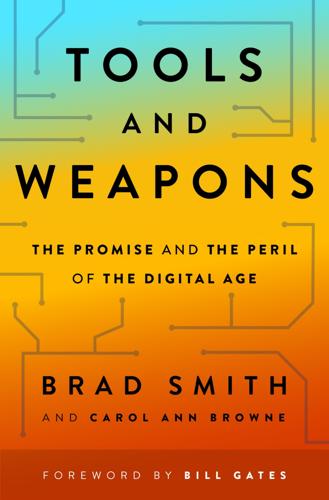
Tools and Weapons: The Promise and the Peril of the Digital Age
by
Brad Smith
and
Carol Ann Browne
Published 9 Sep 2019
It was a bit like telling baseball fans that they could go to an event that included the national anthem, a hot dog eating contest, and the first game of the World Series. We all knew what brought us to Washington on that cold winter morning. An all-star cast of tech leaders arrived at the West Wing, including Apple CEO Tim Cook, Google chairman Eric Schmidt, Facebook COO Sheryl Sandberg, Netflix CEO Reed Hastings, and a dozen others. Most of us already knew each other. Eight of our companies—virtually all competitors—had just come together to create a new coalition, called Reform Government Surveillance, to work together on precisely the issues we were there to discuss. After a round of enthusiastic greetings, we put our smartphones in a rack of cubbies in the hallway and filed into the Roosevelt Room.

Greater: Britain After the Storm
by
Penny Mordaunt
and
Chris Lewis
Published 19 May 2021
Looking at the results of the study, Dr Martin speculated that the discrepancy could be explained by the higher rate of unpaid work that women do: ‘They simply don’t have as much time to spend commenting on news websites.’81 She suggests that online commentary is a microcosm of the everyday difficulties women face in getting their voices heard: ‘It appears our experience of online conversations is reflecting our gendered experiences of the world at large. Just like in face-to-face public conversations, like meetings or forums, women are being put off by male voices being adversarial, dismissive and sometimes abusive.’82 In 2015, Adam Grant (Wharton Business School) and Sheryl Sandberg (Facebook) teamed up to write an opinion piece in the New York Times entitled ‘Speaking while female’. In it, they listed several studies that show how the spoken contributions of women in the workplace are consistently undervalued. It’s not just that women are interrupted more frequently than men; it’s that their ideas, contributions and data are more likely to be discounted entirely.

The Powerful and the Damned: Private Diaries in Turbulent Times
by
Lionel Barber
Published 5 Nov 2020
They will be the last to know. 18–23 OCTOBER Nick Clegg calls me from London as I’m in the middle of a Californian breakfast, full of fruit and muesli, talking to a tall man who knows all about artificial intelligence and its impact on journalism. ‘What’s up, Nick?’ To my amazement, he says he’s joining Facebook as a senior adviser to Mark Zuckerburg. My first question is how much influence he will really have in a company where ‘Zuck’ and Sheryl Sandberg run the show. The company’s reputation is in the basement after the Cambridge Analytica affair.fn12 I’ve watched Zuck on stage and he’s tone deaf. I’ve dealt off and on with Sheryl for almost 20 years and she’s worse than tone deaf. She doesn’t give a flying fig about what other people think, because she assumes, sometimes correctly, that she’s ten times smarter than everyone else in the building.

Selfie: How We Became So Self-Obsessed and What It's Doing to Us
by
Will Storr
Published 14 Jun 2017
As veteran tech reporter Dan Lyons has observed, employees there are often reminded that the company they serve is not their ‘family’ but their ‘team’. This definition was introduced by Netflix in 2009 and has since spread rapidly throughout the sector. ‘The Netflix code inspired a generation of tech start-ups and “may well be the most important document ever to come out of the Valley,” Facebook COO Sheryl Sandberg once said,’ writes Lyons. ‘The result, according to countless articles in publications like Fortune, the New Republic, Bloomberg and New York Magazine, is that Silicon Valley has become a place where people live in fear. As soon as someone better or cheaper comes along, your company will get rid of you.
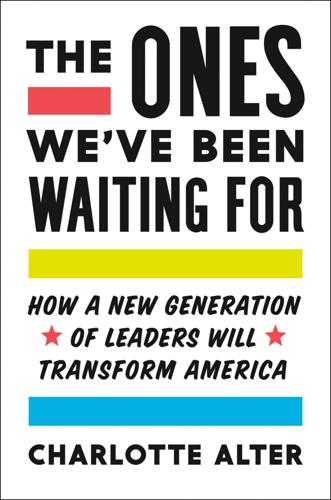
The Ones We've Been Waiting For: How a New Generation of Leaders Will Transform America
by
Charlotte Alter
Published 18 Feb 2020
“I think she’s used to being in a room where she’s got to be really on top of things.” After graduation, she shot straight up the GOP ladder, first in the Bush White House on the Domestic Policy Council Staff and in the Chief of Staff’s office, then the Romney campaign. For Elise, Romney’s loss was a make-or-break moment. She had read Sheryl Sandberg’s Lean In and knew that women had to put themselves forward or risk getting left behind. “Either I was going to take a total step back and do something completely separate from politics, or I can try to be part of the solution,” she told me years later. “And instead of complaining about our lack of ability to reach out to young women, I can try to do something about it.”

Competition Overdose: How Free Market Mythology Transformed Us From Citizen Kings to Market Servants
by
Maurice E. Stucke
and
Ariel Ezrachi
Published 14 May 2020
The longer and more often a child plays Fun Kid Racing, for example, the more personal data about that child becomes available to both Tiny Lab and Google, the more behavioral ads they can test on the child, and the more skillfully they can target the child (and the child’s parents) with ads. This is how both the app developer and the Gamemaker can make a profit even from free apps. All that personal data enables highly sophisticated targeting—of advertising, sales pitches, products, and pricing. As Facebook’s chief operating officer Sheryl Sandberg explained in a January 2018 earnings call with investors, its “dynamic ads” are another way to target. Suppose, for example, people searched the Holiday Inn website looking for a room in a given city on a given date, but did not book a room. Using the data it had collected about those people from their browsing history, Facebook helped Holiday Inn Express target them with videos that showed them “a personalized selection” of Holiday Inn hotels for that very city and those exact dates.

Surveillance Valley: The Rise of the Military-Digital Complex
by
Yasha Levine
Published 6 Feb 2018
Multiplied by hundreds of millions of searches a day, even a tiny increase in the probability that a searcher would click an advertising link dramatically boosted company revenue. Over the coming years, Google became hungry for more and more data to refine the efficacy of the ad program. “The logs were money—we billed advertisers on the basis of the data they contained,” explained Douglas Edwards.42 Indeed, money began raining from the sky. In 2001, Google hired Sheryl Sandberg, a former chief of staff for President Bill Clinton’s Treasury secretary Larry Summers. She was tasked with developing and running the advertising business side of things, and she succeeded beyond anyone’s expectations. With a targeted system based on user behavior, advertising revenue shot up from $70 million in 2001 to $3.14 billion in 2004, the bulk of it resulting from simply showing the right ad at the right time to the right eyeballs.43 It was like a new form of alchemy: Google was turning useless scraps of data into mountains of gold.44 Barbecued Girl Meat As Google engineers wrung personal information from their growing millions of users, executives worried the smallest disclosure regarding the operation could trigger a fatal public relations disaster.
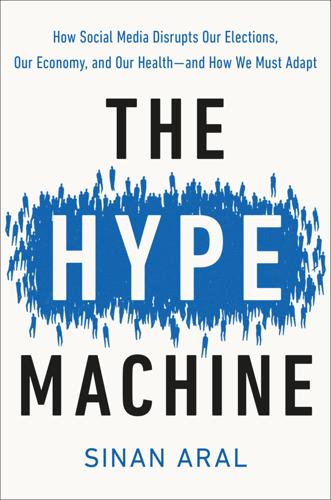
The Hype Machine: How Social Media Disrupts Our Elections, Our Economy, and Our Health--And How We Must Adapt
by
Sinan Aral
Published 14 Sep 2020
In 2018 and 2019 it floated several conflicting ideas about how it was going to chart a course to smoother waters. First it was going to stay the course and tweak the platform, using AI and content moderators to root out harmful content, improve data portability, and pay attention to consumers’ privacy. But its public pronouncements fell on deaf ears. So Facebook COO Sheryl Sandberg floated the idea of abandoning the advertising model altogether and charging a monthly fee for Facebook services instead. Consumers were again not impressed. So in March 2019, Mark Zuckerberg announced that Facebook would unify its messaging apps and become a private, encrypted messaging platform, similar to WeChat in China.

Power Play: Tesla, Elon Musk, and the Bet of the Century
by
Tim Higgins
Published 2 Aug 2021
Barnard brought in Tesla’s top-performing sales members from around the U.S. and videotaped their approach, as part of a training program that would go out to the global sales force. Musk decided he needed an executive to handle non-engineering tasks, the things that bored him and that he had handed over to Blankenship years earlier. He approached Sheryl Sandberg, the chief operating officer at Facebook Inc., about becoming his COO at Tesla. She demurred, instead recommending Jon McNeill, a friend of her late husband. McNeill was different from many of the other big hires in recent years. He was an entrepreneur who understood the kinds of risk-taking required in a startup.

Doppelganger: A Trip Into the Mirror World
by
Naomi Klein
Published 11 Sep 2023
On the contrary, just as Bill Clinton and Tony Blair moved their respective parties away from policies that championed universal public services and redistribution of wealth toward a pro-market, pro-militarism “Third Way,” Wolf’s version of third-wave feminism charted a path to the center, one that had little to offer working-class women but promised the world to white, middle-class, highly educated women like her. Two decades before Sheryl Sandberg’s Lean In, Wolf published her second book, Fire with Fire, which called on feminism to drop the dogma and embrace the “will to power.” She took her own advice. Rather than building power inside the women’s movement, as her feminist foremothers had done, Wolf launched herself like a missile into the heart of the liberal establishment in both New York City and Washington, D.C.

Like, Comment, Subscribe: Inside YouTube's Chaotic Rise to World Domination
by
Mark Bergen
Published 5 Sep 2022
Credited for its invention, she was given a Google “Founders’ Award,” a retention bonus meant to compensate staff as if they had formed their own company. Google could count the women in its c-suite on one hand. Wojcicki was one. And yet others from this elite group were getting far more public attention. Sheryl Sandberg, a Google saleswoman, had taken the number-two job at Facebook. Sandberg, a natural politician, held regular soirees at her home in Silicon Valley, and the Facebook position earned her flattering magazine profiles and accolades. She was No. 22 on Fortune’s 2009 power rankings. Also on their list was Marissa Mayer, Google’s product czar and one of the company’s colloquial “mini-founders” along with Wojcicki.

When McKinsey Comes to Town: The Hidden Influence of the World's Most Powerful Consulting Firm
by
Walt Bogdanich
and
Michael Forsythe
Published 3 Oct 2022
McKinsey’s own robust earnings make it possible for the firm to run a private hedge fund for senior partners, with large parts of its roughly $31.5 billion in assets under management concealed behind a tangle of shell companies on an island tax haven in the English Channel. McKinsey’s reputation is enhanced by the success of its former consultants, including Tom Cotton, the conservative U.S. senator from Arkansas; Pete Buttigieg, U.S. secretary of transportation; Bobby Jindal, former governor of Louisiana; Sheryl Sandberg of Facebook; Lou Gerstner of IBM and American Express; and James P. Gorman of Morgan Stanley and Merrill Lynch. Outside the United States, McKinsey’s alumni have also reached exalted positions, including Kirill Dmitriev, head of Russia’s sovereign wealth fund; William Hague, Britain’s former foreign secretary; and the former Credit Suisse CEO Tidjane Thiam.

Make Your Own Job: How the Entrepreneurial Work Ethic Exhausted America
by
Erik Baker
Published 13 Jan 2025
See also Hester Eisenstein, Feminism Seduced: How Global Elites Use Women’s Labor and Ideas to Exploit the World (London: Routledge, 2015). 37Amoruso, #GIRLBOSS, 184–185. 38Amoruso, #GIRLBOSS, 11, 119, 197. 39Molly Young, “Be Bossy: Sophia Amoruso Has Advice for Millennials and a Bone to Pick with Sheryl Sandberg,” The Cut, May 26, 2014. 40Samhita Mukhopadhyay, “The Girlboss Is Dead. Long Live the Girlboss,” The Cut, August 31, 2021. 41Heather Berg, Porn Work: Sex, Labor, and Late Capitalism (Chapel Hill: University of North Carolina Press, 2021), 2. 42Mukhopadhyay, “The Girlboss Is Dead”; Maggie McGrath and Alexandra Sternlicht, “Why Female Entrepreneurs Welcome the End of the Girlboss Era—Once and for All,” Forbes, June 28, 2022; Sophia Amoruso, tweet: “Please stop using the word Girlboss thank you,” June 1, 2022, https://twitter.com/sophiaamoruso/status/1532092221654126592 43The Editors, “The Feminism We Need,” Lux 1 (Spring 2021).
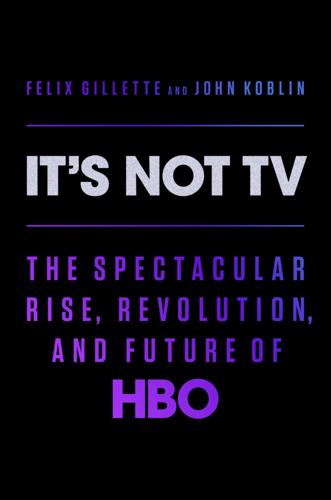
It's Not TV: The Spectacular Rise, Revolution, and Future of HBO
by
Felix Gillette
and
John Koblin
Published 1 Nov 2022
They know that the history of the past several centuries has dealt them an unfair advantage. But they feel unsure about what to make of their privilege. What responsibility do they have for the crimes of their ancestors? How are they to play their winning hand? One evening, Nicole (Connie Britton), a Sheryl Sandberg–like executive, asks her daughter’s friend Paula (Brittany O’Grady) a question. Why, she wants to know, did Paula leave dinner so abruptly the previous night? Before Paula can answer, Nicole’s daughter, Olivia (Sydney Sweeney), jumps in. Olivia explains that her friend, who is one of the only vacationers of color, was “disturbed” by the resort’s hula-dancing ceremony.

Rocket Dreams: Musk, Bezos and the Trillion-Dollar Space Race
by
Christian Davenport
Published 6 Sep 2025
In the garish, Vegas casino–like lobby of Trump Tower, the press was cordoned off behind a red velvet rope, within view of the building’s golden-hued elevators. From there they could film and photograph those CEOs whom Trump deemed worthy of an invitation. In all, about a dozen made the cut, including Tim Cook of Apple, Sheryl Sandberg of Facebook, and Larry Page and Eric Schmidt of Alphabet, all looking somewhat uncomfortable as reporters shouted questions and recorded every gesture until the elevator doors mercifully closed. C-SPAN, the dedicated chronicler of Washington minutiae, installed a Trump lobby cam, offering live coverage as the cortege of CEO suitors arrived.
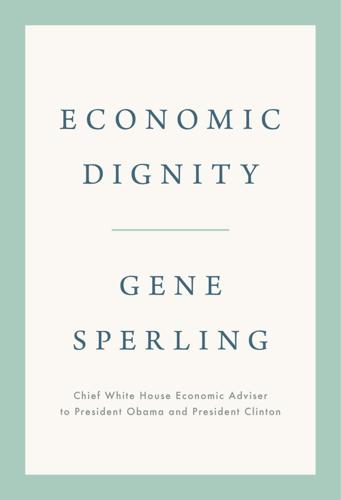
Economic Dignity
by
Gene Sperling
Published 14 Sep 2020
These include, but are not limited to, Larry Mishel, Tom Kalil, LaPhonza Butler, Sasha Post, Neera Tanden, Thea Lee, Ron Klain, Bill Godfrey, Felicia Wong, Michael Calhoun, Bob Reich, Judy Lichtman, Andrew Kassoy, Wade Henderson, Jackie Woodson, Brian Highsmith, Joe Sanberg, John Podesta, Pauline Abernathy, Rick Samans, Meeghan Prunty, Bob Greenstein, Josh Steiner, Dan Porterfield, Barry Lynn, Sarah Bianchi, Sarah Miller, Samantha Power, Victoria Palomo, Leo Gerard, Tom Conway, Kelly Friendly, Rebecca Winthrop, Monique Dorsainvil, Liz Fine, Michael Shapiro, Jason Miller, Nick Merrill, Sheryl Sandberg, and Trelaine Ito. After all this time, I still often ask what Chris Georges would think on so many issues—and am grateful to have his parents, Jerry and Mary Georges, still in my life. A special thanks to Cass Sunstein, the most prolific book author most of us know, for his passion for the concept of dignity and his advice and early encouragement of me writing this book.
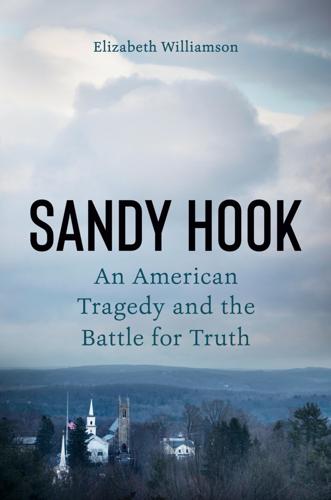
Sandy Hook: An American Tragedy and the Battle for Truth
by
Elizabeth Williamson
Published 8 Mar 2022
Every day on his show he slammed “evil” big media and tech, and implored the president to help him. Trump tweeted, “Social Media is totally discriminating against Republican/Conservative voices. Speaking loudly and clearly for the Trump Administration, we won’t let that happen.” Congress summoned Twitter co-founder Jack Dorsey and Sheryl Sandberg, Facebook’s chief operating officer, to Capitol Hill. Tech companies’ power to censor online political speech concerned Americans across the political spectrum. But many conservatives saw blasting the companies for alleged bias as a useful distraction from the fact that 2016 misinformation from Russians and others had mostly benefited Trump, not the left.

We Are the Nerds: The Birth and Tumultuous Life of Reddit, the Internet's Culture Laboratory
by
Christine Lagorio-Chafkin
Published 1 Oct 2018
That evening, those closest to the Ohanians and the Williamses gathered for a private dinner cooked by celebrity chef Emeril Lagasse. It was a complete commingling of Silicon Valley, Hollywood, and professional sports. Chris and Kristen Slowe sat next to tennis great Caroline Wozniacki and also chatted with Sheryl Sandberg. A long slate of toasts brought laughter and tears—particularly those by Williams, and by Ohanian’s dad, Chris. Huffman was present, but didn’t give a toast; he’d decided too late—that very day. He was told it didn’t fit the schedule. The party extended late into the evening and morphed into a welcome party as more guests arrived in New Orleans for the ceremony the following day.
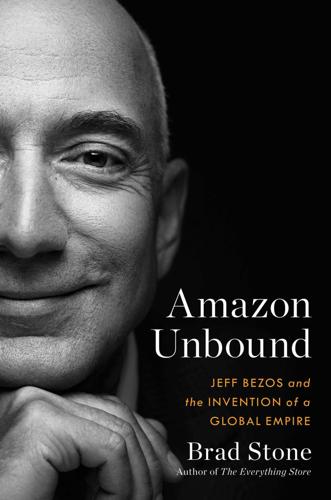
Amazon Unbound: Jeff Bezos and the Invention of a Global Empire
by
Brad Stone
Published 10 May 2021
“How many new sales people are we going to have carrying account executives’ luggage next year?” he cracked. Amazon rejected other industry norms as well. The CEOs and chief marketing officers of firms like Procter & Gamble wanted to meet their C-Suite counterparts at the companies where they spent their ad dollars. At Facebook, big advertisers could expect to sit-down with COO Sheryl Sandberg, for example. But aside from a breakfast one year with advertisers and ad agencies, Bezos declined to play that game; and Wilke and Jeff Blackburn, the S-team member who managed the advertising group for years, were also reluctant (though Wilke did once greet the CMO of Burberry wearing his blue Burberry blazer).
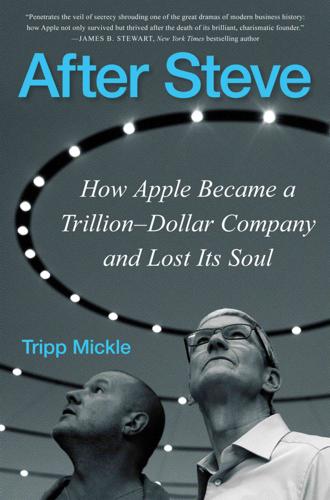
After Steve: How Apple Became a Trillion-Dollar Company and Lost Its Soul
by
Tripp Mickle
Published 2 May 2022
The public blowback had led the multinationals to become distant and adversarial. The Obama administration wanted a reset. Upbeat about the continued strength of the iPhone and rapid growth of Apple Music, Cook was emboldened and prepared to fight. He entered a bland room with no windows and took a seat at a conference table alongside his peers, including Facebook COO Sheryl Sandberg and Twitter chairman Omid Kordestani. The contingent from Washington sat opposite from them and opened a discussion that included asking the tech leaders for help hiring social media specialists to assist government efforts to disrupt terrorist recruitment. Cook remained largely silent until the conversation shifted to encryption.
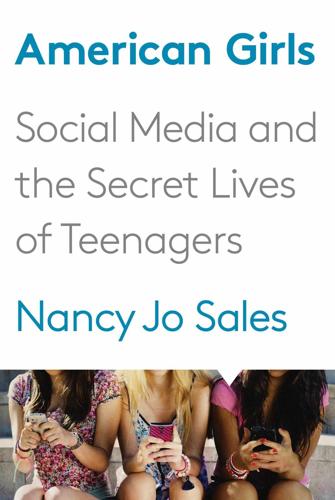
American Girls: Social Media and the Secret Lives of Teenagers
by
Nancy Jo Sales
Published 23 Feb 2016
In 2009, the National Center for Women & Information Technology reported that 56 percent of women with STEM expertise leave the industry midway into their careers. “They are seeing they cannot have the careers they want in this industry,” Karen Catlin, a former vice president of Adobe Systems, told Fusion in 2015. With the exception of some notable examples, such as Sheryl Sandberg, COO of Facebook; Marissa Mayer, CEO of Yahoo!; and Meg Whitman, CEO of Hewlett Packard, there are few highly placed female executives in Silicon Valley. In the digital revolution, which has provided so many job opportunities and seen the start of so many businesses and empires, men have reaped most of the profits.

The Aristocracy of Talent: How Meritocracy Made the Modern World
by
Adrian Wooldridge
Published 2 Jun 2021
Senior politicians slide effortlessly into the private sector and are soon raking in the cash from industries that they recently regulated. George Osborne, Britain’s former Chancellor of the Exchequer, gets paid £650,000 by Black Rock for four days’ work a month. Sir Nick Clegg, Britain’s former deputy prime minister, works for Facebook as head of its global affairs and communications team. Sheryl Sandberg, Facebook’s COO, who got her start in life working as chief of staff for Larry Summers when he was head of the US Treasury, celebrated Sir Nick’s appointment as someone who ‘understands deeply the responsibilities we have to people who use our services around the world’. THE NEW FLASHPOINTS The rise of populism changed the great flashpoints of politics from economics pure and simple (who gets what?)
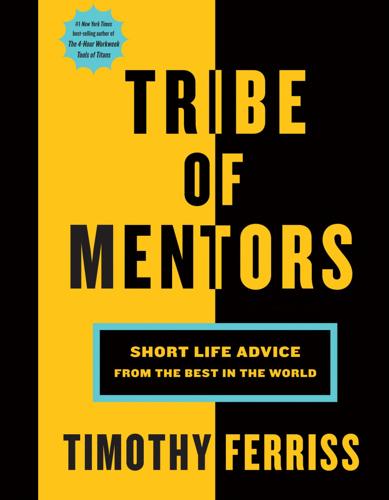
Tribe of Mentors: Short Life Advice From the Best in the World
by
Timothy Ferriss
Published 14 Jun 2017
Thinking of things that made me happy helps me put aside all the baggage I’ve packed throughout the day, and it helps me focus on what’s really important, like jumping in Lake Winnipesaukee with my three girls or getting a random text from my husband telling me I’m beautiful. A colleague gave me the idea and said she had heard it from Sheryl Sandberg. I know I’m supposed to write these things down (and writing them down is an important exercise), but I have three kids, aged 11, 9, and 7, and I train at midnight, so I do the best I can. In the last five years, what have you become better at saying no to? What new realizations and/or approaches helped?
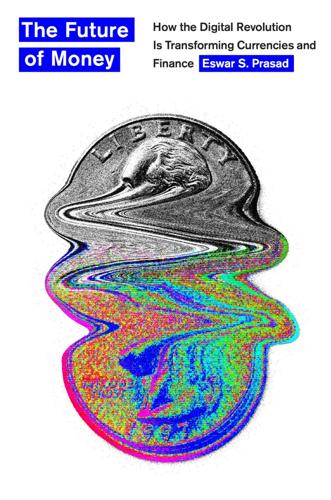
The Future of Money: How the Digital Revolution Is Transforming Currencies and Finance
by
Eswar S. Prasad
Published 27 Sep 2021
He noted that libraries “don’t contain every book, but they still provide a world of good” and that “public hospitals don’t offer every treatment, but they still save lives.” In 2015, the project was rebranded as Free Basics and opened up to developers and other apps. And for millions of people in low-income countries, the Facebook app remains the gateway to the internet. As Facebook CEO Sheryl Sandberg put it (somewhat chillingly), “People actually confuse Facebook and the internet in some places.” While the major advanced economies that issue the world’s dominant hard currencies have less to fear from Diem and might well come to see it as providing useful innovations in retail payments, the same cannot be said of other countries.

Future Crimes: Everything Is Connected, Everyone Is Vulnerable and What We Can Do About It
by
Marc Goodman
Published 24 Feb 2015
While privacy may no longer be the norm—at least for the general public—in his own life, Mr. Zuckerberg seems to treasure privacy quite a bit. In late 2013, it was revealed that the Facebook CEO spent $30 million to buy the four homes surrounding his own property in order to ensure his privacy would remain free from intrusion or disturbance. Facebook’s chief operating officer, Sheryl Sandberg, too has suggested that your assertion of any privacy rights is in contrast with “true authenticity.” Sandberg notes that “expressing authentic identity will become even more pervasive in the coming years … And yes, this shift to authenticity will take getting used to and it will elicit cries of lost privacy.”